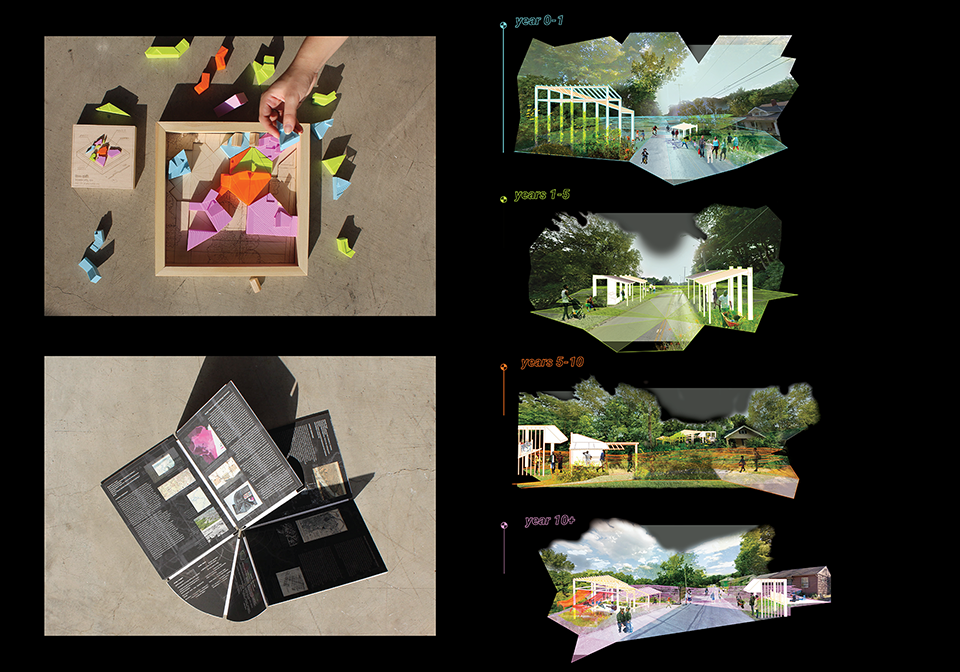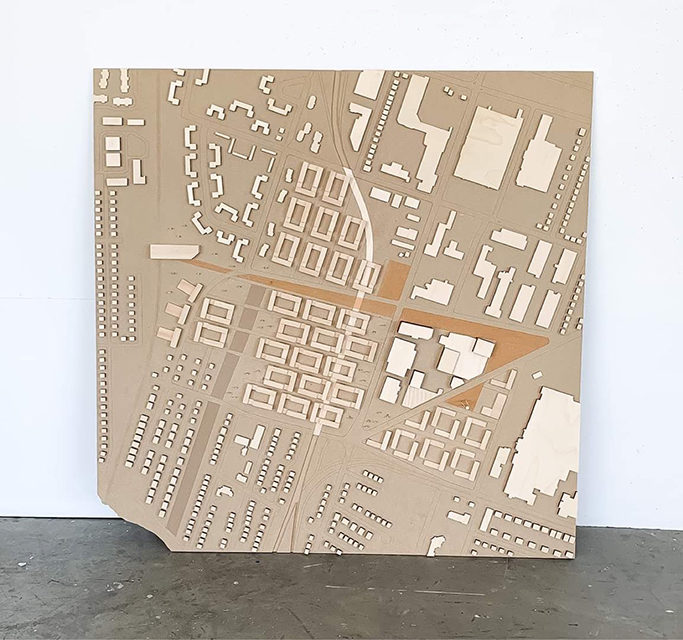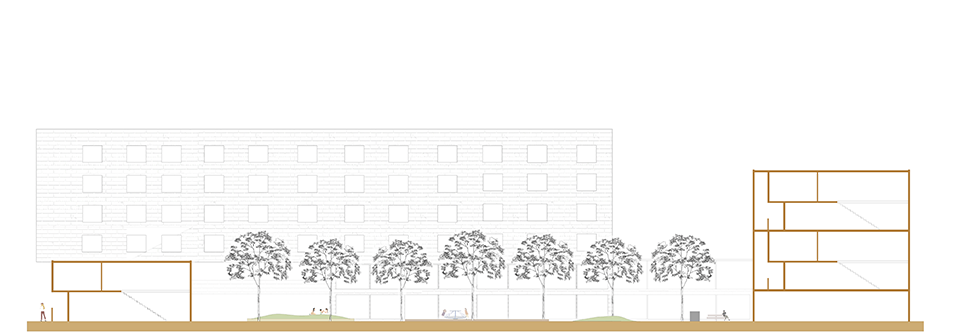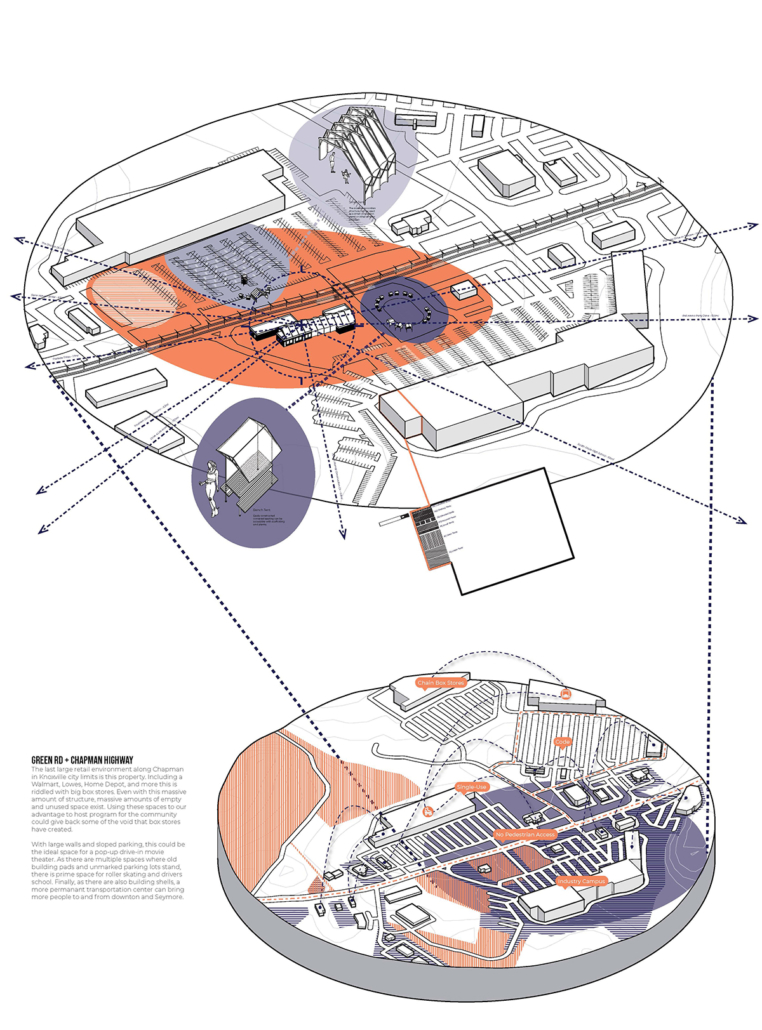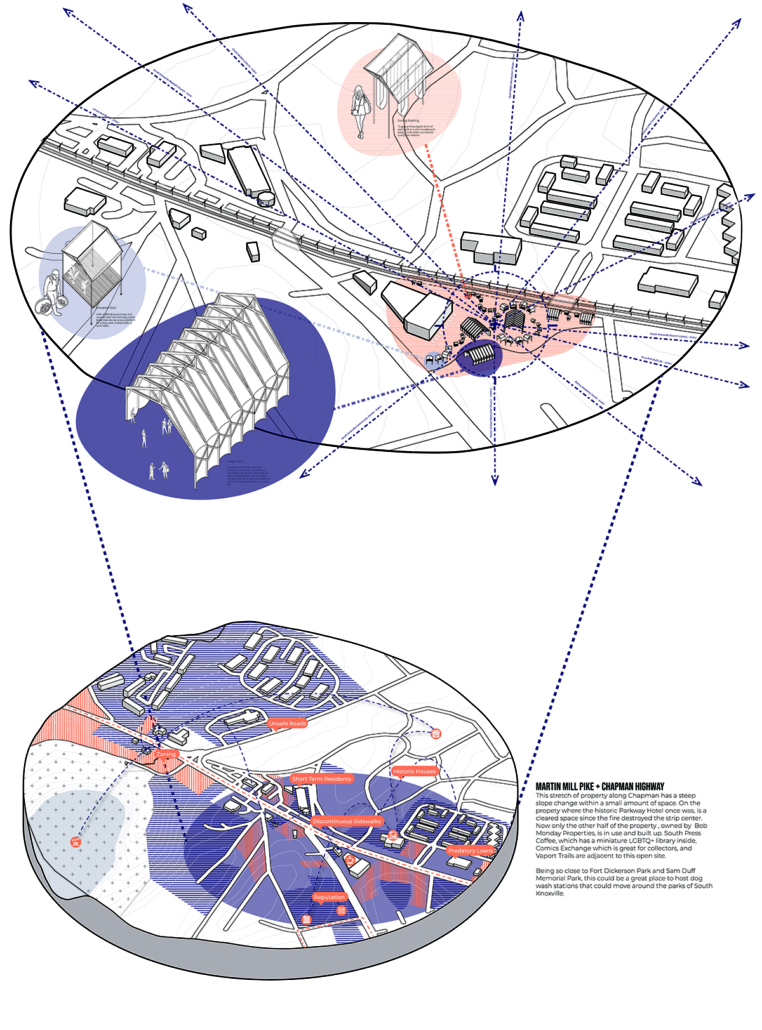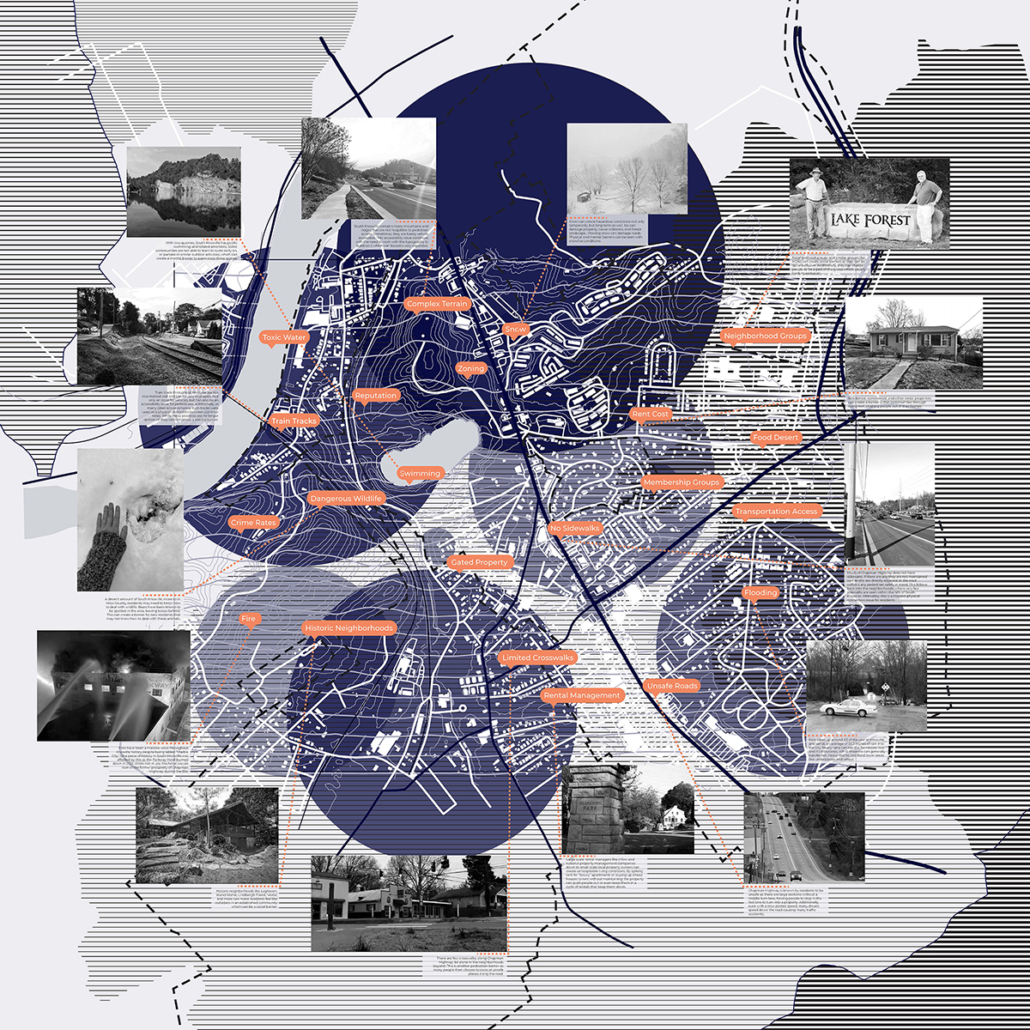Posts
2023 Study Architecture Student Showcase - Part I
Welcome back to the Study Architecture Student Showcase fall series!
We put out a call over the summer for student work and received a record number of submissions – thank you to everyone who participated. With the Fall semester in full gear, we are excited to share the most outstanding projects with you over the next few months. To give you an insight into what it is like to study architecture, we will take a closer look at student thesis and capstone work from 2023.
Throughout the Student Showcase series, we will feature work from recent graduates of ACSA member schools from across the globe. These projects will highlight an array of topics and explorations, ranging from building designs focused on women empowerment or climate change to research on biomaterials and much more. Tune in every week for a new installment focused on a specific topic.
This week we take a look at projects that are aimed at combatting the issue of flooding, which we are seeing rise in frequency across the globe. In the last few weeks alone, we have seen extreme examples of just how damaging floods can be. The work below focus on how we can improve the flood protection process.
Urban Flooding Reuse for Addis Ababa (Ethopia) by Michael Clifton, B.Arch ’23
Tulane University | Advisor: Ruben Garcia-Rubio
The Urban Flooding Reuse Proposal is intended to create a way for residents of the river meander to live with and reuse flood water for their own benefit. This is a response to a high population of Addis Ababa’s (Ethiopia) residents living in highly vulnerable areas to flooding and a high amount of housing being built from weaker materials like mud and wood. These two problems that exist in the city lead to dangerous living conditions with flooding in a city that experiences plenty of rain and flooding yearly—and is projected to see much more in the future due to climate change.
Creative Triggering by Christine Chen, Meichen Duan, Ji Hyun Hwang, Jing Kang, Hong Ke, Wanshan Li, Zhe Li, Xinru Liu, Hoi Yau Lo, Ankita Mallick, Weixuan Wang, Ruijie Zhang, Wenhao Zhang, M. Arch ’23
University of Melbourne | Advisor: Justyna Karakiewicz & Theo Blankley
This studio takes the site of Australia’s largest major urban regeneration project – located at Melbourne, Fishermans Bend – which is over 480 hectares of land directly adjacent to the CBD. We propose the future of the precinct in light of ecological, environmental, structural and social changes across staged developments into the next century.
The Fishermans Bend precinct has its challenges. Much of it is threatened by flooding. A significant portion of the land is heavily contaminated by previous industrial users. We have learned that the quick fixes we often employ are based on misinterpreting symptoms for causes as we try to address current problems. We can observe that our quick interventions distract us from doing the deeper work needed that might lead to a better world for the planet, for all species and the environment, rather than just for the electorate.
By 2025, the Stage 1 will be completed and will feature large scale facilities for advanced manufacturing, fabrication, testing and prototyping with large scale collaborators such as the University of Melbourne, Boeing, Tesla, and others. By 2050, the Victorian Government proposes there will be 80,000 residents and employment for up to 80,000 people. Looking forward, we know that by 2100, much of Fishermans Bend could be under water, even under the most moderate predictions for sea level rises. We know that most of the surface soil is toxic. This combination of toxic land and flooding does not suggest that this is suitable place to live.
Combining Slow, Medium and Fast approaches, the propositions are illustrated by small, medium and large projects. These include two urban infrastructure strategies, and eight architectural projects.The works shown here illustrates an incremental development, with Stage 1 in 2025-2030, Stage 2 in 2030-2050, and Stage 3 in 2050-2100. Students worked collaboratively and developed programs and outcomes that interconnected and linked with each other – as evidenced in the final panels showing relationships between proposals and how one project may ‘trigger’ another.
Instagram: @msdsocial, @msd.gallery, @theoblankley, @meichend_, @lohoiyau, @ankitamallick,
BQE Hydrology Hub by Emma Mangels, B.Arch ’23
New York Institute of Technology | Advisor: Evan Shieh
The re-imagination of the Gowanus Canal aims to address the environmental and hydrological issues facing the Gowanus Canal at the local scale and the surrounding neighborhoods of Brooklyn at the borough scale. The Gowanus Canal and the surrounding neighborhood of Red Hook has been a highly-contested area due to the status of the waterway being declared a superfund site. As well as flooding occurring on the shoreline and also in-land which can be traced back to the out-dated combined sewer outflow system or CSO feeding into the canal.
To address this issue, a “Hydrology Hub” will be created at the crossing of the Brooklyn Queens Expressway (BQE) at the local scale to clean water in an efficient manner and reduce in-land flooding as well as making the water filtration process visible to the community. The hub will allow for people to follow the newly designed circular system of water filtration that uses both natural and man-made processes. The filtration circulation will bring the person down to the canal level where a walkable park will take over the current hard-edge of the canal. In order to protect the new in-land system, the borough scale will include the implementation of a soft shoreline to slow erosion and provide habitats for flora and fauna, creating a “kit of parts” to foster an environmentally resilient community while also placing an emphasis on circular systems of water.
Instagram: @mangels.arch, @ev07
Island Revitalization by Kelly Zheng, B.Arch ’23
New York Institute of Technology | Advisor: Farzana Gandhi
Coney Island is a peninsula that sits in the southern part of New York City. The site is a smaller scale of NYC that demonstrates the environmental problems that the city faces. It is an area full of residential structures and commercial businesses.
Coney Island suffers from bad air quality, urban heat, flooding, and poor water management, causing bad living quality and health risks. These issues should not be understood and treated separately. They are all part of a reciprocal ecosystem where one problem typically worsens another.
It is essential to develop a holistic and comprehensive integrated solution that makes Coney Island more livable today and far into the future. The proposal is inspired by such solutions found around the world and at multiple scales from masterplan to kiosks.
Coney Island was originally a collection of islands and shifting sand, with inlets connecting the islands during low tide periods. In the late 1700s, the sand-shifting movements closed the inlets, so the residents filled in the space and connected the islands into one whole island. Coney Island Creek was the water body that separated Coney Island from the mainland. Over time, the island expanded due to natural and manmade activities such as sand shifting or landfilling.
The proposal reintroduces the creek, forming additional routes for water flow. Additional canals will be integrated, dividing the island into 3 mini-islands. This development isolates the island’s midsection, the portion that will be most likely affected by flooding. The isolation prevents water overflow from entering the surrounding inland areas. The middle mini-island will be redeveloped as an amusement island, and be designed as a sponge park to absorb flooding or overflowing water.
Recreational areas and water management systems are incorporated into the islands, rapidly expanding the amount of green and blue to decrease the environmental risks. Real-time visual notifications and warning systems are integrated into the streets, using lights, sounds, and kiosks to educate people about environmental factors and give alerts for safety threats. The strategies and real-time data systems work together to build a stronger, low-vulnerable community for citizens and visitors.
Instagram: @kellyzhangarch
Replacement by Zoe Holiday, B.Arts ’23
Savannah College of Art and Design | Advisor: Gordon Nicholson
Replacement is a Community Center located in Wilmington Island, GA. The site is nestled between an elementary school, a fire station, and two churches. A walking path alongside a main road accessing the site encourages pedestrian and vehicular engagement. The proposed community center – Replacement – will do just that by superimposing a new structure of CMU while maintaining the existing concrete structure. The main concrete columns will be inverted to create void where there was once a solid. The exterior faces of the new structure take shape from the radii of the trees defining the current landscape.
The building’s approach to water was integral to the form of the roof and interior courtyard. The two form a connected system of water collection through phytoremediation, water retention, and overflow channels that are capable of managing storm water and flooding. Replacement aims to become a shelter and everyday hub for the Wilmington Island community.
Water Wise Wrapper by Debdeep Dam, M.Arch ’23
University of Southern California | Advisor: Lisa Little
California and the world at large have been facing tumultuous weather patterns. Respite from long-term drought comes in the form of devastating floods.
Throughout history, humans have had a symbiotic relationship with natural sources of water; often carrying both cultural and spiritual significance. Unfortunately, modern city-making has been oriented toward over-engineered city planning because modern cities have had access to uncontested water resources without regard to ecosystems or context. The modern city treats stormwater as a nuisance; something to be drained away out of sight even though water scarcity has become so real an issue that architectural systems that try to mitigate this by having systems in place for water conservation, collection, cleaning, and reuse should be adopted by all buildings.
With the increasing commodification of clean potable water and gross exploitation of this natural resource, it has become imperative to explore options for democratically using, storing, and distributing this natural resource.
“Water-Wise Wrapper attempts to bring this crucial subject to the forefront of urban living while advocating for a system that can leverage the vast vertical landscapes of the modern city and act like a sponge: absorbing or releasing water when needed and releasing it when required. This thesis proposes a system that physically stores and releases water while also acting as a visual representation of the scarcity of this vital resource.
This project won the USC Master of Architecture Innovation in Directed Design Research Award. In recognition of the most outstanding graduate final degree project illustrating technological innovation and advancement.
Instagram: @debdeepdam, @lisa_k_little
Hydro-Urbanism: A Walkable, Coastal Neighborhood Designed to Withstand Flooding and Use Water as A Design Asset by Zachary Faza, M.Arch ’23
Florida Agricultural And Mechancial University | Advisor: Kyle Spence
Located on the low-lying, sandy peninsula of Pinellas County, St. Petersburg, Florida, is a coastal city that has much at risk from hurricanes and heavy rainfall events. No Florida county has more buildings and more value at risk in Category 1 storms.
When a severe storm impacts a coastal city, high winds build up and push the water from the sea over the land. This is called storm surge, and it can cause devastating damage like that seen during 2022 Category 4 Hurricane Ian impacting this region of the State.
Zachary’s design-research investigative thesis presents research on existing case studies of aesthetically pleasing, multi-beneficial flood infrastructure that benefits society beyond flood control. This project applied intuitive thought to produce a design proposal for a walkable, 40-acre master-planned development that integrates flood-adaption infrastructure as aesthetic and recreational features.
The proposed master planned development orients around a central pond serving as a water retention feature and encloses two public park islands. This pond connects to a site-wide network of waterways and bioswales (naturally filtering landscape features) designed to absorb, filter, and store stormwater runoff from neighborhood roads.
Around the pond are several distinct built areas, each with latent design exploration. The primary regions built around the pond include a Canal-Front residential area that has elevated structures that looks inwards onto tree-lined canal parks, the Waterside Shops mixed-use shopping center with a grocery store, waterfront commercial spaces, and apartments, and the public Forest Park that spans two islands within the central pond and forms the spine of the development’s pedestrian and bicycle circulation network.
Zack’s project is a design exercise demonstrating that flood adaptation measures can be an aesthetically pleasing part of a holistic urban design solution that mitigates damage from floods and storms and creates vibrant, profitable commercial, public, and residential areas.
This project won the FAMU Three-Minute Thesis First-Place Award
Come back next week for Part II!
2023 Student Showcase Call for Projects
For the last four years, Study Architecture has put out a call to architecture school faculty from around the world to nominate graduating students whose work exemplifies excellence in architectural education. This year, we invite you to submit your student’s most impressive work to be featured in the 2023 Fall Student Showcase on Study Architecture’s website and social media.
Submission deadline: July 7, 2023
Click here to be directed to a Google form where you can nominate your students and submit their work.
We hope by sharing a glimpse into what architecture students create while in school, more students will begin to take an interest in the architecture field and potentially apply to a program that appeals to them. Architecture is a broad field and we are excited to highlight the many unique aspects of design that are submitted.
Study Architecture Student Showcase - Part XII
For the final installment of the 2022 Student Showcase series we focus on five student projects that take a closer look at historic preservation. We begin in Beirut, a city rich in history, that has seen a range of disasters over the decades and remains in dire need of restoring its heritage sites. Then a look at a church in Wisconsin, a building on a university campus and to a museum in Spain where historic preservation allows us the opportunity to glance into the past.
Incase you missed past installments, check out Part I, Part II, Part III, Part IV, Part V, Part VI, Part VII, Part VIII, Part IX, Part X and Part XI.
Rebuilding After Disaster: Beirut’s Heritage Houses by Gabrielle Kalouche, M.Arch ’22
University of Cincinnati | Advisor: Elizabeth Riorden
Heritage is always at risk when developers and advocates tear down and replace structures for their own profit and commercial purposes. Preserving sites and their history has become more popular and has been gaining a foothold in movements across the world. The appropriation of the intervention on historic sites has become a subject prone to criticism from the polarities of conservative to more liberal heritage conservationists.
In Beirut, Lebanon, a city that has been rebuilt several times throughout history and now faces the need of intervention after sustaining severe damages from the 2020 Port Blast, the debate is a sensitive subject. The efforts to rebuild following the Civil War (1975 – 1990) are criticized for the demolition of historic structures and gentrification. What lesson can be learned and applied to the current situation of Beirut and its few remaining heritage structures?
This thesis aims to approach the subject of rebuilding after the Port Blast by using methods of adaptive reuse to preserve the history and memories embedded in the structures while bringing new life and purpose to their post-blast conditions.
Instagram: @gabriellekalouche, @daapsaid, @edmitchell1909
The National Shrine of Our Lady of Good Help by Natalie Pratt, B.Arch ’22
University of Notre Dame | Advisor: Sean Patrick Nohelty, AIA
The vision for the site includes a processional pilgrimage route leading up the hill to the church, meditation trails through the woods, a visitor center and gift shop, and a votive chapel at the location of the apparition as the most sacred and secluded place of prayer on the site. Inspired by the history of the site, the architecture takes cues from Baltic Gothic architecture of Belgium and the local brick Gothic church architecture built by immigrants.. The brick is the cream-colored brick for which Milwaukee is so well known and which is very common on the Western side of Lake Michigan. Given the farms which serve as context, the design seeks to preserve the simplicity and humbleness of the site on which Our Lady appeared, while still allowing it to bring wonder to pilgrims, like a piece of Heaven among the fields.
The church is placed at the highest point on the site, across the river from the entrance, as is the apparition chapel, providing a sense of sacredness to both locations, as the pilgrim crosses the water to access the buildings. This also provides the path of procession, so important to pilgrimages. The church itself has two towers, symbolic of the two trees between which Our Lady appeared, with steps leading into the sanctuary raising the guest into the heavenly interior, a traditional Latin cross form, filled with the light from the stained glass windows.
Twisting Intersectionality: A Design Methodology Combining Quantitative and Qualitative Form-Finding and Phenotypic Diversification by Wesley Gonzalez-Colon, Sakshi Sharma and Soham Dongre, M.Arch ’22
University of Illinois at Urbana-Champaign | Advisor: Yun Kyu Yi
The project provided an Extension to the Museum of Contemporary Art of Chicago (MCA). The site faces Michigan Lake, which is distant from the existing building. The view from the area towards Michigan Lake is partially unobstructed and connects visually towards the East direction. The site is rectangular, measuring 30 meters by 50 meters, and oriented north/south, having its longest elevations facing the MCA and Lake Shore Park. Overall, the site is surrounded by tall buildings, which cast a shadow, making the new building proposal less than the overall scale. Several challenges, including circulation, daylighting, accessibility, views, scale, and thermal performance, were considered through design and evaluation criteria. The challenges allowed the generation of a parametric design to evaluate architectural aesthetics, daylighting and thermal performance, accessibility, and views to achieve a proposal aiming to attend to different aspects of these.
The project uses a parametric design method to explore multi-objective optimization (MOO) to define a form based on measurable criteria. Two MOO were designed for the test: form-finding and envelope system diversification. The main challenge when optimizing was computational time and load to run various simulation tools to calculate complex form generation. Thus, the design methodology incorporates Artificial Neural Network (ANN) to reduce and simplify the simulation execution. In the final stage, image recognition was used to select the solution closest to personal preference. The project’s most significant contribution was integrating different simulation tools in the design process and using image recognizing to find design preferences and support the design selection process.
Instagram: @wesgc.design, @sakshiisharmaaa, @sohamdongre
Brutal Intentions: Transforming Brutalism & The Case for Crosley Tower by Anna Hargan, M.Arch ’22
University of Cincinnati | Advisor: Elizabeth Riorden & Michael McInturf
In the case for Crosley Tower, a concrete high rise associated with Brutalism, on the University of Cincinnati’s campus in Cincinnati, Ohio, demolition is soon approaching. Innovative methods of transformation, preservation, and demolition will alter the structures identity and provide hybridized solutions that challenge its unique existence. A matrix of iterations involving constraints of addition, subtraction, and combinations of both provides a selection of four designs to be iterated on a more detailed level. These four project proposals both meet and challenge the physical and metaphysical nature of Crosley Tower in order to realize potentials hindered by traditional, uninventive demolition.
Instagram: @annak_hargan, @daapsaid, @mcinturf.architects
Wall, Hall, Dust & Rust: Prado’s Critical Zone by Nur Esin Karaosman, B.Arch ’22
Southern California Institute of Architecture | Advisor: Maxi Spina
This is a project of speculative preservation. In the contemporary world, there is a problem of preservation beyond the maintenance of material conditions. There is an even more enigmatic problem of preserving the images we associate with history. Representations, constructed social meanings, and intellectual categories are ultimately the most valuable things to concern. It is as much an optical problem as it is a material one. In reverse, this project starts with looking at the walls, as how they appear to us today: Through their visible bodies, without their constructed meanings, with hyper-attention, through the lens of imaging technologies. This thesis looks at the preservation in highly controlled historic environments, where what we see and how things appear to us are tried to be preserved, through the light of today’s scanning technology. The competition call to expand the Prado Museum becomes where this thesis locates itself. This thesis considers the wall as the critical zone, the thickness, which is hard to understand, which is far from equilibrium, which is fragile and unknown; to create new zones in the highly controlled environment of Madrid, Spain. These zones become the spaces where we stitch the fragments of the existing surfaces that we have been occupying, back together again; with engaging both their physical decay, but also with another kind of decay, which happens virtually. The design of the extension is treated in this project as an unusual kind of collage problem.
With this seamless collage, in the historically charged site of the Prado, Spain; what we see, and the images are no longer preserved, but their scanned bodies and resolutions are used to create a new synthesis in order to generate multiple meanings, alternative histories, and speculations for future physical, virtual, and material realities.
Instagram: @esinkaraosman @maxispina
We hope you have enjoyed this series of student work. We will put out a call for submissions for the 2023 Study Architecture Student Showcase in the coming weeks, stay tuned!
2023 Summer Architecture Programs
Are you interested in studying architecture? Looking for a summer program to prepare you for school? Listed below are over 100 unique programs from all across the globe. Find the summer program that is right for you. Please verify with the program to determine the full details of the program as things make have changed since the posting of this article.
Email info@acsa-arch.org to include your program in our listing.
UNITED STATES
NORTHEAST
Barnard College – New York, NY
https://precollege.barnard.edu
June 25 – July 14, 2023 – High School (6 weeks)
July 23 – August 11, 2023 – High School (6 weeks)
Boston Architectural College – Boston, MA – (Online or in person)
https://the-bac.edu/academics/summer-academy
July 5 – August 4, 2023 – High School (4 weeks)
Boston Society of Architects – Boston, MA
https://www.architects.org/programs/youth-education
Program Dates throughout Year (1st – 8th grades)
Carnegie Mellon University – Pittsburgh, PA
https://www.cmu.edu/pre-college/academic-programs/architecture.html
July 1 – 28, 2023 – High School (4 weeks)
Carnegie Museums of Art and Natural History – Pittsburgh, PA
https://camps.artandnaturalhistory.org/
View the website for various camp options.
The Catholic University of America Experiences in Architecture – Washington, DC
High School Program – Catholic University – Washington DC | CUA
July 9th to July 22nd, 2023 (2 weeks) – Junior and Senior High School students
or July 9th to July 29th, 2023 (3 weeks) – Junior and Senior High school students
Center for Architecture Foundation – New York, NY
https://www.centerforarchitecture.org/k-12/youth-family-programs/summer-programs/
June 26 – August 25, 2023 – High School (4 weeks)
Cincinnati Architectural Mentoring Program – Cincinnati,OH
https://www.cincyarchcamp.org/summer-camp
July 9 – 15, 2023 – High School (1 week)
Columbia University – New York, NY (Online and in person)
https://www.arch.columbia.edu/programs/2-intro-to-architecture
July 5 – August 4, 2023 – High School (4 weeks)
Cooper Union – New York, NY (Online)
http://cooper.edu/about/introduction-architecture-high-school-students
July 5 – August 8, 2023 – High School (5 weeks)
http://cooper.edu/architecture/school-architecture-summer-programs/summer-programs-architecture-introduction-architecture
July 5 – August 2, 2023 – College (4 weeks)
Cornell University – Ithaca, NY (Online)
https://sce.cornell.edu/precollege/program/online
May 30 – August 1, 2023 – High School and College (6 weeks)
Drexel University – Philadelphia, PA (Online)
http://www.drexel.edu/westphal/about/summerHighschoolProgram/Summer_Programs_ARCH/
July 9 – 22, 2023 – High School (2 weeks)
Fallingwater – Mill Run, PA (Online)
https://fallingwater.org/virtual-summer-camps/
July 17 – 21, 2023 – High School (1 week)
August 7 – 11, 2023 – High School (1 week)
Global Solutions Lab – Chestnut Hill College – Philadelphia, PA (Online and in person)
http://www.designsciencelab.com
June 18 – 30, 2023 – High School, College and Adult (2 weeks)
Harvard University – Cambridge, MA (Online)
http://designdiscovery.gsd.harvard.edu
July 10 – 28, 2023 – High School, College and Adult (3 weeks)
Hip Hop Architecture Camp (Online)
http://hiphoparchitecture.com/
Boston – February 20 – 24, 2023 –High School (1 week)
Phoenix – March 13 – 17, 2023 – High School (1 week)
Institute of Classical Architecture and Art – New York, NY
https://www.classicist.org/education/summer-studio/
June 12 – July 8, 2023 – High School and College (4 weeks)
Maryland Institute College of Art – Baltimore, MD
https://www.mica.edu/non-degree-learning-opportunities/programs-for-youth/programs-for-teens/summer-pre-college-program/
July 2 – 15, 2023 – High School (2 weeks)
July 16 – July 29, 2023 – High School (3 weeks)
July 2 – July 29, 2023 – High School (4 weeks)
University of Maryland – College Park, MD (Online and in person)
https://oes.umd.edu/administrative/terp-young-scholars-mentor-opportunities
July 10 – 28, 2023 – High School (3 weeks)
National Building Museum – Washington, DC
http://www.nbm.org/families-kids/summer-camp.html
Dates TBD for 2023
New Jersey Institute of Technology – Newark, NJ
http://design.njit.edu/coadprograms/summer.php
July 9 – 14, 2023 – High School (1 week)
July 16 – 21, 2023 – High School (1 week)
Norwich University – Summer Design Academy -Northfield, VT
http://www.norwich.edu/camps
July 9 – 15, 2023 – High School (1 week)
The Pennsylvania State University – State College, PA (Online)
http://architecture-camps.outreach.psu.edu/
July 9 – July 13, 2023 – High School (1 week)
Phillips Exeter Academy – Exeter, NH (Online and in person)
http://www.exeter.edu/exeter-summer
July 3 – August 4, 2023 – High School (5 weeks)
Pratt Institute – Brooklyn, NY (Online)
http://www.pratt.edu/precollege
July 9 – August 2, 2023 – High School (4 weeks)
Rensselaer Polytechnic Institute – Troy, NY
http://summer.rpi.edu/programs
July 10 – July 21, 2023 – High School (2 weeks)
Rhode Island School of Design – Providence, RI (in person)
http://precollege.risd.edu
June 24 – July 29, 2023 –High School (6 weeks)
Roger Williams University – Summer Academy – Bristol, RI (Online and in person)
http://rwu.edu/academics/schools-colleges/saahp/special-programs/summer-programs/summer-academy
July 10 – August 4, 2023 – High School (4 weeks)
Syracuse University – Syracuse, NY (Online and in person)
http://summercollege.syr.edu/programs/programs-by-subject/#artanddesign
July 16 – 21, 2023 – High School (1 week)(in person)
July 2 – 14, 2023 – High School (2 weeks) (in person)
July 16 – 28, 2023 – High School (2 weeks) (in person)
July 30 – August 11, 2023 – High School (2 weeks) (in person)
July 16 – August 4, 2023 – High School (3 weeks) (in person)
July 2 – 28, 2023 – High School (4 weeks) (in person)
July 2 – August 11, 2023 – High School (6 weeks) (in person)
July 3 – 20, 2023 – High School (3 weeks)(online)
July 24 – August 10, 2023 – High School (3 weeks)(online)
July 3 – August 10, 2023 – High School (6 weeks) (online)
‘T’ Space Summer Architectural Residency – Rhinebeck, NY (Online)
https://tspacerhinebeck.org/residency/
July 5 – 28, 2023 – High School (3 weeks)
Temple University – Philadelphia, PA
http://tyler.temple.edu/continuing-education-program/architecture-institute
July 10 – July 21, 2023 – High School (2 weeks)
July 24 –August 4, 2023 – High School (2 weeks)
Wentworth Institute of Technology – Boston, MA
http://wit.edu/summerfab/
More information available March 15, 2023 – High School (6 weeks)
Yale University – New Haven, CT
https://summerspringboard.com/campus/yale-summer-program/
June 18 – 30, 2023 – High School (2 weeks)
July 2 – July 14, 2023 – High School (2 weeks)
July 16 – July 28, 2023 – High School (2 weeks)
SOUTHEAST
Auburn University – Auburn, AL
http://www.auburn.edu/outreach/opce/auburnyouthprograms/architecture.htm
June 11– 16, 2023 – High School (1 week)
June 25 – 30, 2023 – High School (1 week)
July 9 – 14, 2023 – High School (1 week)
Clemson University – Clemson, SC
http://www.clemson.edu/summer-scholars
June 4 – 9, 2023 – High School (1 week)
June 11 – 16, 2023 – High School (1 week)
June 18 – 23, 2023 – High School (1 week)
June 25 – 30, 2023 – High School (1 week)
July 9 – 14, 2023 – High School (1 week)
July 16 – 21, 2023 – High School (1 week)
July 23 – 28, 2023 – High School (1 week)
Florida Atlantic University – Boca Raton, FL
http://www.idac.fau.edu/design/HSSI.html
July 10 – 28, 2023 – High School (3 weeks)
Georgia Institute of Technology – Atlanta, GA (Online)
https://design.gatech.edu/precollege
June 11 – 23, 2023 – High School (2 weeks)
July 9 – 21, 2023 – High School (2 weeks)
Kids Next Code – Street College Park, GA (Online and in person)
https://www.kidsnextcode.com/programs
Contact Program for dates
Louisiana State University – Baton Rouge, LA (Online)
https://design.lsu.edu/programs-and-initiatives/pre-college-camps/architecture-design-workshop/
June 18 – 23, 2023 – High School (1 week)
Mississippi State University – Starkville, MS
https://www.caad.msstate.edu/academics/camps/architecture
June 4 – 10, 2023 – High School (1 week)
NOMA Project Pipeline – Louisiana (Online)
http://nomalaprojectpipeline.org/
Dates TBD for 2023
North Carolina State University – Raleigh, NC (Online)
https://design.ncsu.edu/designlab/digital/dwt/ddc/
Dates TBD for 2023
Savannah College of Arts & Design – Atlanta and Savannah, GA (Online)
https://www.scad.edu/academics/pre-college-summer-programs/rising-star
June 18 – July 21, 2023 – High School (5 weeks)
Tulane University – New Orleans, LA
https://summer.tulane.edu/areas-of-study/architecture
July 3 – July 14, 2023 – High School (2 weeks)
July 17 – 28, 2023 – High School (2 weeks)
University of Miami – Miami, FL (Online)
http://ssp.dcie.miami.edu/
July 1 – 21, 2023 – High School (3 weeks)
University of North Carolina at Charlotte – Charlotte, NC
http://coaa.uncc.edu/academics/school-of-architecture/summer-camp-0
June 11 – 17, 2023 – High School (1 week)
University of Tennessee – Knoxville, TN
http://archdesign.utk.edu/news-events/design-matters-camp/
July 16 – 22, 2023 – High School (1 week)
Virginia Tech School of Architecture & Design – Blacksburg, VA (Online and in person)
https://archdesign.caus.vt.edu/special-programs/inside-architecture-design/
June 18 – June 23, 2023 – High School (1 week)
EAST CENTRAL
Ball State University – Muncie, IN
http://bsu.edu/cap/designworks
July 9 – 21, 2023 – High School (2 weeks)
Lawrence Technological University – Detroit, MI
https://www.ltu.edu/summer-camps/
June 10 – June 14, 2023 – High School (1 week)
July 17 – July 21, 2023 – High School (1 week)
July 24 – July 28, 2023 – High School (1 week)
July 31 – August 4, 2023 – High School (1 week)
Miami University – Oxford, OH (Online)
http://miamioh.edu/admission/high-school/summer-scholars/
July 9 – July 14, 2023 – High School (1 week)
July 16 – July 21, 2023 – High School (1 week)
The Center for Architecture & Design – Columbus, OH
https://www.columbuscfad.org/high-school-design-studio/
June 12 – 23, 2023 – High School (2 weeks)
University of Michigan – Ann Arbor, MI (Online)
http://www.taubmancollege.umich.edu/architecture/high-school-programs/arcstart
July 10 – 28, 2023 – High School (3 weeks)
University of Notre Dame – Notre Dame, IN
http://architecture.nd.edu/academics/professional-development/career-discovery/
June 18 – 30, 2023 – High School (2 weeks)
WEST CENTRAL
Chicago Architecture Center – Chicago, IL
https://www.architecture.org/programs-events/detail/girls-build-day-2023/
March 25, 2023 – High School (1 day)
HiArch – University of Illinois at Chicago – Chicago, IL
https://arch.uic.edu/hiarch
July 10 – 14, 2023 – High School (1 week)
July 17 – 21, 2023 – High School (1 week)
Illinois Institute of Technology – Chicago, IL
https://arch.iit.edu/study/eia
July 10 – 23, 2023 – High School (2 weeks)
Judson University – Elgin, IL
https://www.judsonu.edu/academics/architecture-department/design-discovery-camp/
July 9 – 14, 2023 – High School (1 week)
Oklahoma State University, Stillwater, OK
https://ceat.okstate.edu/arch/discover-architecture.html
June 20 – 24, 2023 – High School (1 week)
Sam Fox School of Design & Visual Arts – St. Louis, MO
https://samfoxschool.wustl.edu/academics/pre-college-programs/architecture-discovery-program
July 9 – 22, 2023 – High School (2 weeks)
School of the Art Institute of Chicago – Chicago, IL
http://saic.edu/ecpsi
June 19 – 30, 2023 – High School (2 weeks)
July 3 – 14, 2023 – High School (2 weeks)
July 17 – 28, 2023 – High School (2 weeks)
July 3 – 28, 2023 – High School (4 weeks)
July 31 – August 4, 2023 – High School (1 week)
Southern Illinois University – Carbondale, IL
http://conferenceservices.siu.edu/camps-youth-programs/architecture-camp.php
Dates TBD for 2023
Taliesin Preservation – Wisconsin (Online)
https://www.taliesinpreservation.org/events/category/programs/summercamps/
June 12 – 16, 2023 – Ages 10 through 15
June 26 – 30, 2023 – Ages 10 through 15
University of Colorado Denver – Denver, CO
https://architectureandplanning.ucdenver.edu/architecture/academics/high-school-programs
June 12 – 16, 2023 – High School (1 week)
University of Illinois at Chicago – Chicago, IL
http://arch.uic.edu/YArch
July 5 – 28, 2023 – College (3 weeks)
University of Kansas – Lawrence, KS (Online)
http://design.ku.edu/designcamp
June 11 – 17, 2023 – High School (1 week)
University of Nebraska-Lincoln – Lincoln, NE (Online)
http://architecture.unl.edu/prospective-student/high-school-workshops
June 11 -16, 2023 – High School (1 week)
University of Oklahoma – Norman, OK
https://pacs.ou.edu/precollegiate/9th-12th-grade/architecture-summer-academy/
June 4 – 9, 2023 – High School (1 week)
University of Wisconsin-Milwaukee – Milwaukee, WI
https://uwm.edu/sarup/future-students/architecture-summer-camp/
July 30 – August 5, 2023 – High School (1 week)
SOUTHWEST
University of Arkansas – Fayetteville, AR
https://fayjones.uark.edu/news-and-events/design-camp.php
View the website for various camp options.
University of Houston and Rice University- Houston, TX
http://www.wonderworkshouston.org/
June 20 – July 21, 2023 – High School (4 weeks)
University of New Mexico -Albuquerque and Santa Fe, NM
https://saap.unm.edu/academics/adsa.html
Dates TBD for 2023
University of Texas San Antonio – San Antonio, TX (Online and in person)
https://ceid.utsa.edu/architecture-planning/summer-academy/
June 12 – 23, 2023 – High School (2 weeks)
Texas A&M University – College Station, TX
https://www.arch.tamu.edu/academics/high-school-outreach/camp-arch/
July 10 – 15, 2023 – High School (1 week)
WEST
California Baptist University – Riverside, CA – Summer Day Camp (Online)
http://cavad.calbaptist.edu/programs/summer
July 10 – 14, 2023 – High School (1 week)
California College of The Arts – San Francisco, CA (Online and in person)
https://portal.cca.edu/learning/special-programs/pre-college-program/architecture/
July 6 – August 2, 2023 – High School (4 weeks) (in person)
June 26 – July 28, 2023 – High School (5 weeks) (online)
California Poly State University – SLO – San Luis Obispo, CA
https://architecture.calpoly.edu/about/summer-career
June 25 – July 21, 2023 – High School (4 weeks)
embARC Summer Design Academy – UC Berkeley College of Environmental Design – Berkeley, CA
https://ced.berkeley.edu/academics/summer-programs/embarc-summer-design-academy
July 3 – July 28, 2023 – High School (4 weeks)
Girls Garage – Berkeley, CA – Summer Camp
https://girlsgarage.org/programs/summer/
Advanced Design/Build – July 31 – August 4, 2023 – High School Girls (1 week)
Young Women’s Design and Building Institute – June 13 – 16, 2023 – High School Girls (1 week)
Young Women’s Design and Building Institute – June 20 – 23, 2023 – High School Girls (1 week)
Builder Bootcamp – July 10 – 14, 2023 – High School Girls (1 week)
Builder Bootcamp – July 17 – 21, 2023 – High School Girls (1 week)
La Jolla Historical Society’ Young Architects Summer Camp – La Jolla, CA
https://lajollahistory.org/education/
July 10 – 14, 2023 – Middle School (1 week)
July 17 – 21, 2023 – High School (1 week)
SoCal NOMA Project Pipeline Summer Camp – East Los Angeles College, CA
https://socalnoma.org/summer-camp/
Saturdays in July & August 2023 (4 days, Saturdays only)
Southern California Institute of Architecture – Los Angeles, CA (Online)
https://sciarc.edu/mm
July 5 – 28, 2023 – College, Professionals (3 weeks)
Southern California Institute of Architecture – Los Angeles, CA
https://www.sciarc.edu/academics/summer-programs/design-immersion-days
June 20 – July 14, 2023 – High School (4 weeks)
University of California at Berkeley – Berkeley, CA
https://ced.berkeley.edu/
July 3 – 28, 2023 – High School (4 weeks)
http://ced.berkeley.edu/
July 3 – August 4, 2023 – College (4 weeks)
https://ced.berkeley.edu/
July 3 – August 11, 2023 – Post-baccalaureate (5 weeks)
University of California, Los Angeles– JumpStart – Los Angeles, CA
https://www.aud.ucla.edu/academics/summer-programs#jumpstart
July 5 – 28, 2023 – High School Graduates (3 weeks)
University of California, Los Angeles– TeenArch Studio – Los Angeles, CA
https://www.aud.ucla.edu/academics/summer-programs#teenarch-studio
July 10 – 28, 2023 – High School (3 weeks)
University of Idaho – Moscow, ID (Online)
https://www.uidaho.edu/caa/highschool-events/design-days
Dates TBD for 2023
University of Southern California – Los Angeles, CA (Online)
https://arch.usc.edu/high-school-program-exploration-of-architecture
June 18 – July 15, 2023 – High School (4 weeks)
University of Washington – Summer Youth Programs – Seattle, WA
https://www.summer-camp.uw.edu/camps-courses-masters/architectural-studies/
July 17– July 28, 2023 – High School (4 weeks)
INTERNATIONAL
Architectural Association Summer School (Online and in person)
https://www.aaschool.ac.uk/academicprogrammes/visitingschool
See website for program dates (various programs available)
Carleton University – Ottawa, Ontario, CANADA – Studio First (Online)
https://carleton.ca/architecture/programs/studiofirst/
May 16 – June 21, 2023 – College and Professional (5 weeks)
July 4 – August 9, 2023 – College and Professional (5 weeks)
Carleton University – Ottawa, Ontario, CANADA – Imagine Architecture (Online and in person)
https://architecture.carleton.ca/non-degree-programs/imagine-architecture
LAB 101 — July 10 — 14, 2023 — High School (1 week) (in person)
LAB 102 — July 17 — 21, 2023 – High School (1 week) (in person)
LAB 103 — July 24 — 28, 2023 – High School (1 week) (in person)
LAB 101 — July 31 — August 4, 2023 – High School (1 week) (online)
CIAO! Center for Introduction to Architecture Overseas – Pontano, Italy
https://ciaocfsu.org
July 1 – 22, 2023 – High School (3 weeks)
Film & Architecture Summer School – Copenhagen
https://www.summerschoolsineurope.eu/course/16961/film–architecture-summer-school-leave-no-one-behind
Dates TBD for 2023
IFHP Urban Planning and Design Summer School in Finland
https://ifhpsummerschool.wordpress.com/
August 14 – 25, 2023 – College, Graduate, Professional (2 weeks)
Porto Academy Visiting Sweden – Stockholm and Småland
https://portoacademy.info/event.php?event_id=45
June 14 – 21, 2023 – students, graduates in architecture (1 week)
Porto Academy Visiting Switzerland – Ticino
https://portoacademy.info/event.php?event_id=57
July 18 – 25, 2023 – students, graduates in architecture (1 week)
Reedcob® International Summer School – Oman
https://summerschool.cas-at.com/
February 10 – 17, 2023
http://summer.tasis.com/page.cfm?p=397
July 1 – 21, 2023 – High School (3 weeks)
Structural Integrity: A Computational Design Investigation, International Summer School – Belgium
https://arch.kuleuven.be/english/studying/going-abroad/summer-schools/summerschool-call-final.pdf
Dates TBD for 2023
2022 Study Architecture Student Showcase - Part VII
In part seven of the Study Architecture Student Showcase series we share eight student projects that focus on Wellness and the importance of healthy lifestyles in society. From dreaming to reflection to exercise there are many ways that architecture can help facilitate movement and a healthy community. These projects span globally from Canada to Lebanon to Korea but all have the same focus: wellness.
For a recap on the 2022 Student Showcase series so far, check out Part I, Part II, Part III, Part IV, Part V, and Part VI.
ECO-SCAPES: From Dreams as Spatial Experiences to Ecological, Social & Economic Alternatives by Hussein Zarour, B.Arch ’22
American University of Beirut | Advisor: Carla Aramouny
Long being a subject of artistic inquiry, dreams are often defined as successions of ideas, emotions, images, and sensations that occur in the mind. Research shows that dreaming serves its own important functions in our well-being, often associated with therapy. It conveys a spectrum of past experiences, recent events, defensive operations, perceptions of self and others, conflicts, problems, and attempts at their resolution. By doing so, dreams represent a certain adventure in a world where our internalized thoughts, feelings, unfulfilled needs, and wants come to life as many theories state and support (Jung, 1974).
This project titled “ECO-SCAPES: From Dreams as Spatial Experiences to Ecological, Social & Economic Alternatives” thus investigates dreams as an entry point to design explorative, therapeutic, and experiential spaces/landscapes which stand as ecological, social but also economic alternatives to an environment defined by destruction, deterioration, and deprivation.
The location of intervention, the capital city Beirut, has been facing continuous challenges, being ecological, social, and economic, favored by unhealthy spaces and unethical political systems. Most of the citizens, mentally and physically affected, find themselves deprived of most of their basic needs, thus naturally seeking a spatial alternative in response to this destructive environment.
Instagram: @zarour_hussein, @ard_aub
Architecture and the Oneiric: An Imaginative Translation of the Intersubjective Dream Experience by Amanda Scott, M.Arch ’22
North Dakota State University | Advisor: Stephen Wischer
“One has never seen the world well if he has not dreamed what he was seeing” (Gaston Bachelard). How can architecture be reimagined through oneiric thought? Could this evoke an architectural representation akin to dreams?
This thesis explores such questions by examining the phenomenon of dreaming from an embodied architectural perspective in response to an increasingly objective architectural framework. Drawing from psychological, philosophical, artistic, and mythical sources, we can examine aspects of dreaming not as something to escape into, but rather a primary form of reality, which is often overlooked in our rational, modern way of interpreting the world. Through the piecing together of historical and fictional fragments, architecture is reconstructed into a dreamlike re-description of reality that breaks down the distinction between real and imaginary, inside and outside, conscious and unconscious, acknowledging that we may actually see in the same way that we dream.
Walking along Freedom Tunnel in New York City, existing structures are transformed into transitional elements blurring realms of verity and obscurity, providing movement through a journey of dreamlike encounters. Drawing from six influential plotlines, with the hidden infrastructure of the tunnel as its setting; surrealist spaces are reimagined through a living translation of oneiric experience.
Instagram: @amandaa_scottt, @ndsu_sodaa
The Forever Home: Redefining Aging-In-Place by Laura Deacon, M.Arch ’22
University of British Columbia | Advisor: Inge Roecker
How do we house our aging population? This question – often overlooked, is one that requires an immediate solution. The population of individuals over 65 in Canada is projected to nearly double from 2020 to 2046, reaching 22% of the overall population. With this in mind, it is essential that architectural solutions are able to meet the dynamic needs of this aging demographic. The existing housing stock consist of reactive solutions, whereby individuals sequentially progress from one typology to another in accordance with their needs. This causes strain, confusion, and requires extensive support from the community as individuals orient and adapt to a new environment.
The primary objective of this thesis is to create an engaging environment that eliminates the burden of aging by allowing individuals to age-in-place throughout ones entire lifespan, in a vibrant community that facilitates architectural flexibility while simultaneously building resilience for future generations.
The Forever Home is a seven-story development situated in the heart of Yaletown, Downtown Vancouver, within close proximity to surrounding amenities and services. The proposed development features 196 adaptable modular units that allow for families to expand, contract, and divide at various stages of life, supplemented with a palliative care unit and guest suite located on each floor. Units are configured in a single-loaded corridor typology shaped around a central courtyard, which ensures adequate natural daylighting and cross ventilation is achieved. Residences are dichotomized into blocks consisting of eight units clustered around shared residential green space. Units also feature a semi-private buffer space between the public corridors and private units, which promotes socialization and neighborly connections amongst residents. Reverse community integration is achieved using a public grocery store, child care and adult daycare facility, restaurant, and smaller scale shops dispersed vertically throughout the building. In addition, residential amenities are also located on each floor. A clear wayfinding strategy assists residents to circumnavigate the building using a bright red bulkhead and a highly contrasting change in floor material, colour, and texture.
Instagram: @laurdeacon @ubcsala
Changing Place: A Persuasive Multipurpose Park for Healthy Lifestyles by Cesar Tran, M.Arch ’22
NewSchool of Architecture and Design | Advisor: Michael Stepner, Kurt Hunker and Rebekka Morrison
Sedentary lifestyles are becoming a standard that may lead to adverse health impacts over time. Surmounting these impacts include daily non-exercise physical activity (NEPA) to support mental, social, and physical health. In many scenarios, providing the space for NEPA may not be enough to encourage participation. Built environment designers can combat this by incorporating persuasive psychological techniques for physical activity. These methods are typically found to stimulate consumerism and addiction, therefore, this thesis reclaims these methods to promote wellness through the suggestion of healthy lifestyles.
A literature review was conducted to better understand the components of a healthy life, the types of psychology employed for increased engagement, and the different architectural environments that encourage NEPA with or without intention. The review culminated with the creation of a framework consisting of nine strategies that can be considered in architectural design for habitual NEPA. Case studies were then analyzed to better understand the usage of the strategies in today’s built environment. The results were then utilized and demonstrated in a theoretical project to encourage NEPA in National City, CA which is known to have high rates of coronary heart disease and stroke.
A multipurpose park with flexible food markets and co-working spaces was designed to attract community members to participate in NEPA. The primary reason to journey here is to satisfy a person’s basic needs, sustenance. Pairing this program with multiple incentives associated with stress relief and play creates convenience for users which can lead to a routine over time. This example supports the thesis through framework application and exhibits one of the ways the built environment can encourage healthy routines through the power of persuasion.
[A]WAITING TO DIFFUSE by Joseph Chalhoub, B.Arch ’22
American University of Beirut | Advisor: Carla Aramouny
When starting any design project, we, as architects, always start by analyzing the site, mapping out conditions and studying human behavior in order to better understand how we can intervene. However, while we look at walking patterns, climatic conditions and many other aspects, we are always neglecting one very important factor: WAITING.
During the most recent economic and infrastructural collapse Lebanon has been going through, the project zoomed into ‘waiting’ as a research topic. At the time, waiting was something happening on various scales, from existential waiting to waiting in line for gas.
With a blend of anthropological research, design experiments, and research in the arts, architecture, and placemaking, the project tackles how the notion of waiting can be repurposed, reused and activated to make the most out of this urban condition. In fact, the project presents a set of functions tailored to the needs of the neighborhood and encourages users to participate and help out in the different activities. Here lies the notion of interconnected functions. By taking the waiting out of certain functions, we can repurpose them towards others and so on and so forth.
This type of adaptive reuse can feed back into the architectural intervention in more than one way. Waiting would be recycled by giving the individual multiple outlets for their time. The project presents a new kind of “Waiting Typology” that can possibly be adapted and integrated into different neighborhoods in order to answer the need of the person waiting and change depending on the site specifications. Waiting then becomes something that we can use within our research, something that is regenerative, something that is awaiting to be diffused.
Instagram: @joeych99, @ard_aub
Wellness in the Demilitarized Zone (DMZ): Connecting with Culture and the Environment by Briana Pereira, B.Arch ’22
New York Institute of Technology | Advisor: Dongsei Kim
The Demilitarized Zone (DMZ) between North and South Korea is one of the most militarized areas in the world. Protected from urbanization for the last 69 years, the DMZ has become an involuntary park for flourishing flora and fauna with minimal human intervention.
This project takes advantage of this unique condition and nature’s healing ability to house a new mental health wellness center within the DMZ open to both Koreans and foreigners. Located on the Military Demarcation Line (MDL) within the DMZ, the project is integrated into the cascading landscape in the heavily forested eastern region of the DMZ. Immersed in nature, visitors engage the natural environment through the project’s landscape and architectural spaces to recuperate and improve their mental health.
In addition, visitors engage in traditional Korean cooking and pottery, tea ceremonies, meditation, yoga, reading, walking, and other reflective programs and activities to improve their mental health. Here architecture becomes a container for shared Korean cultures. Further, the project benefits visitors’ mental wellness through how the architecture frames the immediate mountain ranges’ beauty and how it captures the Korean peninsula’s four distinct seasons.
Instagram: @briana_pereira_, @dongsei.kim
Wood is Good: Informing Wood Architecture Through the Investigation of Craft in Furniture by Daniel Rodrigues, M.Arch ’22
Laurentian University | Advisor: Randall Kober
The act of craftsmanship, specifically woodworking, gives a sense of accomplishment that is therapeutic. Improving the well being of someone who is part of this maker culture yields positive benefits to the state of their mental health from making as a form of therapy in a nonclinical manner.
The final project will be a community oriented woodshop, located in the downtown of Sudbury, Ontario. This is a methodology driven thesis, where the primary method is learning through making; specifically, the design and construction of an intricate workbench as the most important experiment.
The focus of the research is to investigate how the design and craft of furniture can inspire and inform contemporary wood architecture at varying scales. This architecture will be didactic in nature, exemplifying craft through the tectonic connections of complex wood joints that embody the inherit potential of wood as a building material.
Instagram: @danielrodrigues343, @randallkober
I WENT FOR A WALK Observations, Reflections, and Imaginings upon Montréal’s Everyday Thresholds by Shane Villeneuve, M.Arch ’22
Carleton University | Advisor: Piper Bernbaum
I went for a walk.
Borrowing from the methods of The Situationist Movement and setting out to explore “the in-betweenness” of the city of Montréal, this thesis engages in a series of personal “drifts.” The moments explored in the work are liminal spaces – most commonly defined in architectural practice as thresholds. A threshold is a space of anticipation existing at the convergence between different spatial conditions. It possesses such depth that it may elicit a profound stimulation of the senses in the human body. Perception is personal and tied to our own needs, desires, and experiences; a wanderer may perceive a threshold in the public sphere of the city as monumental or banal depending on their subjective and personal relationship with it.
Therefore, this thesis attempts to explore and question the most mundane experiences of the everyday thresholds encountered in the drifts and consider what extraordinary value is found in some of the most overlooked spaces. How do we slow down? How do we feel safe? How do we learn from the way space is used and appropriated, and the complexity of how it serves the city through its everydayness instead of only considering it for how it was originally designed? Thresholds become places of crossing over, of repose, of exchange and of transition, and become a space where the public can engage in the architecture of the city in the in-betweenness. Through “drifting”, this thesis eventually becomes a space to imagine new threshold conditions revealing and amplifying the potential that these moments offer to everyday citizens.
Instagram: @villeneuves @piperb @carleton_architecture
Stay tuned for Part VIII of the Student Showcase!
2022 Study Architecture Student Showcase - Part VI
Welcome back to installment Six of the Study Architecture Student Showcase series! This week we share six student projects that take a look at the role of architecture in conflict. From Korea to Russia to Afghanistan, these projects show how conflict effects the identities of communities and how architecture fits into that balance.
For a recap on the 2022 Student Showcase series so far, check out Part I, Part II, Part III, Part IV, and Part V.
Angle Masses: Korean War Memorial Museum in Seoul, Korea by Joo Young Lim, B.Arch ’22
Auburn University | Advisor: Il Kim
History of Korean War
At the end of World War II, Joseon (archaic name of Korea) was freed from Japanese occupation. Soon, the victorious countries drew the border line on the Korean Peninsula based on 38th degrees north latitude. The north side of this border, the 38th Parallel, was occupied by the Soviet Union’s socialist force, and the United States’ capitalist force took the south. As Kim Il-Sung (North Korea) invaded the south across the 38th Parallel, the peninsula became a field of proxy war of ideological forces.
Design
A history timeline is set as X-axis, and a territorial shift between the north and the south as Y-axis. The representation of the 38th Parallel is parallel to the X-axis. Various historical events, including conflicts, were expressed as slits on the passage of the 38th Parallel.
The triangular masses are designed to pierce across the representation of the 38th Parallel. These triangular masses symbolize the military forces in the Korean War, and they vary in size depending on the strength of the forces. Interlocking with the axis of time, each of four triangular masses represents Kim Il-Sung’s invasion of the South Korea, U.S. and U.N.’s military supporting the South, the Chinese People’s Army supporting the North, and lastly, months of long siege.
Each of reversed-pyramid triangular masses elucidates war’s grave consequences. They are seemingly unstably connected to each other, and their dark metal exterior panels represent the gloomy war. Inside, the viewer, walking on the ramp between RC concrete columns, thinks she/he is passing through the ruins of war. The floating tips of the reversed pyramids are visible in the underground gallery. This sense of floatation was achieved by extending the RC concrete columns in the middle of the structures. The shards of glass-like tips represent the agony of the victims and refugees. These tips visually connect the upper gallery and the lower, underground gallery. The upper gallery illustrates the power game of the war written by the political forces who started the war, while the underground gallery displays the relics of the victims who were anonymous citizens.
Instagram: @limarch94
The Two Sides of Otherness: A Cross-Cultural Regeneration of Reality by Daniel Porwoll, M.Arch ’22
North Dakota State University | Advisor: Stephen Wischer
In our current context, “identity” often stands as an edge where one being ends and the next begins; simultaneously separating and unifying. Yet, this inherent overlapping between self and other continues to be threatened by ideological and homogenizing narratives; either as a force of assimilation or division.
Among the many affected areas around the world is the Korean Demilitarized Zone, the Russo-Ukrainian Border, and the Carlisle Pennsylvania Indian Cemetery, in which hostile situations pose a unique yet difficult edge condition that might be mediated by empathetic imagination instigated by architecture. Responding to each situation, we examine how architecture might act as an archive for deeper understanding and exchange in an attempt to mediate new realities.
Philosopher Maurice Merleau-Ponty confirms this method through his concept of “flesh”, which examines the relationship between oneself and the Other as “reversible,” wherein edges become folds in order to gain a deeper interpersonal, intercultural and intersubjective understanding of the Other ourselves.
Instagram: @dkp.arch
[IN]visible by Ying Xuan Tan and Xi Xiang, B.Arch ’22
Syracuse University | Advisor: Lawrence Chua
This thesis is a conservative proposal seeking an eclectic solution to provide a stable environment for Afghanistan’s people and the preservation of human history. The project [IN]visible seeks to create a point of balance between the turbulent environment and its rich historic heritage meanwhile following a preliminary, iconoclasm.
Bamiyan valley was marked as an important trans-cultural portal for Afghanistan and Central Asia. Statues, stupas, viharas, shrines, and grottos here have all witnessed the cultural creolization of this land. The government today had promised to engage in international diplomacy and make compromises. Preserving artifacts at Bamiyan is a humanitarian act and brings the government financial income.
The project seeks to find ways to preserve precious artifacts in the age of the Taliban’s regime, respecting the Taliban’s ideology on the surface while showing the real deal on the inside. Using various materials, water, and light as a tool to hide the artifacts from the surface. The design process discovers methods of visual illusion. Water, an essential element in Middle East architecture, would orient throughout the project. The stream would lead the locals and visitors to enter the project to see the actual side of these cultural artifacts.
This thesis is a pioneer experimental practice toward religious conflict that does not follow mainstream standards. It is also a conservation proposal seeking an eclectic solution to ensure a stable environment for Afghanistan’s people. In the end, no matter how the government change, it is the people’s life happiness that matters the most.
Instagram: @tototan_yx, @xxixixiwest
Guerilla Museology: By All Means Necessary by Brendan Wallace, B.Arch ’22
University of Tennessee | Advisor: Jennifer Akerman
For many, it is believable that colonialism has met its end. The latter half of the 20th century witnessed a global spirit of liberation, specifically within African and Asian continents. New annexations of land allowed nations to declare sovereignty in watershed spirit. Yet, the residual effects of the colonialist era has effectively perverted contemporary spaces, especially those typologies which have a legacy deeply rooted in the violence of looting, stealing, raping, and pillaging- namely, the museum.
While direct subjugation under colonialism may have met its end, the 21st century has challenged this premise, understanding that colonized structures remain to inhibit this “autonomy”. The likes of the Louvre, The Met, The British Museum, and the Saint Hermitage Museum, are all national treasures which lie of the heart of an imperial memoryscape. Their educational commentaries have transitioned from the national to the global scale as they are catapulted into the role of a universalist museum with artifacts from all parts of the globe. Their objects represent a past which has been bastardized, deceptively rewritten, and Westernized. Their place in the arena of global memory has prevailed on top and contribute to modern day racism, xenophobia, necropolitics, and various forms of othering.
The museum is unyielding, working as a contemporary agent for cultural genocide.
This thesis works to acknowledge these power structures and subvert them as a way of envisioning a new, equitable museumscape. I am interested in all scales of museum work to invite democratized curatorial practice. The steps are as follows:
1. creating a new museum infrastructural system to ensure curation is achieved as a global practice
2. engaging the city as a system of participatory intelligence
3. decolonizing the museum aesthetic whose expression implies subordination
4. proposing curatorial machines as curatorial agents
5. ensuring the appropriate and holistic contextualization of all objects
These steps are meant to ensure the redevelopment of public trust and redefine the everyday museumgoer as a worthy contributor to curation and exhibition practice. Guerilla Museology inspires an aggressive reclamation of curation by acknowledging the possibility of a post-museum world where the globe itself is a museum site.
Instagram: @brendan.com_, @j_akerman
Stored Labor by Kristabel Chung, B.Arch ’22
Syracuse University | Advisor: Lawrence Chua
This project examines the relationship between domestic labor laws and the “spatial practices” of migrant domestic worker (MDW) spaces in Hong Kong. The project asks, how do the designed and spatial practices of domestic worker accommodation inform us about the hierarchy and future of domestic space in Hong Kong?
In 2003, Hong Kong issued a law requiring domestic workers to live with their employers. For apartments without a designed servant space, makeshift accommodations have been created within those apartments to comply with the law. The research studies these modifications within the home and creates spatial abstractions through differently scaled models.
The spatial practice of employers and the designs of residential developers of migrant domestic worker accommodations in Hong Kong creates a hierarchy between the servant and the served through varying means, ranging from porousness to confinement. We see this in examples such as sharing spaces with other household members, living in the living room or kitchen, and in objects such as fabric partitions, unlockable doors, or security cameras.
The research is based on a survey that was carried out in collaboration with the Mission for Migrant Workers, an NGO in Hong Kong. Additionally, in-person interviews revealed that employers renovated servant spaces antithetically to the developer’s designs. The survey asked questions about privacy and had the workers draw a floor plan of their accommodations, while the interviews allowed for an intimate understanding of spaces and casts that preserve the material damage due to their labor. This project proposes shifting furniture and structural changes to the participants’ apartments to expose the absurdity of the condition.
Since many employees struggle to voice their opinions about space, the passive-aggressive act of rethinking the functions of these household objects as weapons to ensure privacy also critiques power dynamics in the household. Furniture alterations allow for the employee to play more games of resistance during the hours when the employer is at home. It utilizes what is of importance to the employer as leverage for the employee to get privacy, respect, and dignity.
Instagram: @kristabelchung
Living with Ghosts by Ximeng Luo and Shihui Zhu, B.Arch ’22
Syracuse University | Advisor: Lawrence Chua
“Maps! Living with Ghosts” is a thesis project on representation based off from our research of the border region between China and Russia, in which we translate the data collected from official statistics, policies, documents, and more private travel logs, interviews, diaries, memoirs, and literature, into a composite drawing, to explore the possibilities of images and representation techniques.
In the contemporary context, the same piece of natural land often displays a superimposition of various truths. The collapse of overlapping spacetime can be found in marks created by human construction activities, compressed into the concept of contemporaneity.
Indigenous knowledge and local understandings get lost in the supersession of the old understanding of space by the new that is observably dictated by modern maps. Hence, memory itself becomes a representation of the space being understood and remembered, and it continues to influence people’s perception of reality, like a ghost that haunts the living. While the nation state can easily encroach upon ungoverned spaces and wipe out their past, the people who lived on the land carried their ghosts with them as they proceeded in life.
In the project, individual memories are collected and translated into certain forms of representation and overlaid on top of the scientific map, showing transparency as well as complexity, a new composite representation of spatial relationships and identities.
The scene is set along the Heilongjiang. A fluid water body that feeds populations in the Russian Far East and Northeastern China, simultaneously delineates the long and winding national border between contemporary Russia and China.
The project traces the river downstream, investigating five specific sites. From man-made landscapes in the forms of nomad camp, temporary settlement, village and town, and cities in this borderland far from the state’s central power, we are looking into both the natural landscape and environment, presence of the authority, and the resulting forms of living.
Instagram: @sximengl, @sunnyynnuss
Part VII of the Student Showcase coming soon!
2022 Study Architecture Student Showcase - Part V
Week Five of the Study Architecture Student Showcase is here! The compilation of seven student projects we share this week all reimagine the relationship between architecture and community. From Bosnia to Knoxville, TN we take a look at how communities are shaped by architecture. If you’ve missed the past installments, check out Part I, Part II, Part III, and Part IV.
Chinatown Collective by Cecilia Lo, M. Arch, M. La ’22
University of British Columbia | Advisor: Inge Roecker
This project seeks to represent the relationships between culture, heritage and identity.
As a first generation Chinese-Canadian settler immigrant, I look to investigate the forces of the built environment that has shaped my personal identity and the forces that are shaping others perception of my identity. I situate my investigation in the context of North American Chinatowns, one of the most glaring examples of a Chinese-Canadian space. Through storytelling, I explore how heritage can be spatialized and how its representation reframes culture and identity.
Current heritage conservation methods have trapped spaces in time. By regulating the appearance of these naturally changing spaces, they’ve been forced into stagnation because of competing pressures of nationalism and consumerism. Heritage sites become representations of an ideal that is imposed on by designers, politicians, and government. Heritage has become a commodity.
However, I argue that heritage is not an asset to be protected and conserved. Heritage must be sustained and defined by the everyday lived experiences of people in order to result in the creation of resilient cultural spaces. Through storytelling, I speculate on the narratives of these people and ask the question: What do these places become when they are created, designed, and inhabited by the community living there?
Instagram: @ceeclialo, @ubcsala
Re(clay)ming Doyle Lane Center for Ceramic Arts by Sarra Starbird, B. Arch ’22
Cal Poly Ponoma | Advisor: Robert Alexander
The Los Angeles Technical Trade college in South Central LA encourages the growth of Design/Media, Construction Sciences, and Culinary arts to name a few. Los Angeles is home to a largely growing ceramics community, and demand for programs is outweighing LATTC’s current department facilities.
By reclaiming the adjacent AT&T data center building projected to be moved due to expansion, the reuse of this facility will house the education and exploration of emerging ceramicists. Prominent Los Angeles Ceramicist Doyle Lane was known for utilizing tactile glazes within his ceramic murals. In honor of this prominent figure, The Doyle Lane Center for Ceramic Arts is an expansion to the LATTC curriculum, one that is fueling the flame for ceramic exploration. Nestled adjacent to the Metro Blue blue line and the Intersection of the 10 and 110 freeways LATTC campus has strong ties to the Los Angeles community.
I am proposing to adapt the remaining non-campus building on the LATTC Campus block. This will help unify the college in relation to the campus’s main street: West Washington Boulevard. The heat of this project creates a tie between differing backgrounds and crafts, linking passion through a flame. This project aims to engage the Los Angeles ceramics community and create an outlet for the craft of ceramics both sculpturally and architecturally by reshaping an existing form and reimagining it in a language parallel to the department’s pedagogy, one that teaches from the exterior what is reflected within.
Instagram: @starbird.arc, @rbrtalxandr
Sarajevo Art and Activist Center by Shuyu Meng, B.Arch ’22
Syracuse University | Advisor: Lawrence Chua
The historical background of the region governed by authorities with different cultures and religions creates the multi-ethnic country of Bosnia and Hercegovina (BiH); recent war caused by ethnic nationalism further splits the country and segregates ethnically groups geographically. As the capital of BiH, Sarajevo is a typical example of an ethnic exclusive situation happening extremely in the historical center of the city retained by current political constitutional issues.
However, under ethnic violence, various forms of activist activity are held spontaneously by citizens in Sarajevo and from all over the country — both during the war and in the postwar period in today’s Sarajevo — a powerful way to resist ethnic conflicts, increase cross-ethnic communication, and express civil voice to the government and the world.
Therefore, the Sarajevo Art and Activist Center is proposed in the Baščaršija area to provide an inclusive space and open stage for people to gather, produce artwork, exhibit, perform, and any potential public activities. People with different ethnic background are welcomed to participate in everyday activities which promotes cross-ethnic interaction through civic effort.
The architectural form of the project is inspired by and abstracted from traditional local architecture in the context, creating communal space that is reshaped in a modern manner. To accommodate various programs in the Center including temporary gathering and long-term art production, both the interior and exterior space is designed openly with simple shape that can be divided by movable panels for special needs.
Instagram: @syr_arch_nyc
The Belly of South Central by Josue Navarro Lazalde, B.Arch ’22
Cal Poly Ponoma | Advisor: Robert Alexander
Markets were once the basis of town formation, and their role as places where food was sold has been one of the fundamental characteristics of early settlement. Today, South Central’s zoning codes and policies physically separate activities revolving around food.
This project seeks to carve out public space and adds to the built urban fabric that sets the stage for social interaction centered on food. Located at 233 W Washington Blvd sits a paved piece of land similar to the prevailing ground-level parking lots throughout Los Angeles, however, unlike similar sites that persist as tourist attractions, 233 W Washington sits in a culturally rich and diverse neighborhood only visited by its inhabitants; community members, commuters, and students.
The South Los Angeles community, primarily made up of Latino and Black individuals bring forth numerous artisanal cuisines that dominate the area with hole-in-wall restaurants, food trucks, and pushcart vendors. Sporadically, alongside these nested cultural centers lie fast food chain restaurants. The absence of supermarkets alongside the abundance of informal vendors created the necessity for space with qualities resembling the mall/market typology.
The integration of a new below-grade station and street crossing for the LA Metro A line train will not only serve the community by creating a safe traffic-free zone to board trains but also promises a constant flow of users to the project. Through this synthesis of programs, the market and station hope to support the existing cultural context, promote user comfortability, foster continuous vendor economic security, and prolong its viability with sustained user activity.
Instagram: @josuenavarrolazalde, @rbrtalxandr
Line of Action: Unfolding Cycles of Placemaking by Beatriz Morum de Santanna Xavier and Michelle Singer, B.Arch ’22
Pratt Institute School of Architecture | Advisor: Gonzalo Jose Lopez Garrido and Daniela Fabricius
The traditional practices of border drawing and map-making negate the experiential, the three-dimensional, and subjective experience of the human. Therefore stewardship and radical design of boundaries, borders, and waters edge can be something of rebellion and have the potential to disrupt the geometric and oppressive systems implanted by white settler-colonialism.
We ask how can we radically occupy the residual spaces that the grid could not reach, where it disintegrated, and what it left out? Projects have studied the historical segregation of colonial cities, but few look to the regions of in-between generated by centuries of settler-colonialism. The act of paving gridded streets into divided terrain was only possible where the land was flat enough to colonize. What happens to the terrain labeled as “impassable”in Sanborn maps? These landscapes cannot be subdivided and paved over.
Engaging these in-between spaces as means of action and placemaking can address unseen histories of the ancient past while acknowledging the prevailing struggles of the current moment. Through methods of folding, our project establishes a framework for collective use, inhabitation, and eventual co-stewardship of spaces, through folding the urban grid for the reclamation of communal land. We propose legislation that allows for collective action to undermine biased authorities that approve land use. We take from the concept of adverse possession – squatter’s rights – and create a direct pathway to collective stewardship, providing a suggestive framework for communities to reclaim abandoned lots and parceled land without a seal of approval.
Our research unfolds in liminal cities of ancestry, Kansas City, Missouri and Recife, Brazil. These sites become case studies that reflect one another in two parallel worlds of colonization where we have familial ties. Designing connections and stitching together geometric interventions, we introduce a suggestive framework adaptive to cities across the americas.
Instagram: @bia_mxavier, @m_ch_ll_, @gjlg, @knitknot_architecture
Microcosme in the West by Jenny Leclerc, Olivia Lessard, B.Arch ’22
Université du Québec à Montréal | Advisor: Borkur Bergman
A microcosm in the West is a project where the community is key. The exchanges, the encounters, and the participation of everyone forms the spatial organization. It offers a great density through a path between a various amount of indoors and outdoors spaces. It plays with the public and the private borders to generate a sense of community and openness. There is a residential, a work and a commercial area in every building without neglecting the communal areas.
The preservation of the Seagram Distillery patrimonial complex was part of our main concerns. Since the site had an industrial vocation, the project keeps that essence. The intentions are to provide the community with mixed purposes and proximity working places. Meanwhile affordable housing for people in need is crucial. In addition to improving density, we linked the social housing development in the vicinity to the Seagram pole where jobs, schools and different services will be available.
The urban form responds to the Nordic climax. It changes the lifestyle of the occupants to make the most of every season. The form of the buildings generates a mild climate that allows comfortable circulations for the users.
The Lost Path is a trail where the biodiversity leads and allows pedestrians to cross over the whole site. It is also possible for cyclists, skiers, ice skaters to wander between the different points of interest. The access to active transportation is, therefore, made easier. The relation to the territory is an important consideration that guided our reflexions.
Instagram: @jennyleclerc, @livlessard
Community in Context by Ariani Harrison, M.Arch ’22
University of Tennessee | Advisor: Jennifer Akerman
What is community growth?
As a first-hand witness of the campaigns communities in Houston and Phoenix brought forward during city transformation, I believe that ground up community growth is important. Taking back the urban form from developers and government that have no stakes in the communities they build in gives power back to residents. Moving to Knoxville, I have seen developments which remind me of the obscene growth of Phoenix. Where sky scrapers are built along a man-made lake claiming the over-priced retail at the street level will give the city enough taxes for more public investments. Yet, senior citizens are becoming homeless in the same area because rent has inflated so much. I can only predict the same of South Knoxville as the waterfront is developed.
I am for making architecture more accessible, for the agency of mapping, and for using oral stories as tools to create a system towards a collective urbanism, one where the community has access to agency to change their space. South Knoxville has organically grown along the Tennessee River and perpendicular roads; however, growth in the area has not been valued until recently, resulting in ‘luxury housing’ and other general development moving in. Cities across the country have similar sentiments, where parts of the city slip through the cracks until superficial planning ideas, like mixed-use podium structures or creating high density within low density areas, are plopped into place to “revitalize” the area. Unfortunately, those implementations do not always work as there is no
relationship to the community, it can cause more chain brands to come in, and push locals out. What if the community had a say in their growth?
Connecting them to local organizations and leaders and giving three different scales of possible interventions based on context of the community could inspire these left behind communities. This prototype uses South Knoxville to show the insights one can find through mapping meaningful places, roadblocks to connectivity, and collecting the story of place with resulting possibilities for urban life. By mapping local and unused spaces along a central corridor, the community can take back spaces through temporary and semi-permanent projects.
Instagram: @arianiharrison, @j_akerman
Stay tuned for Part VI of the Study Architecture Student Showcase!


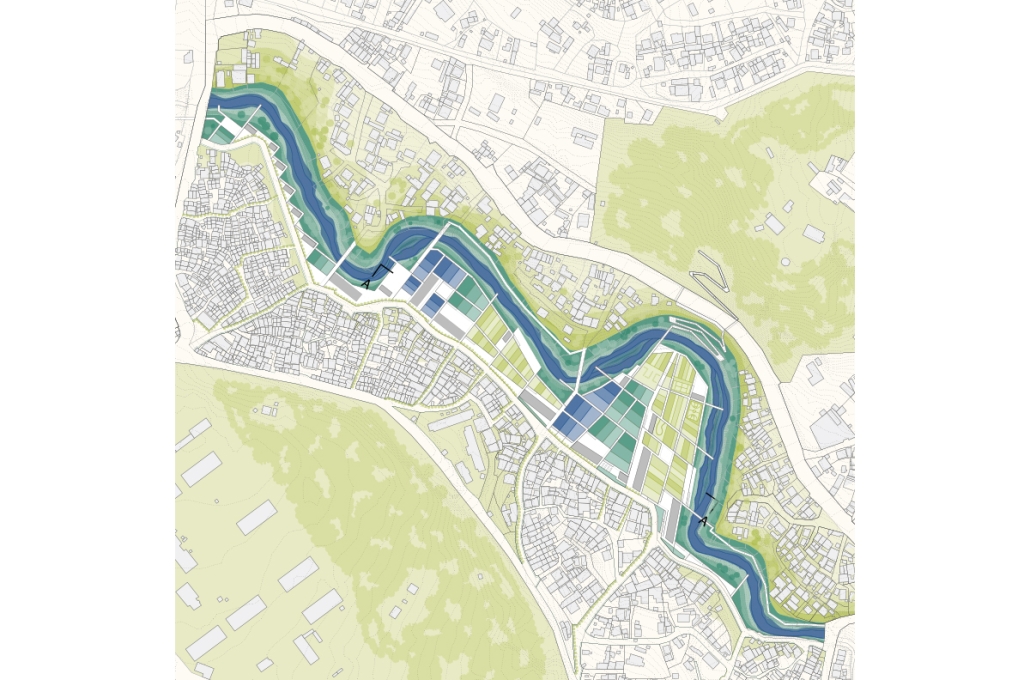

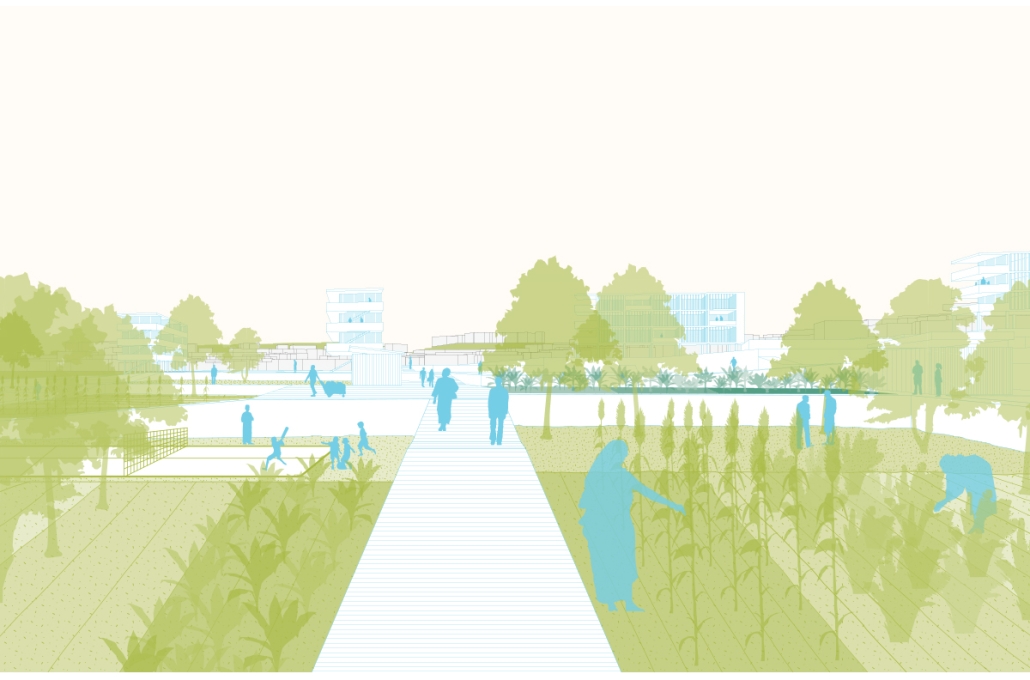


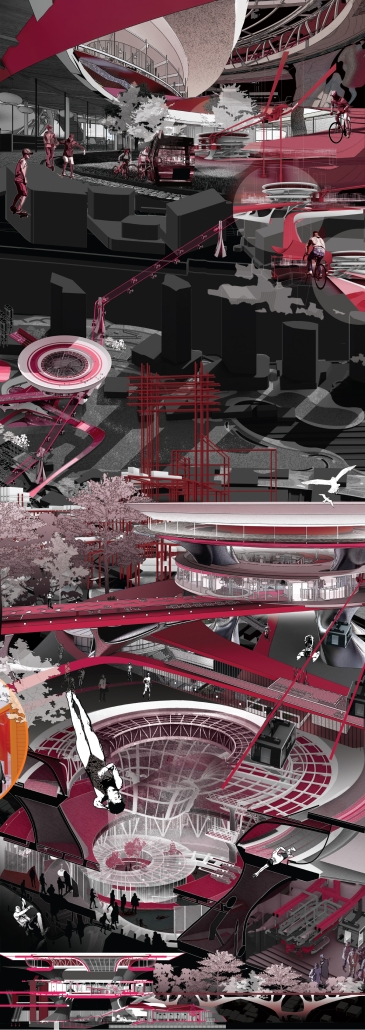

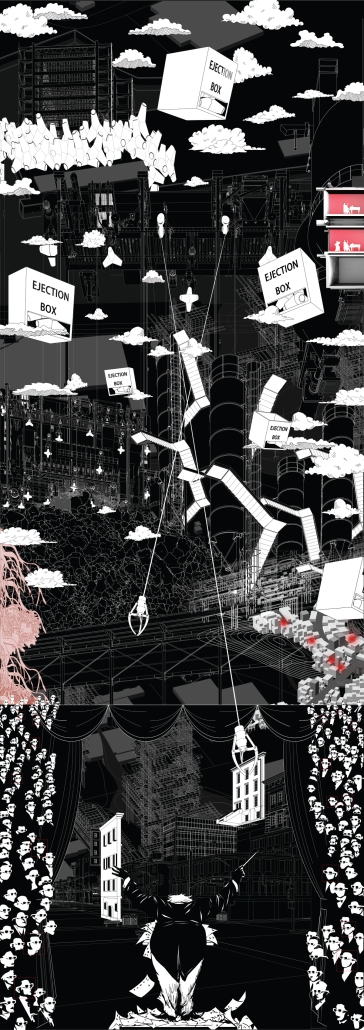
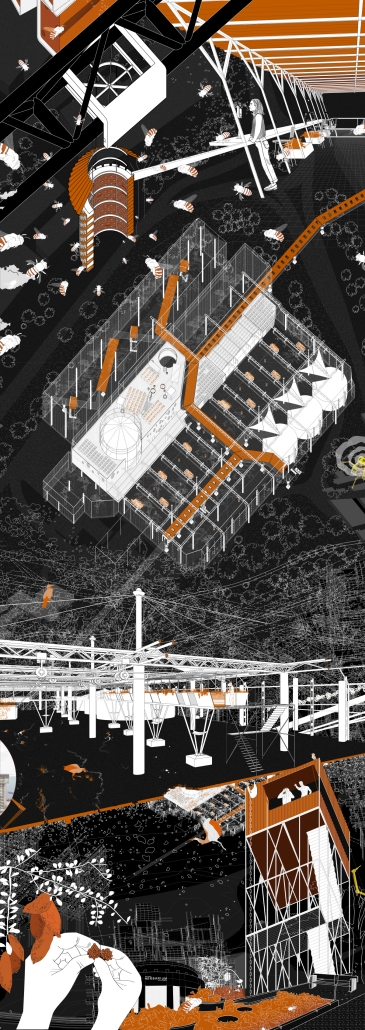


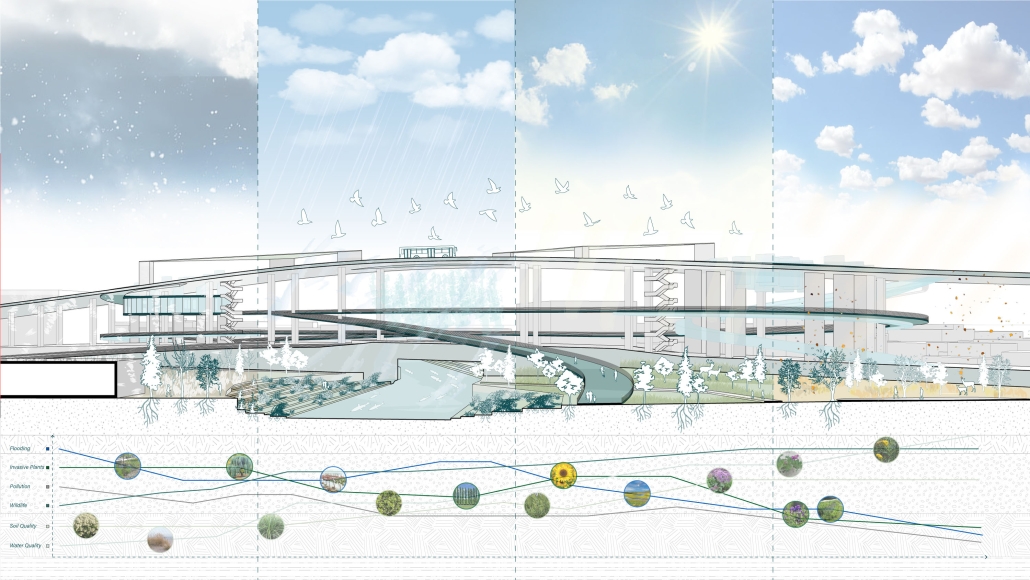

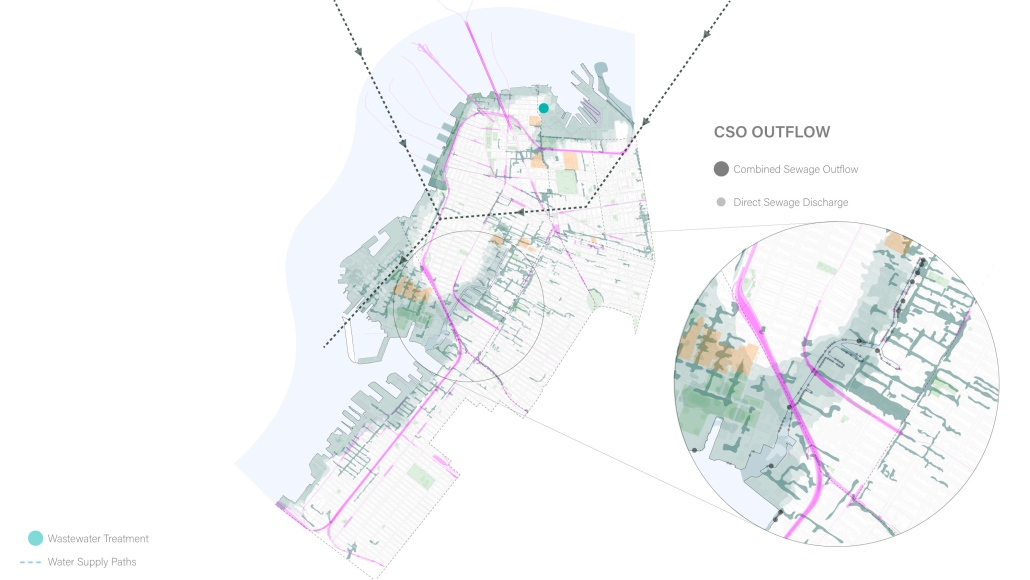






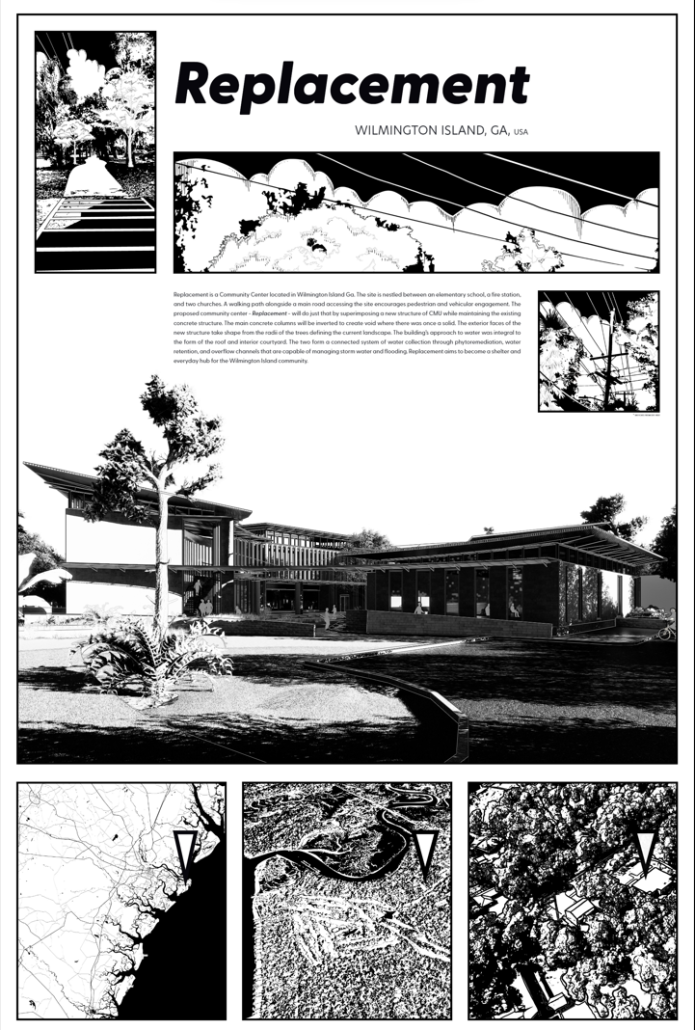
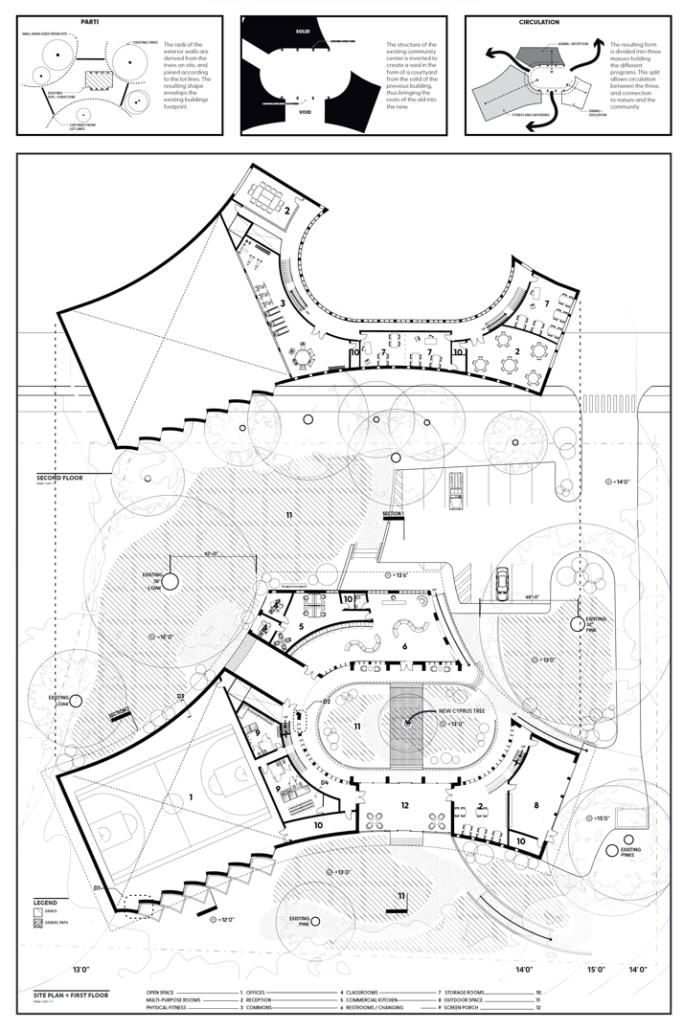
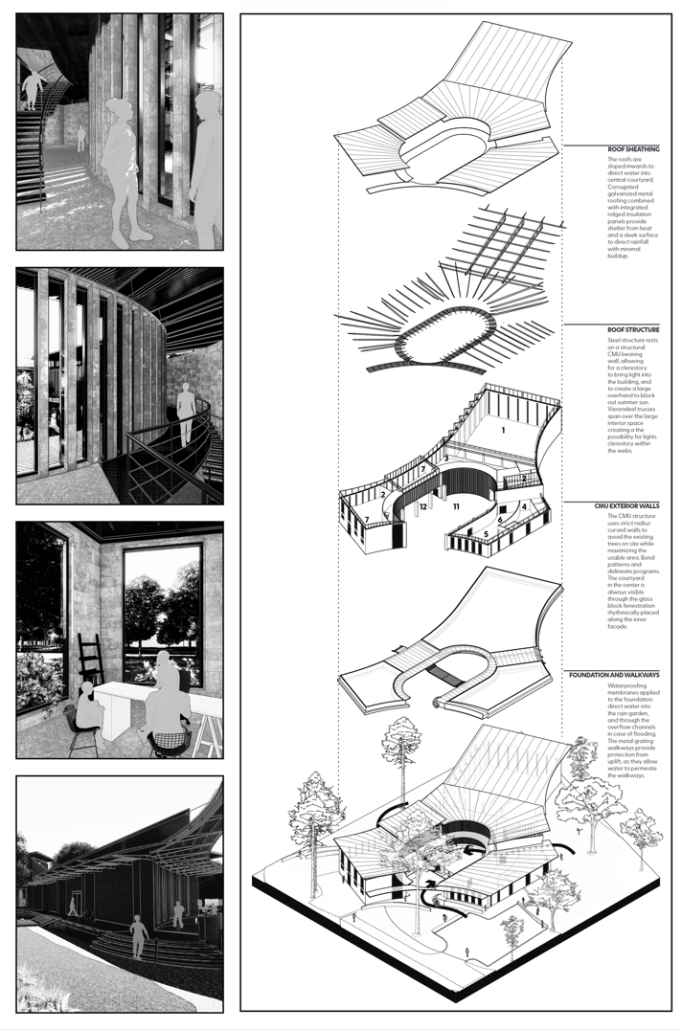

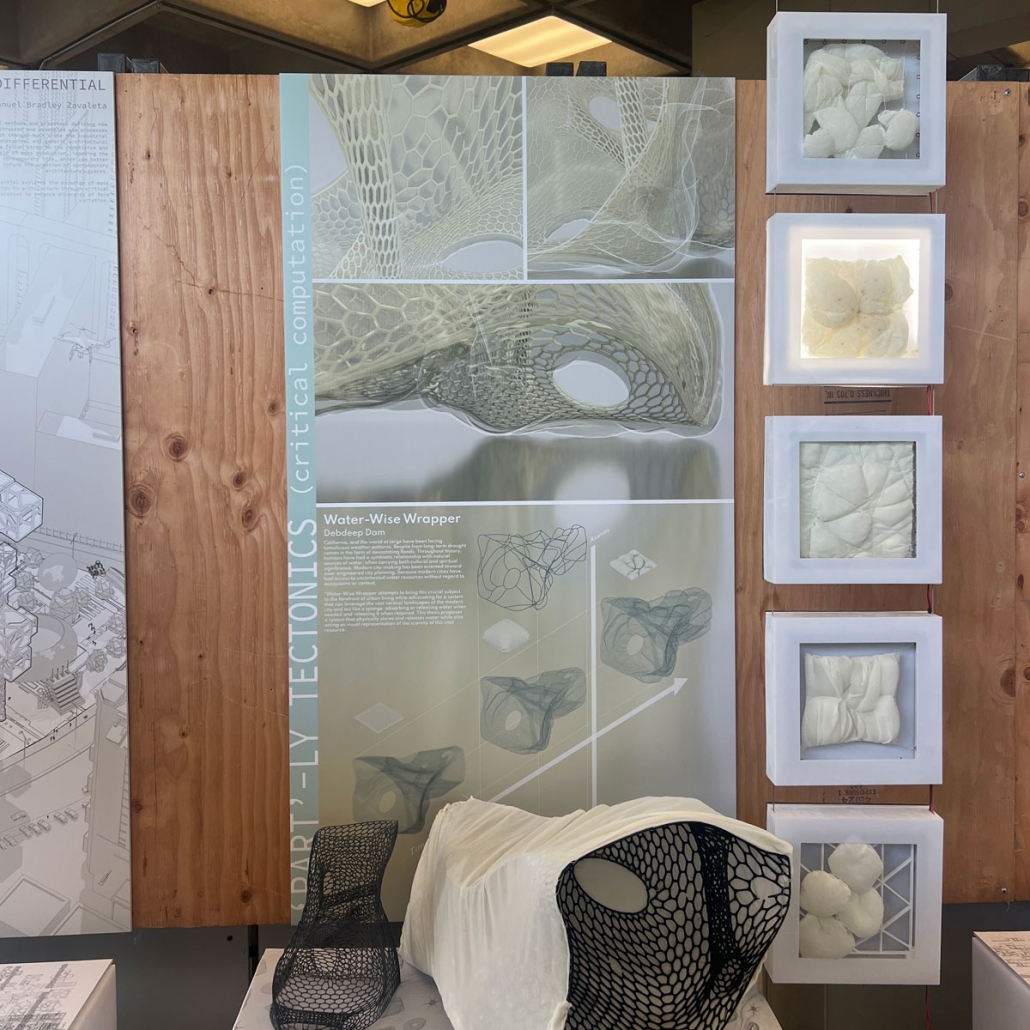


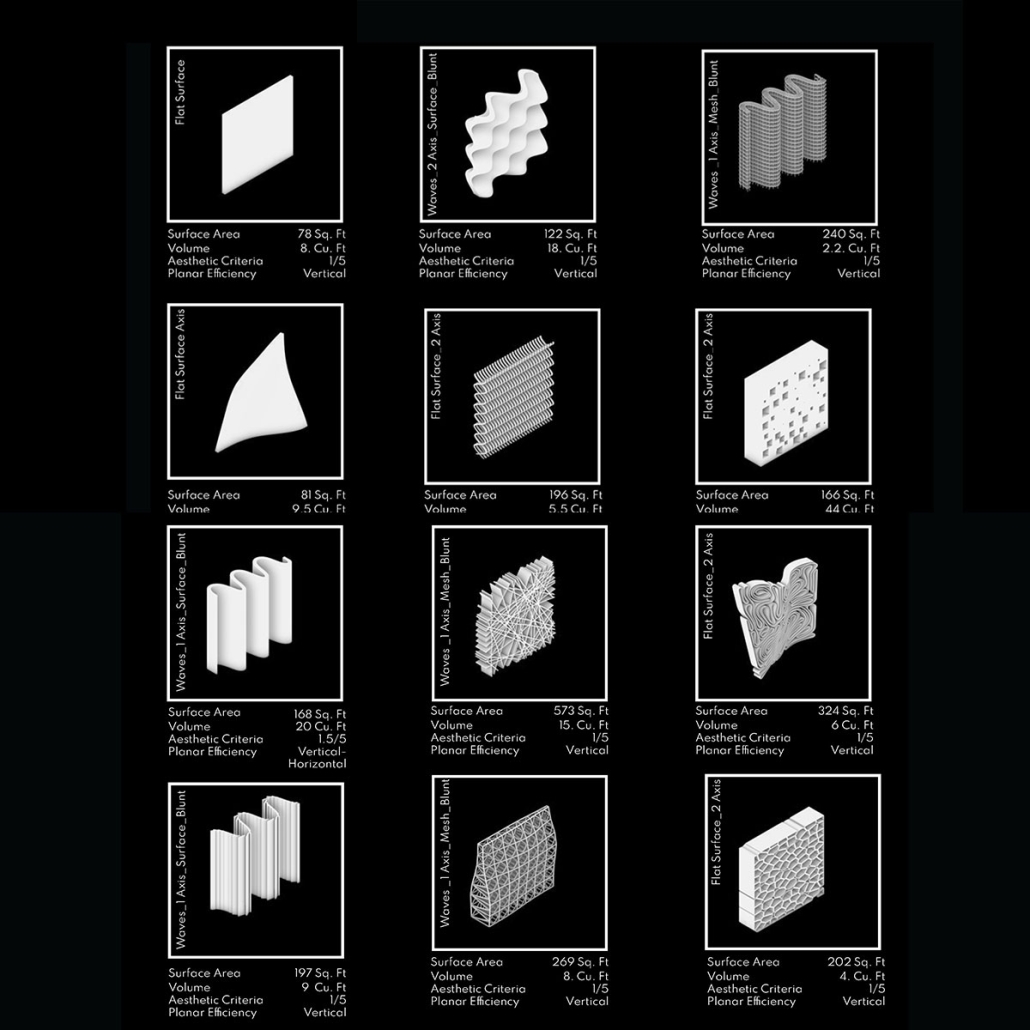

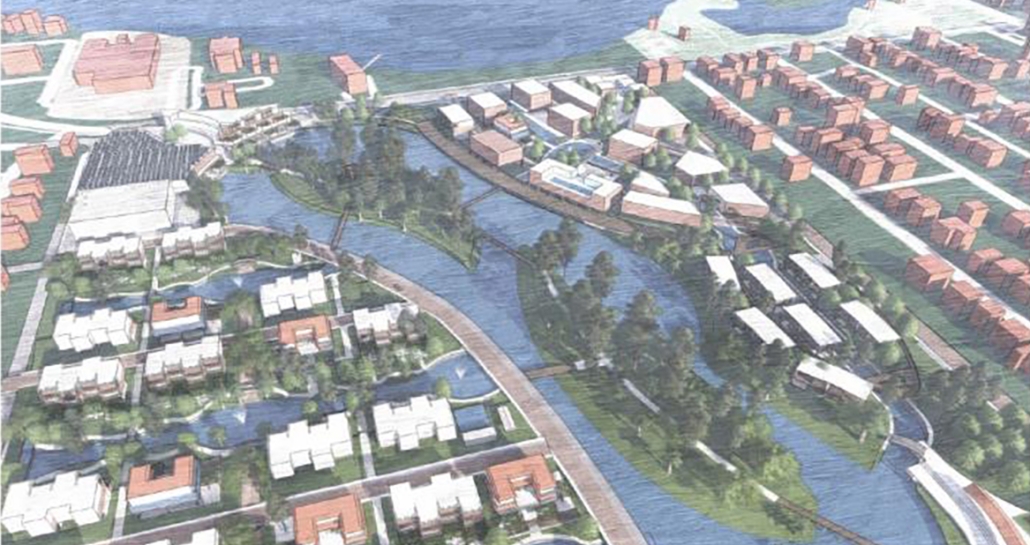


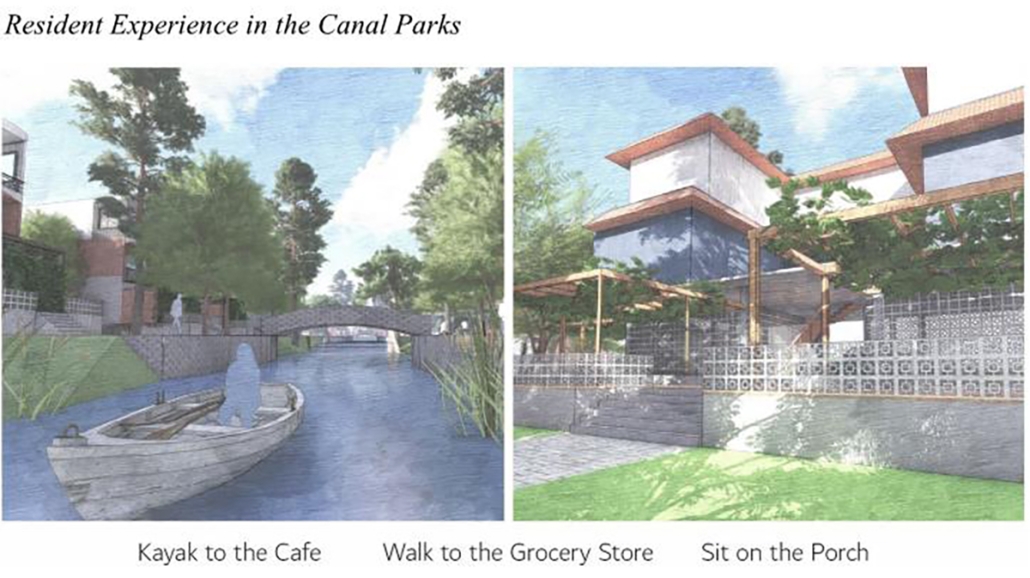

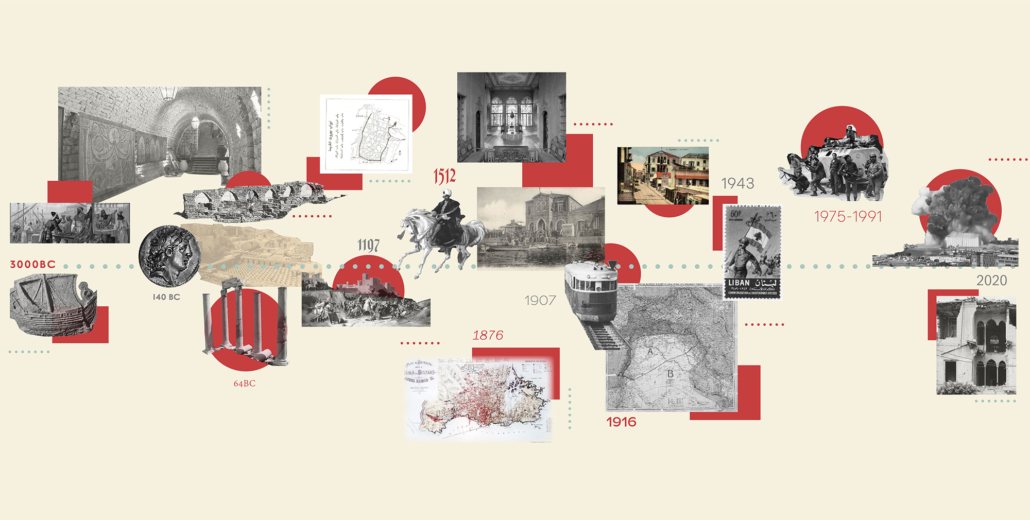
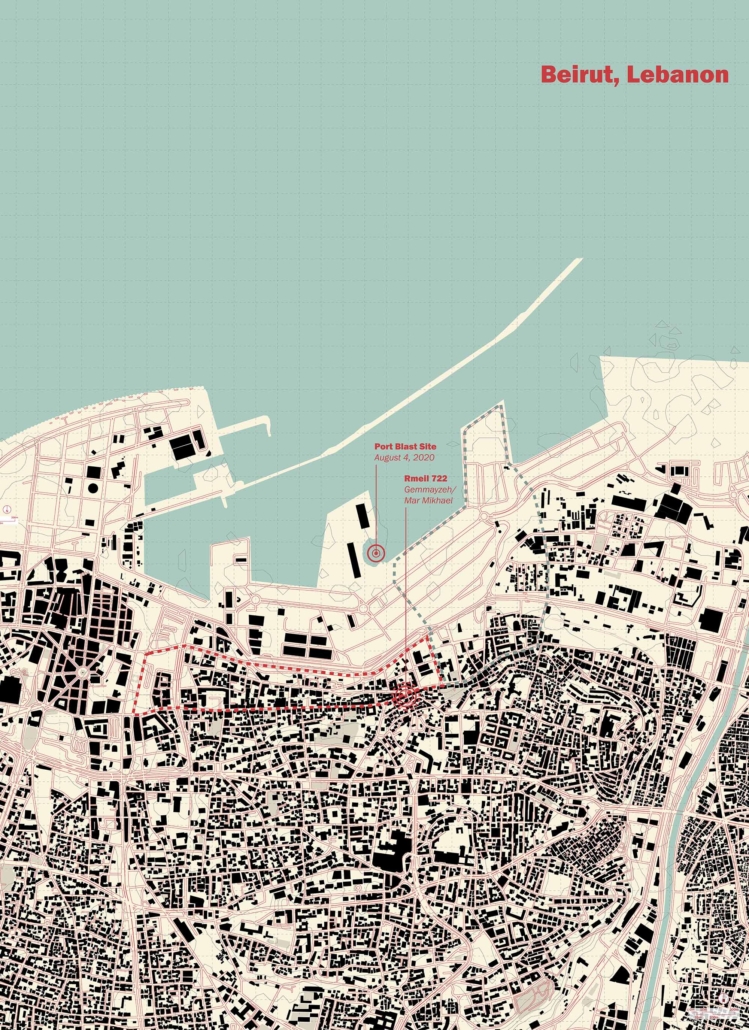

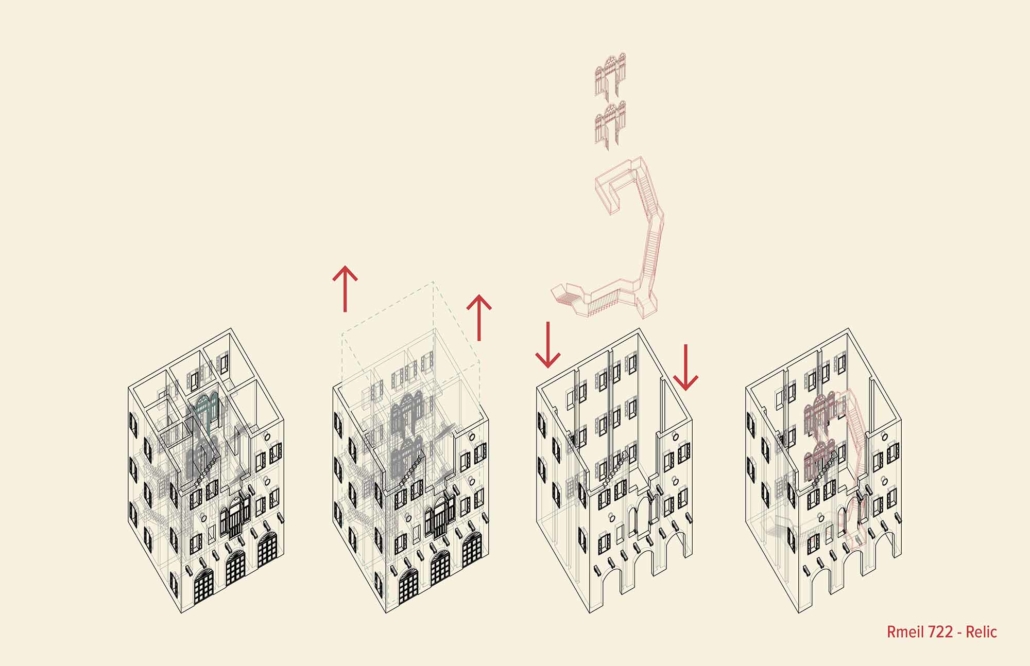

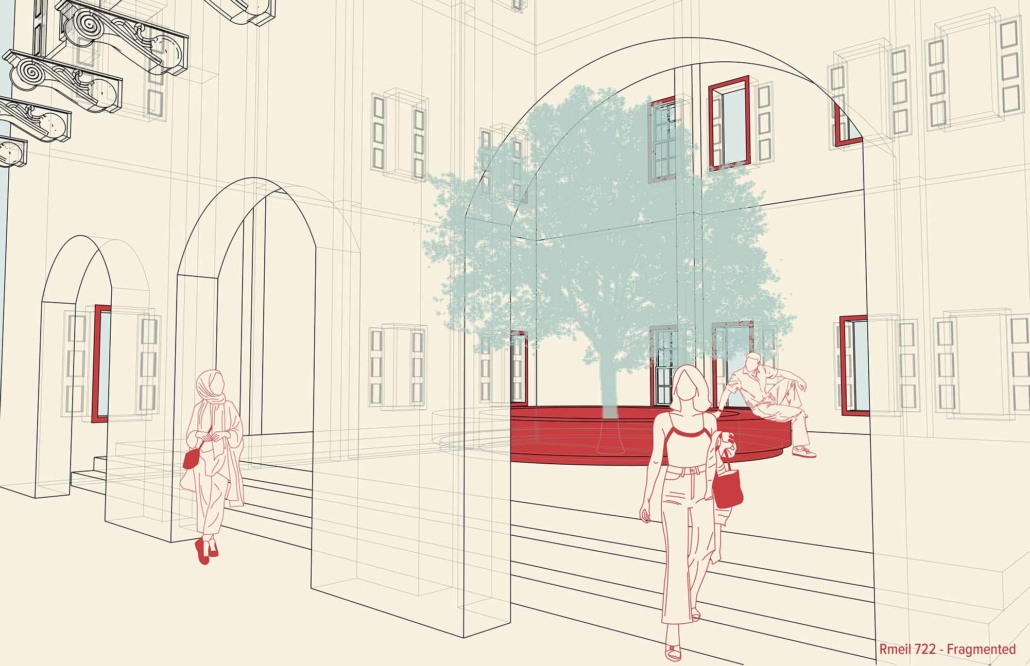
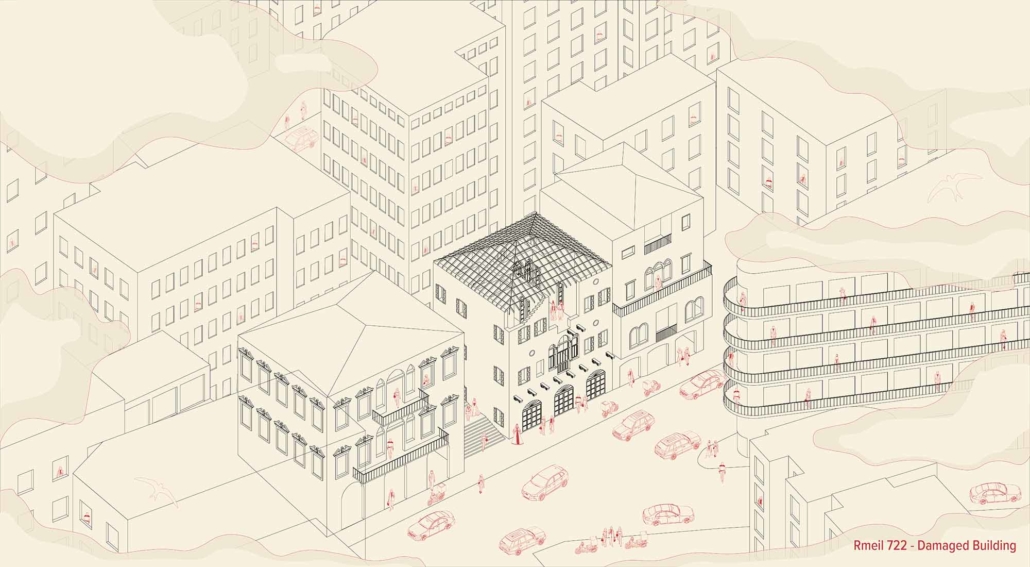

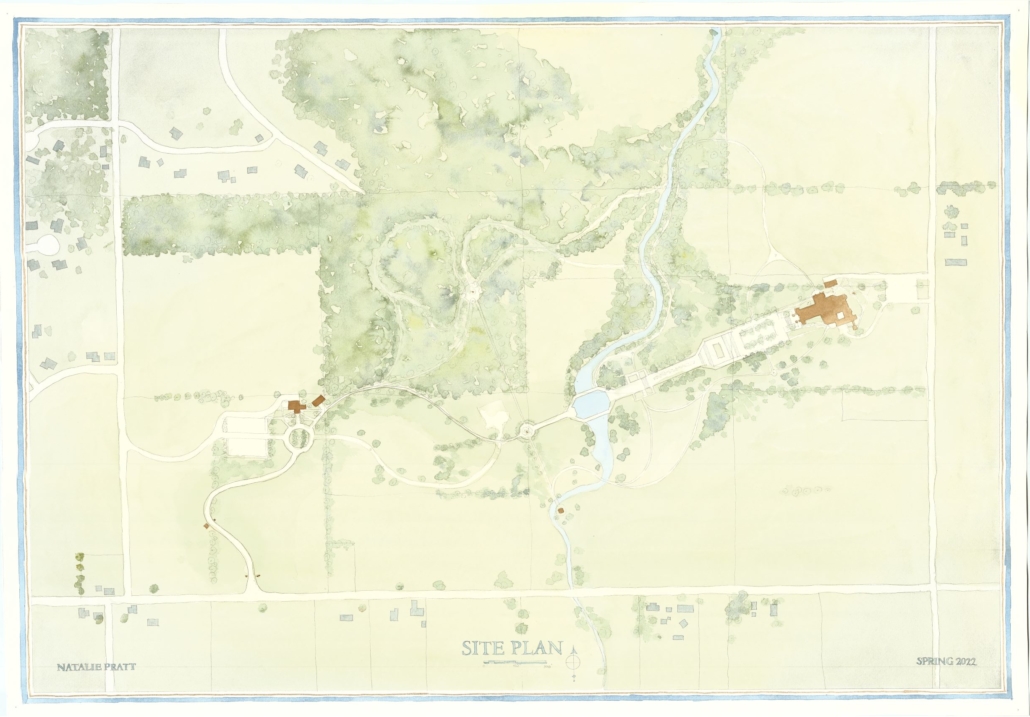

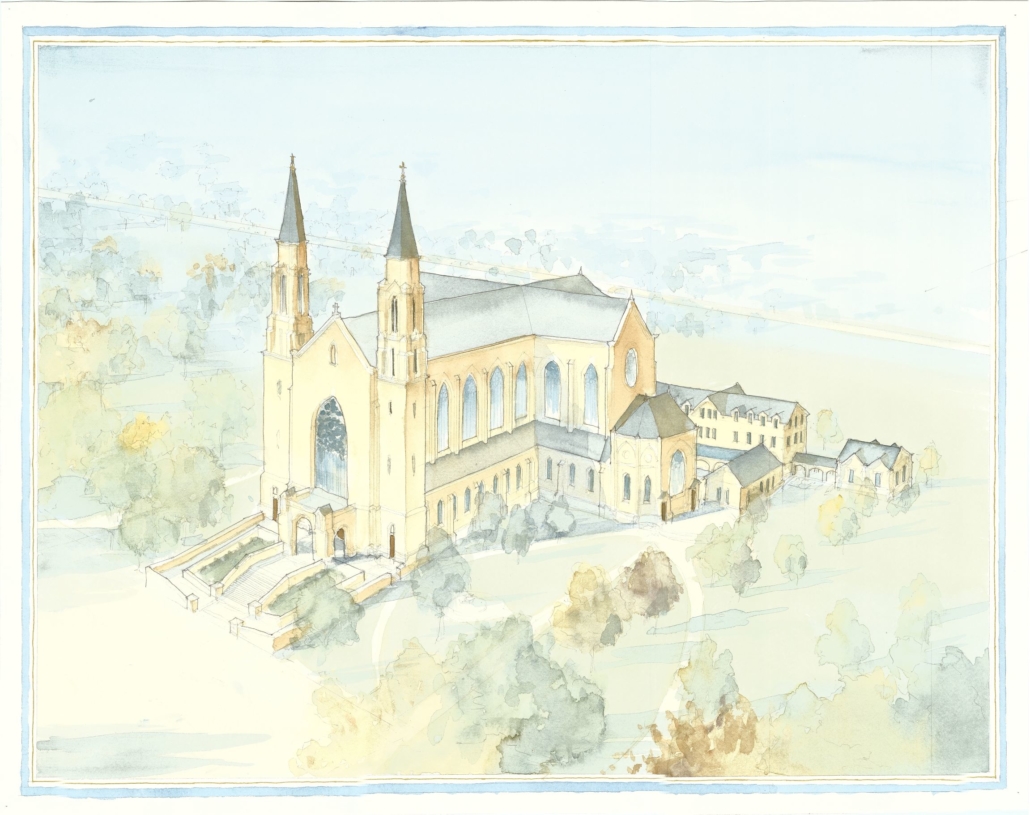

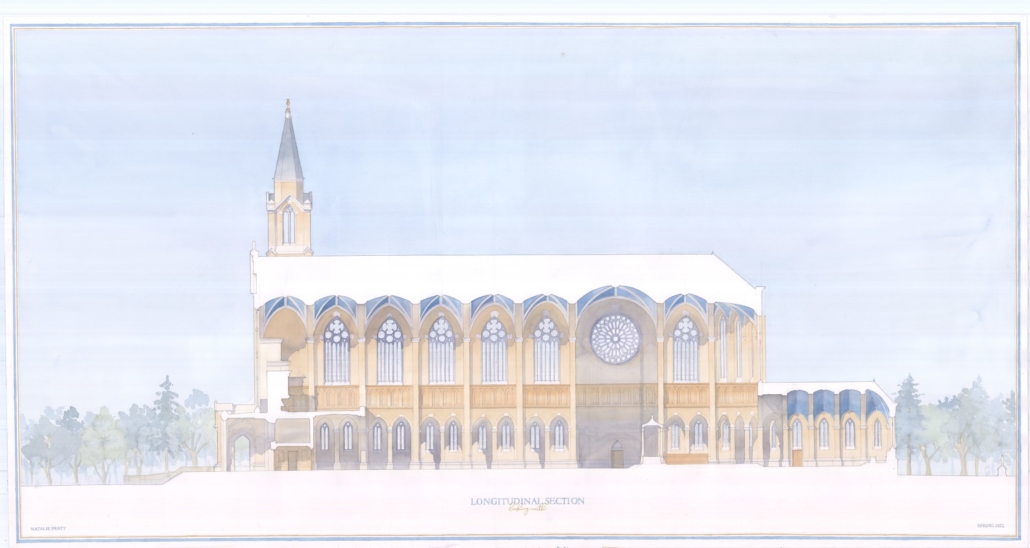
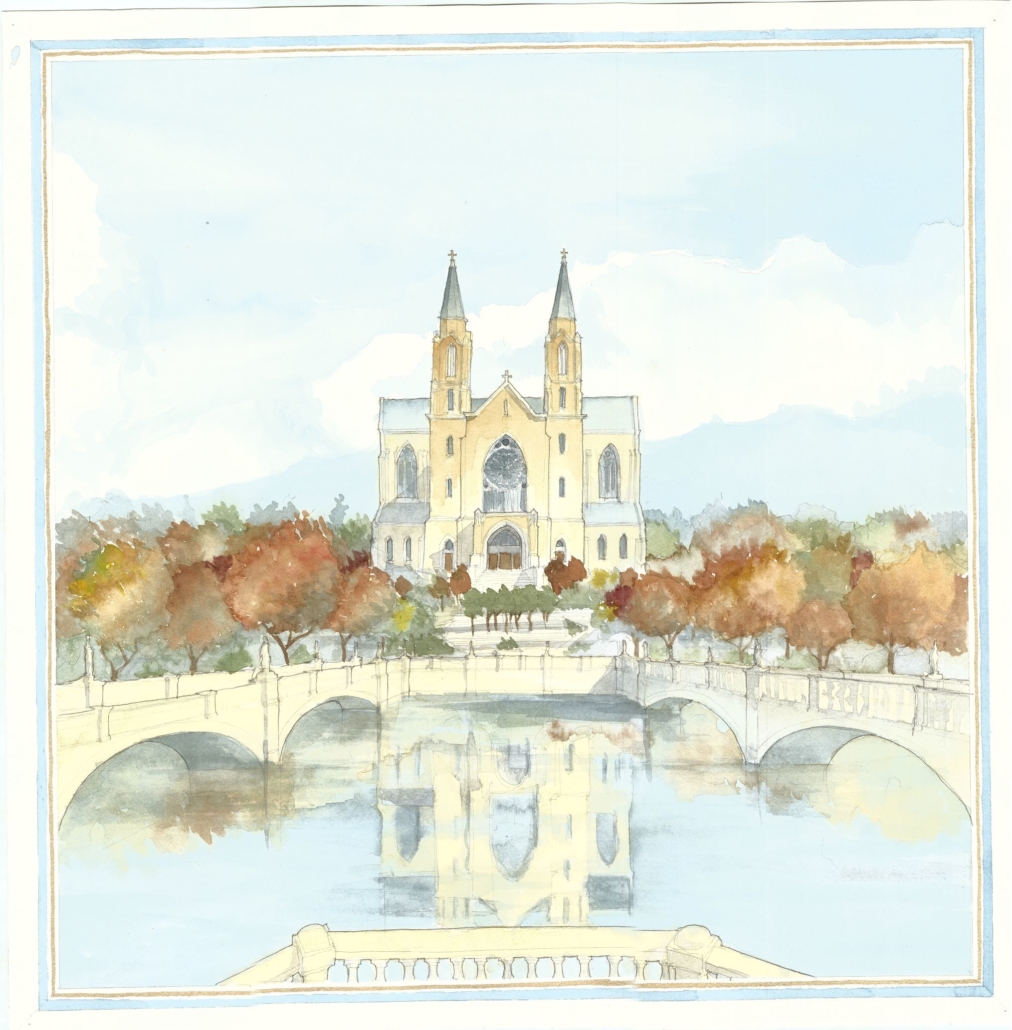

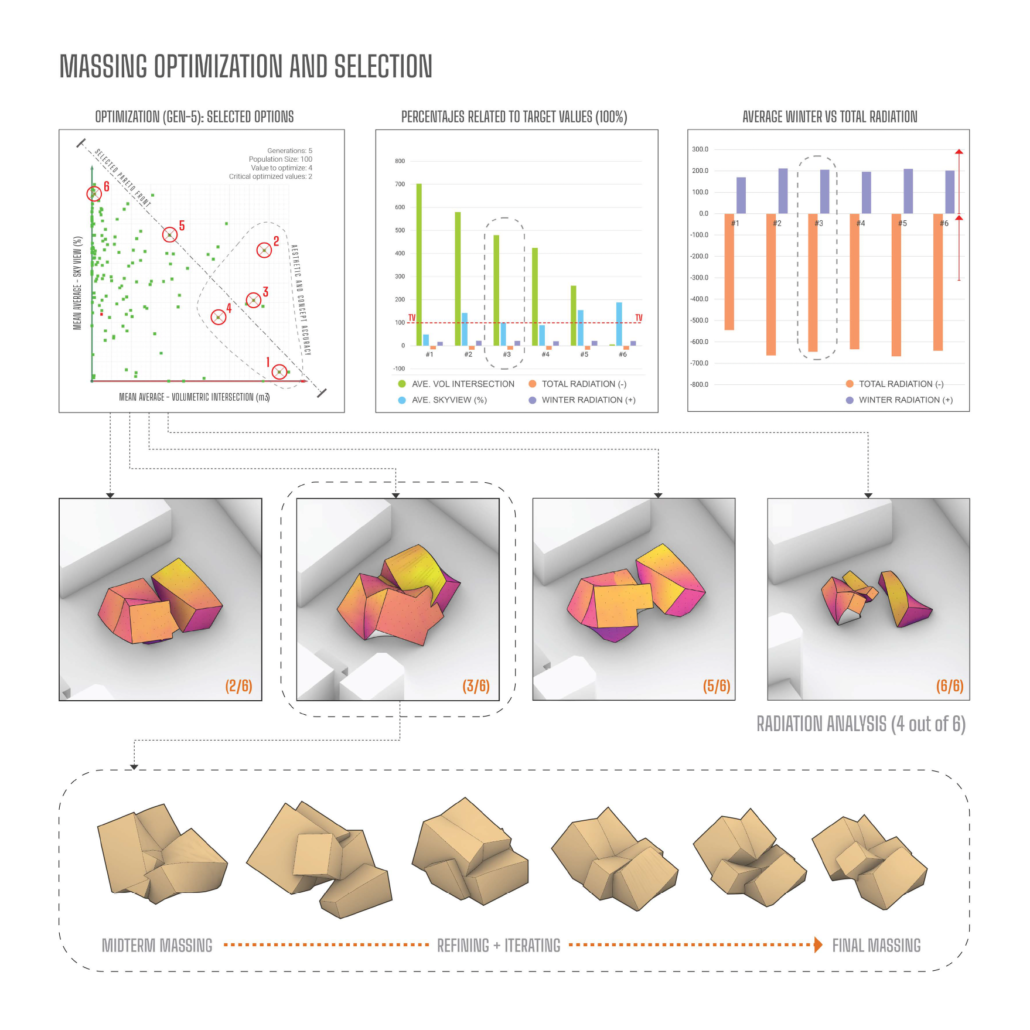









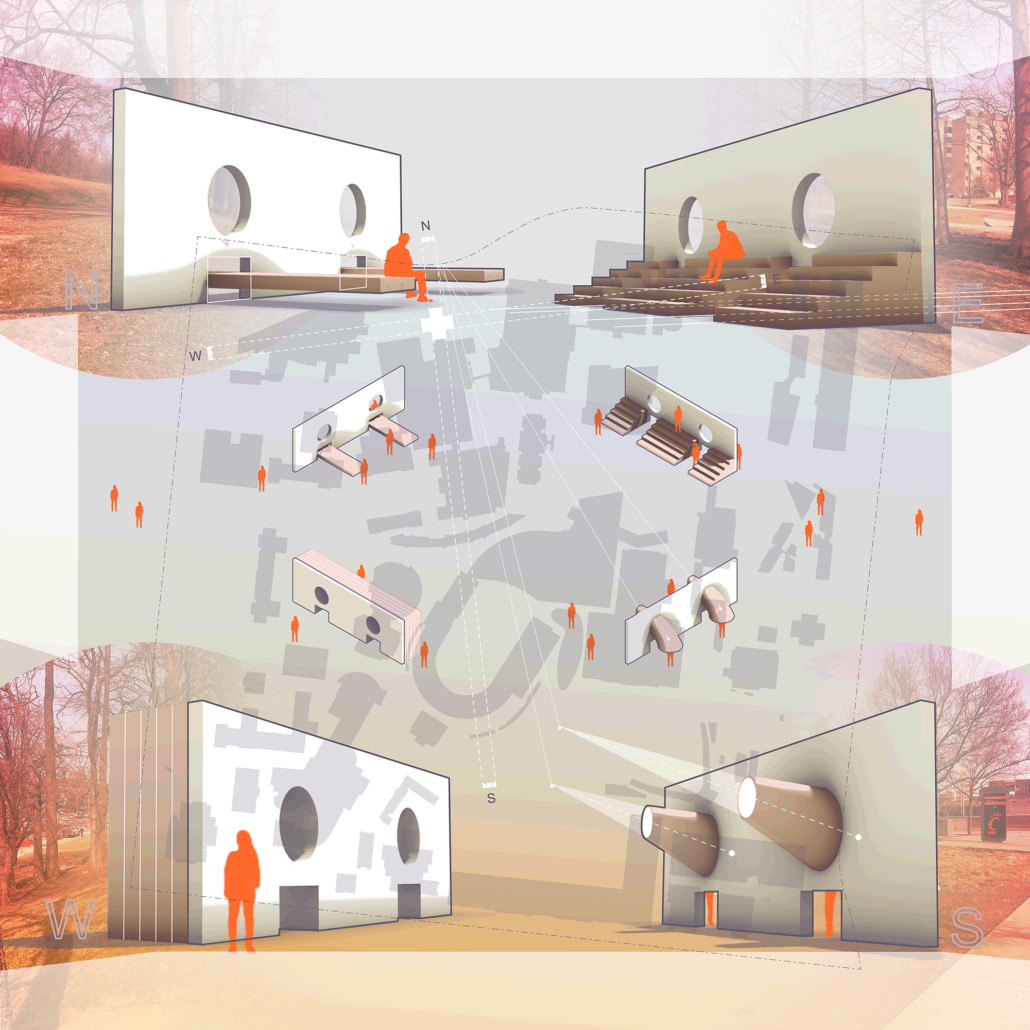

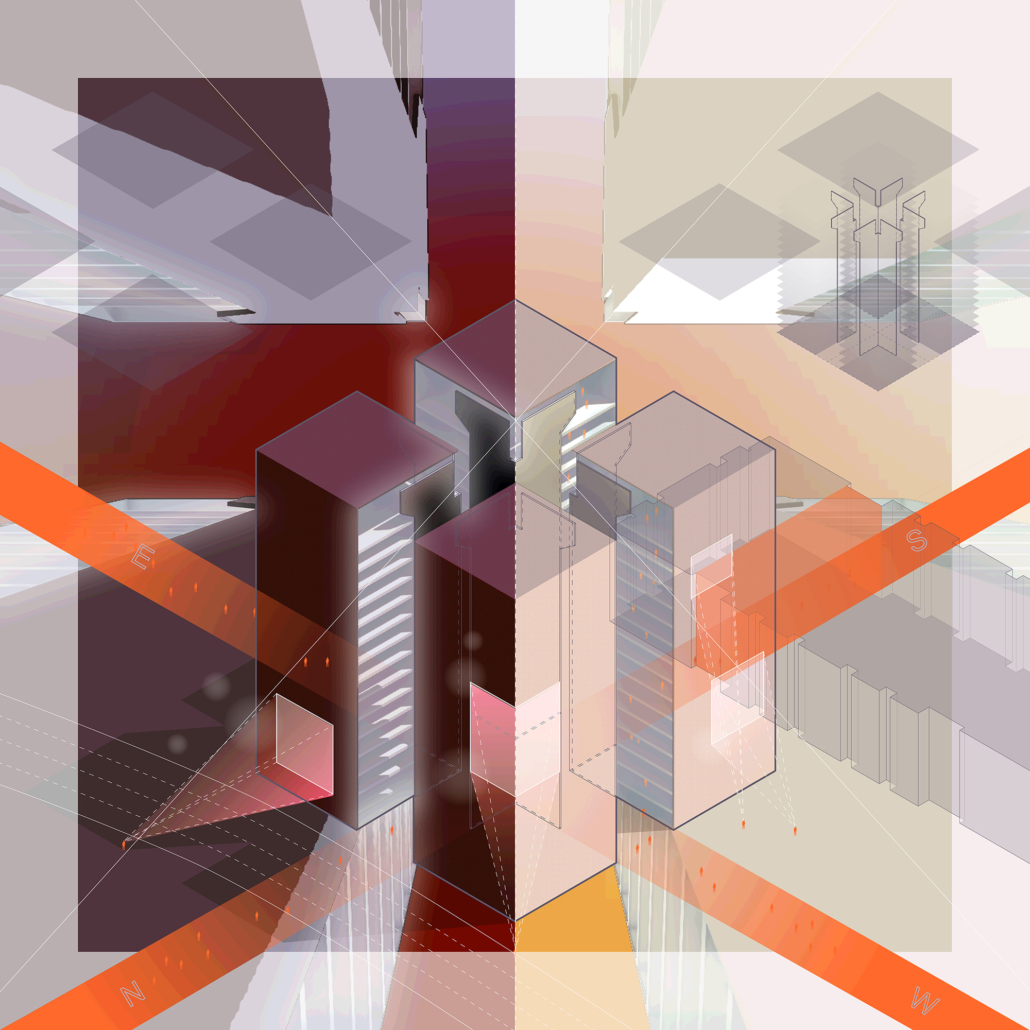
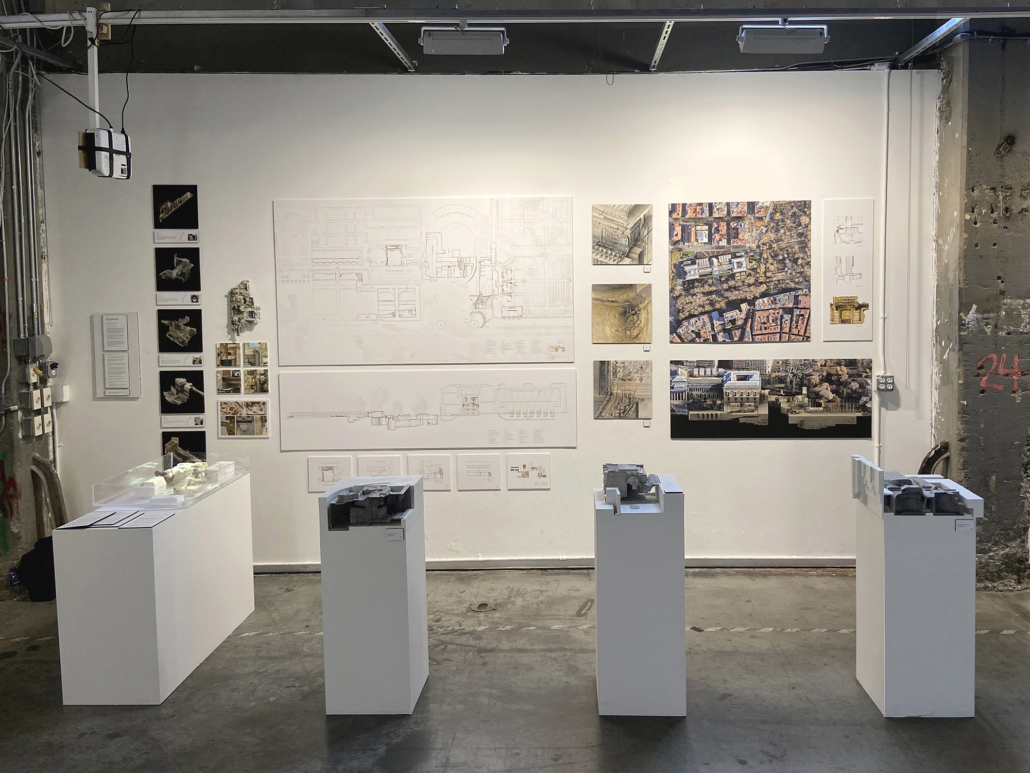







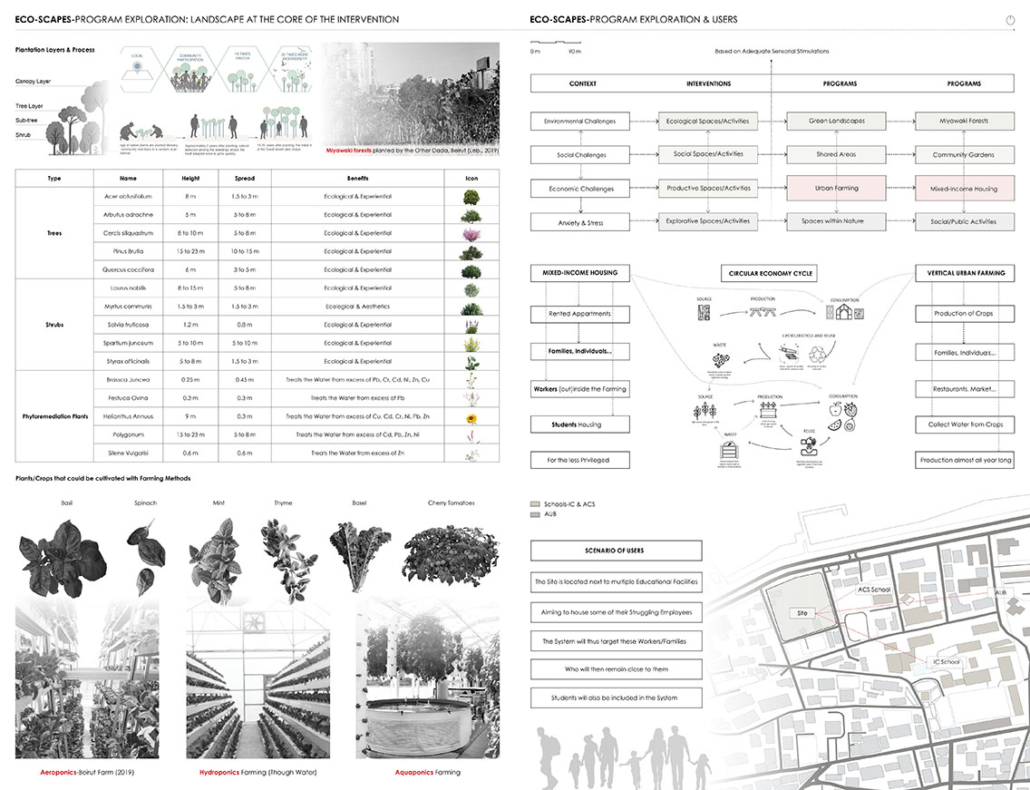
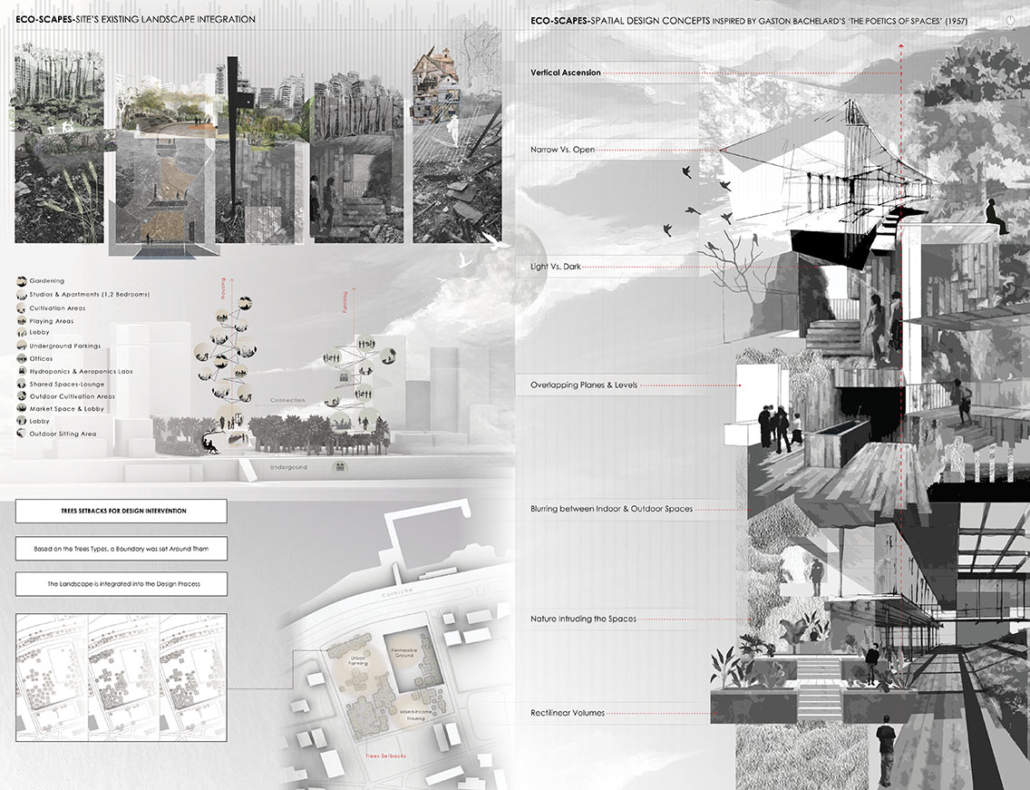
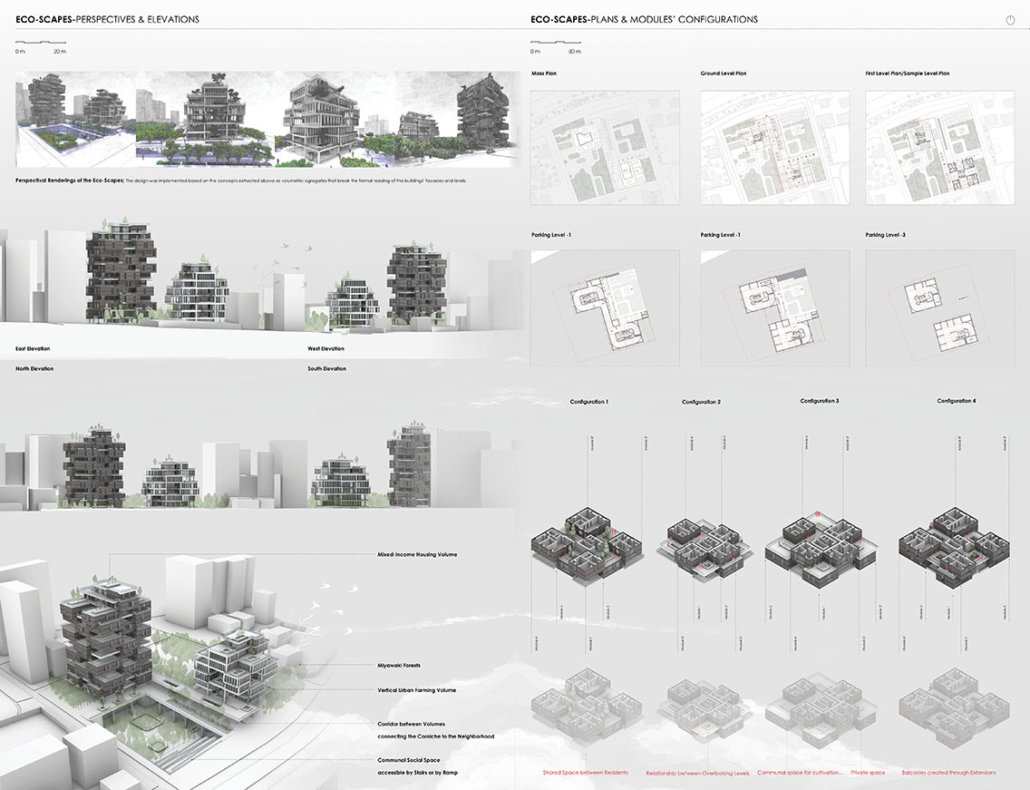














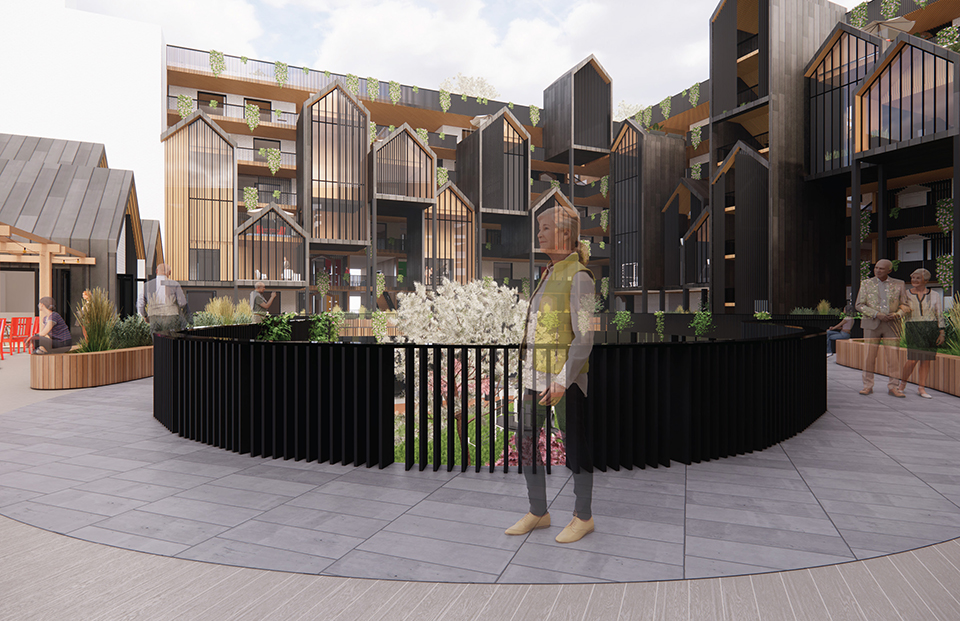
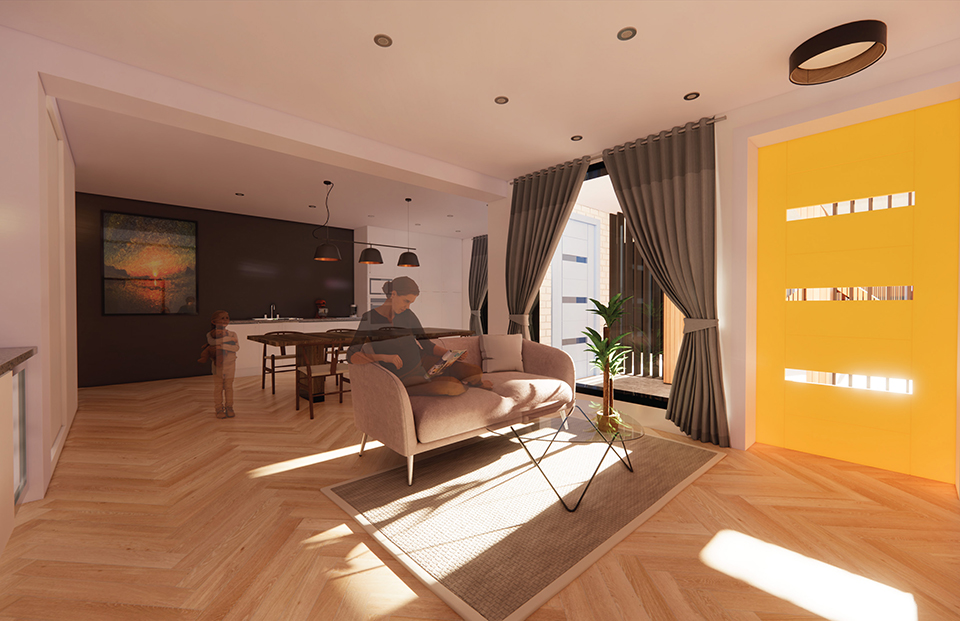

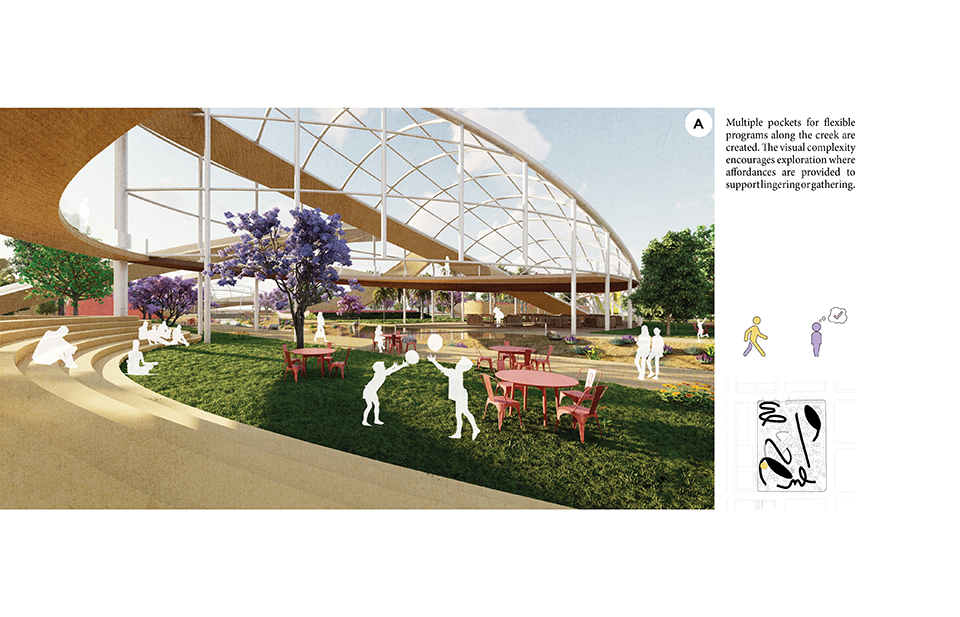
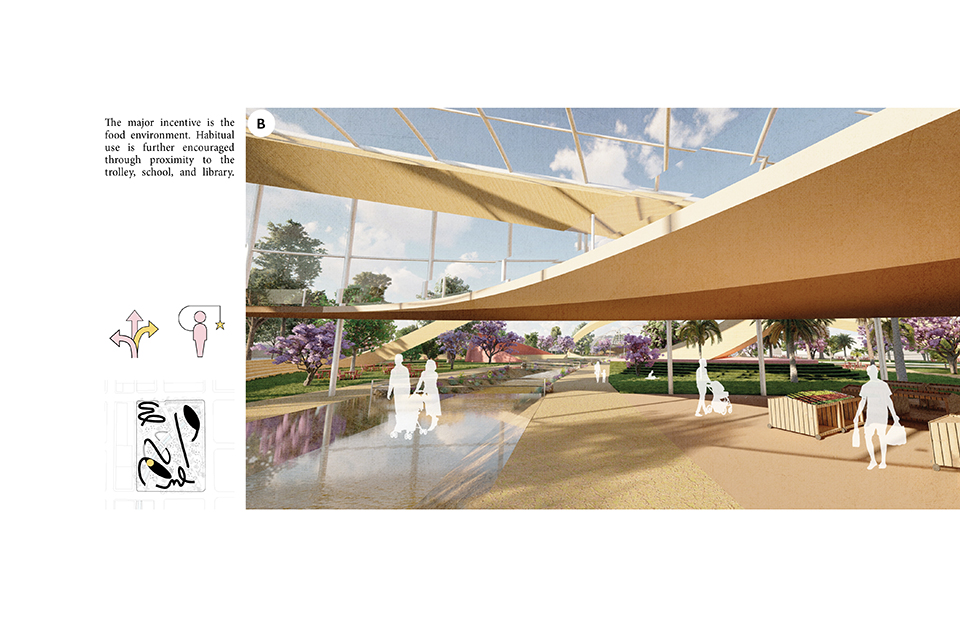





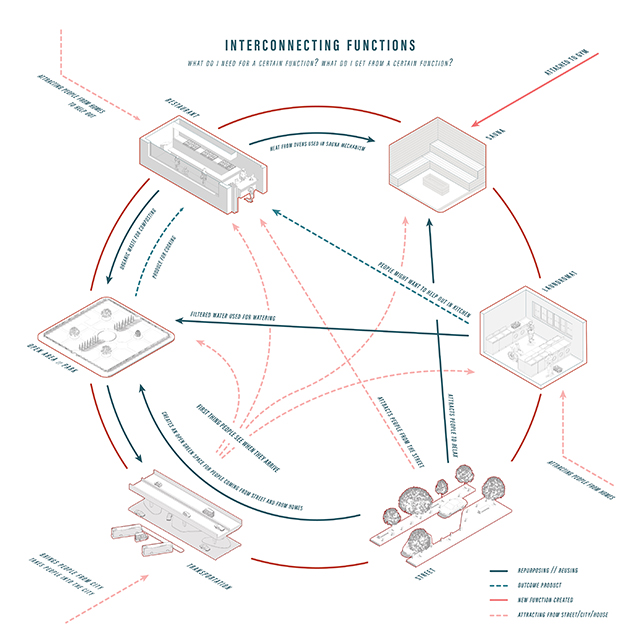

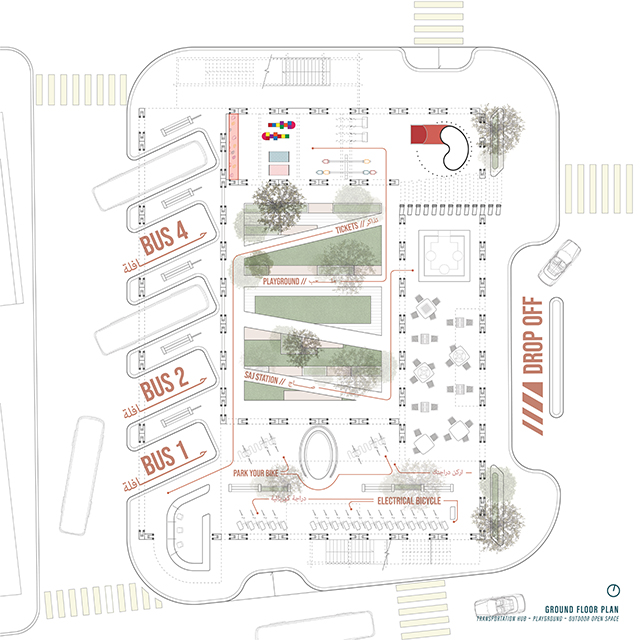
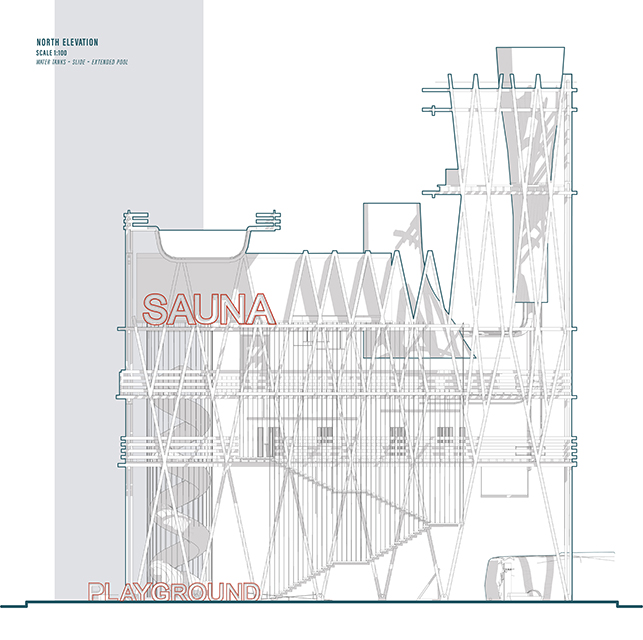
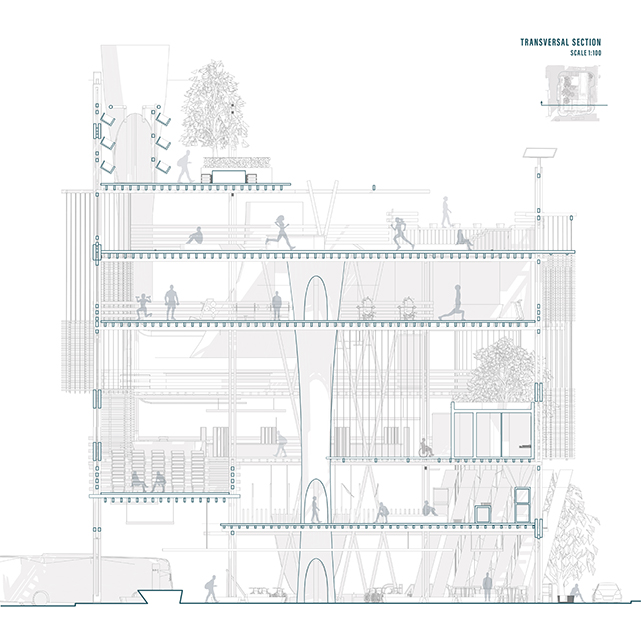
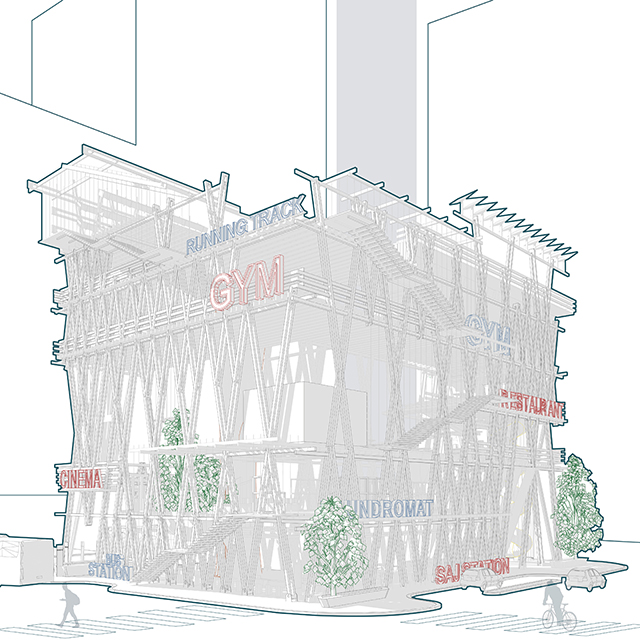



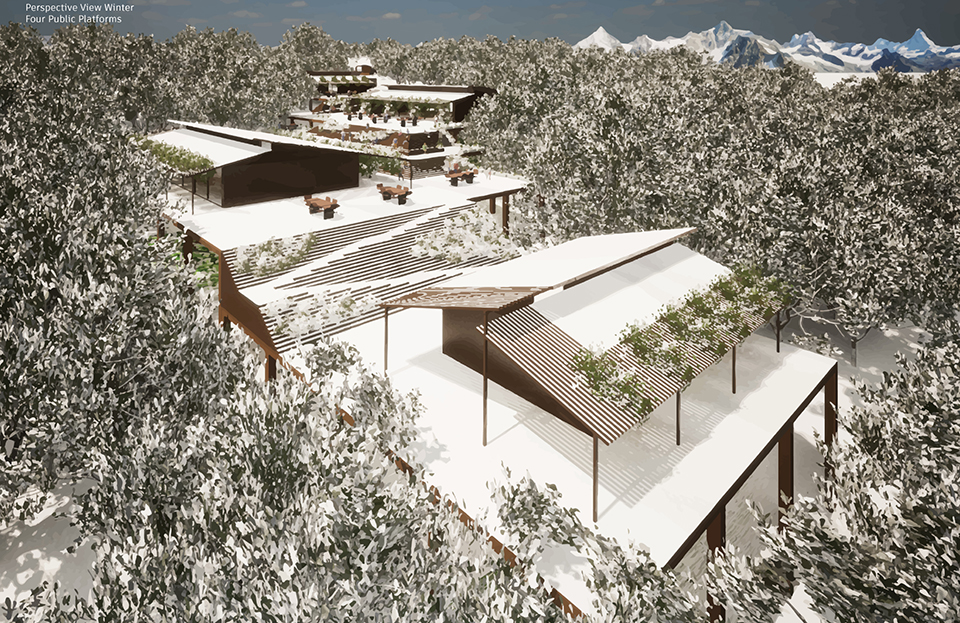
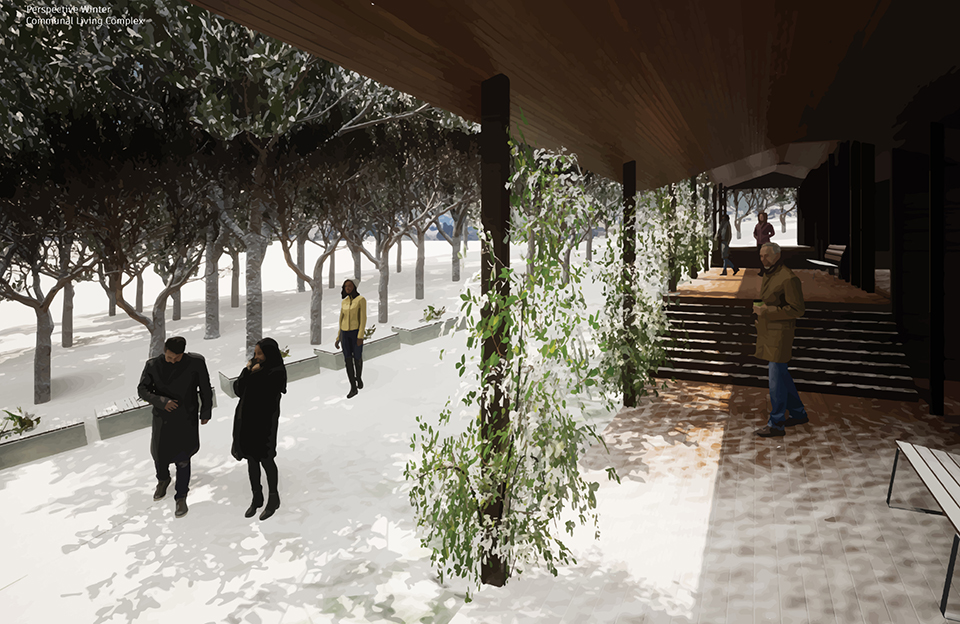

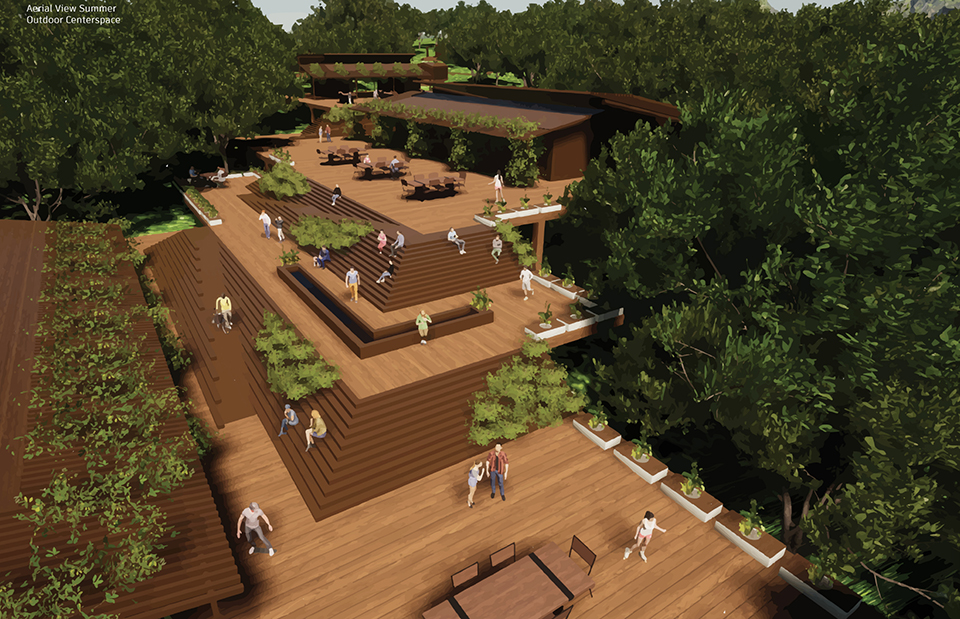


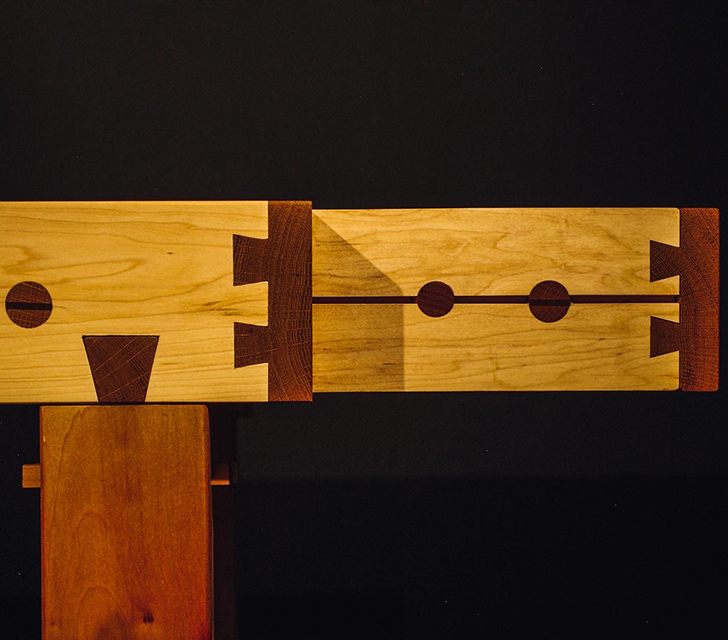
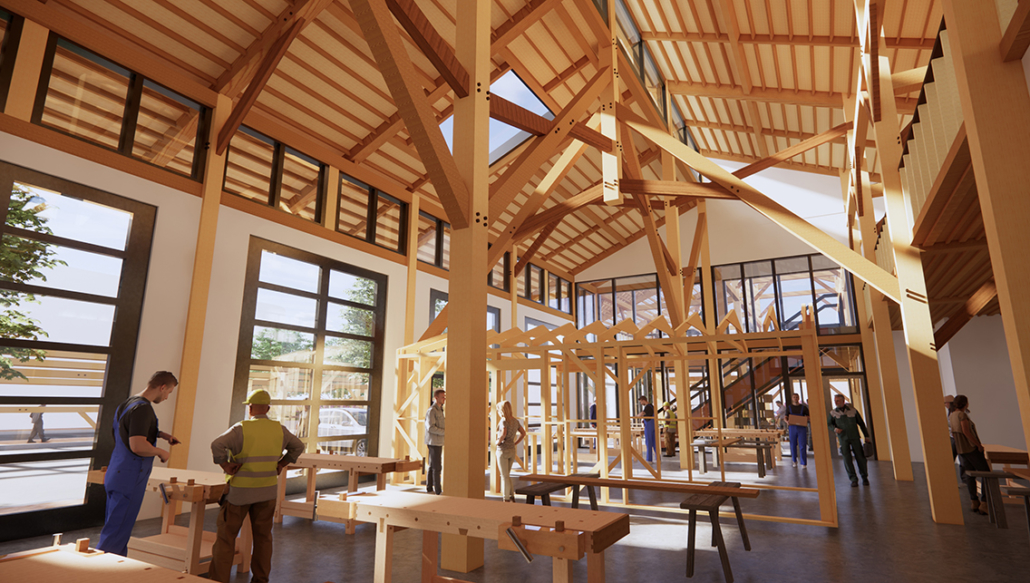
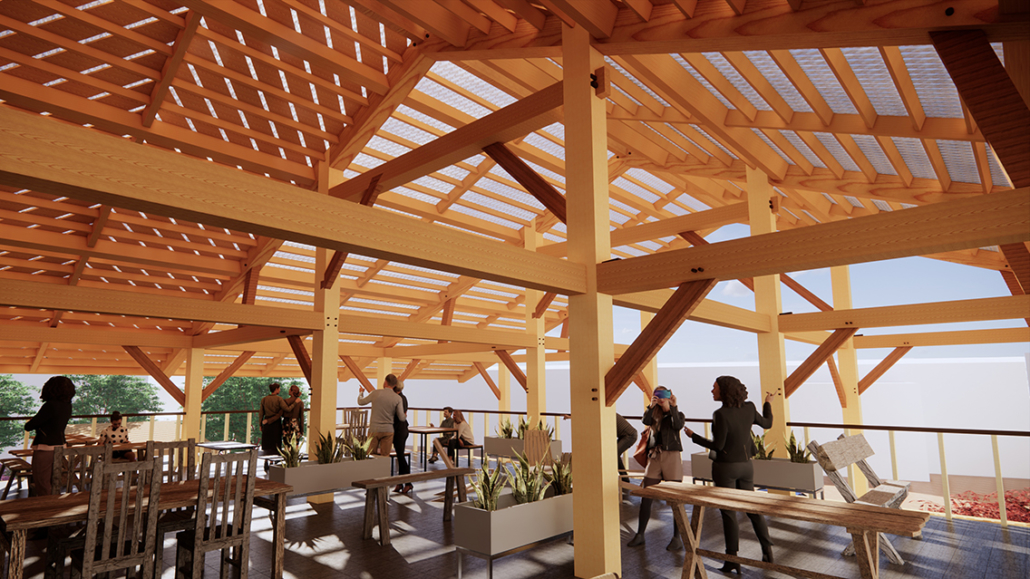

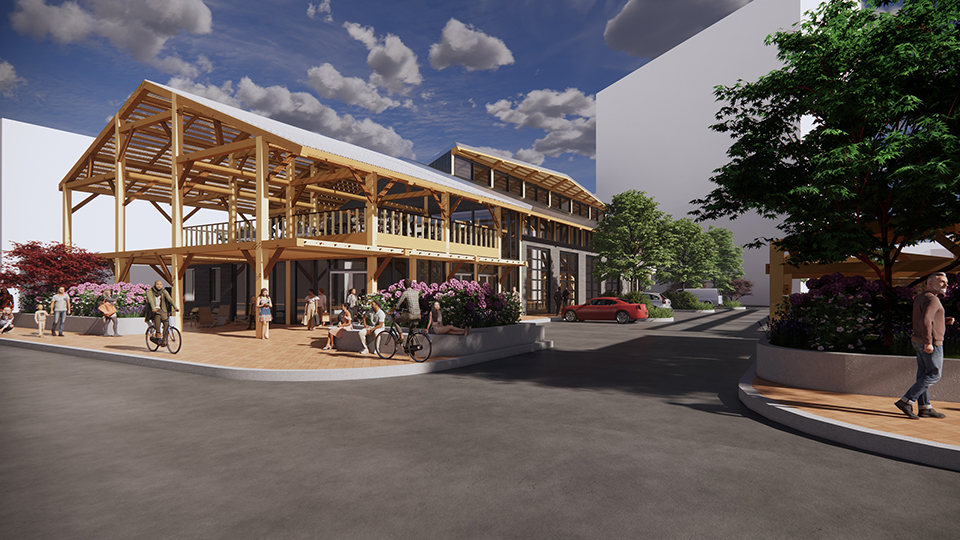

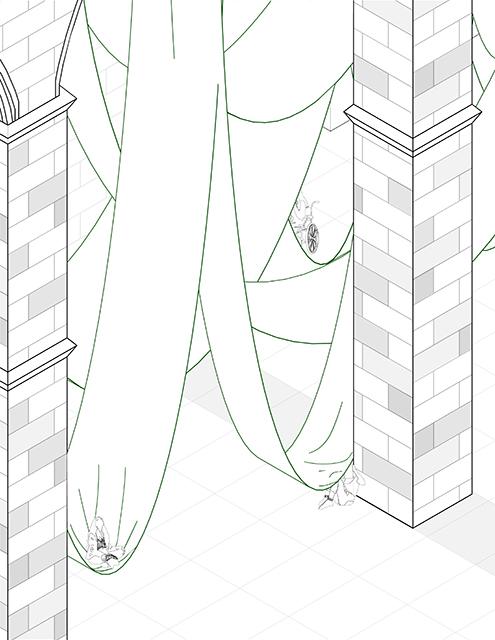

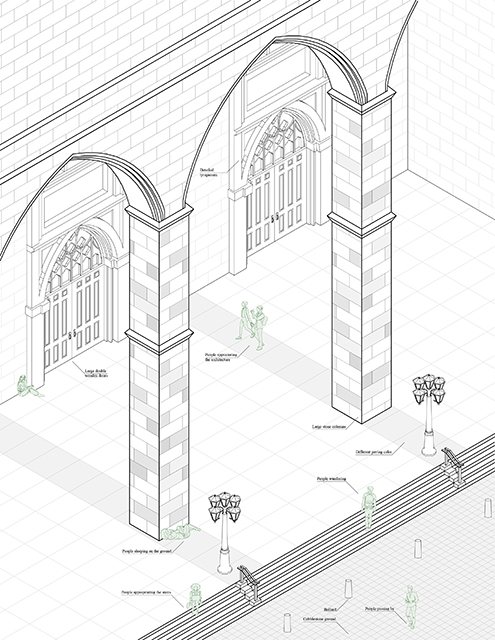
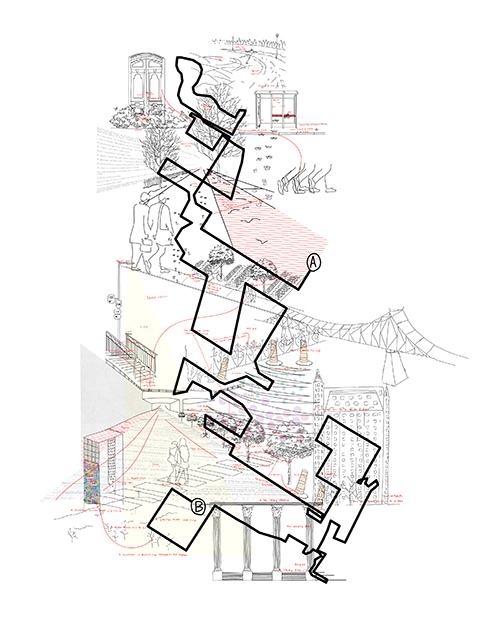

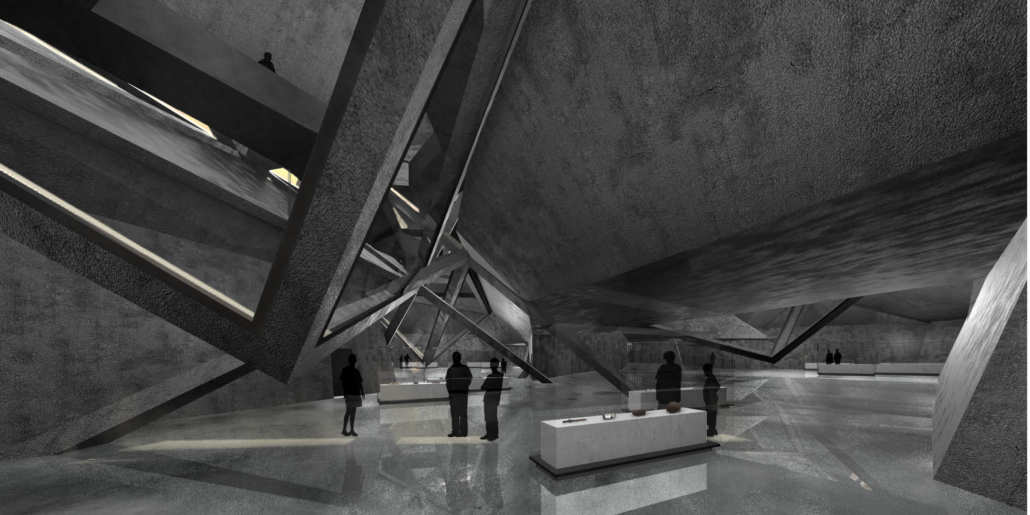



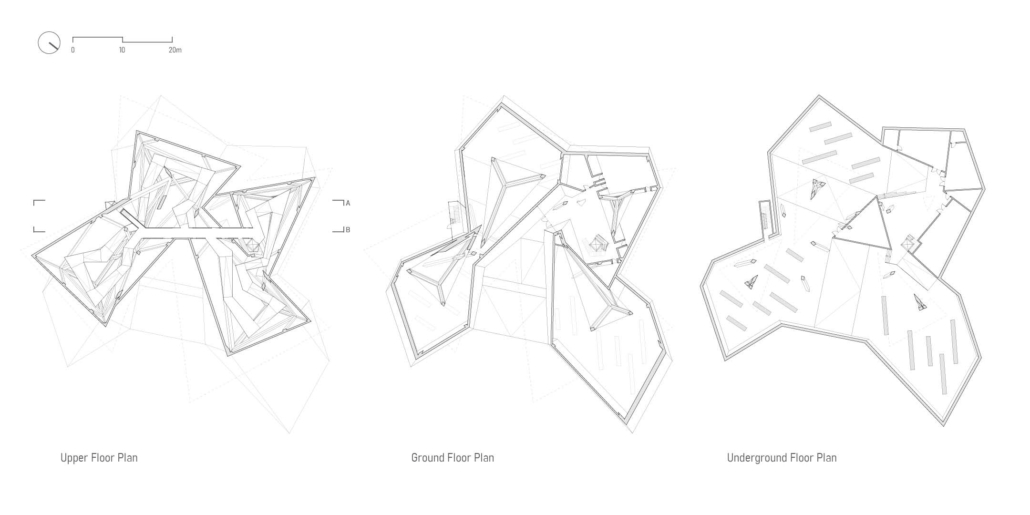

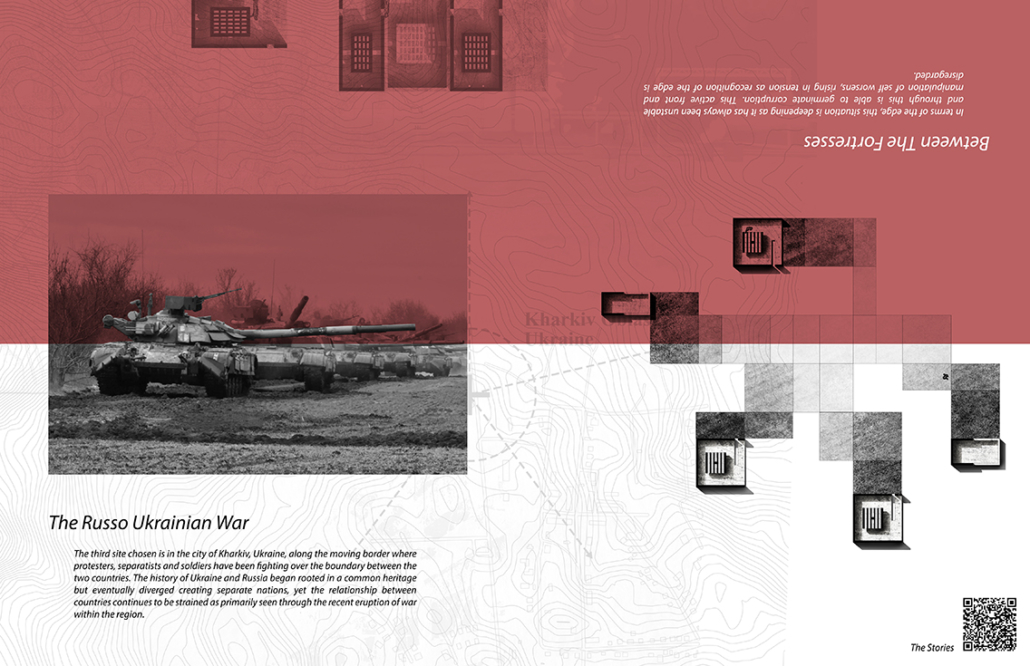

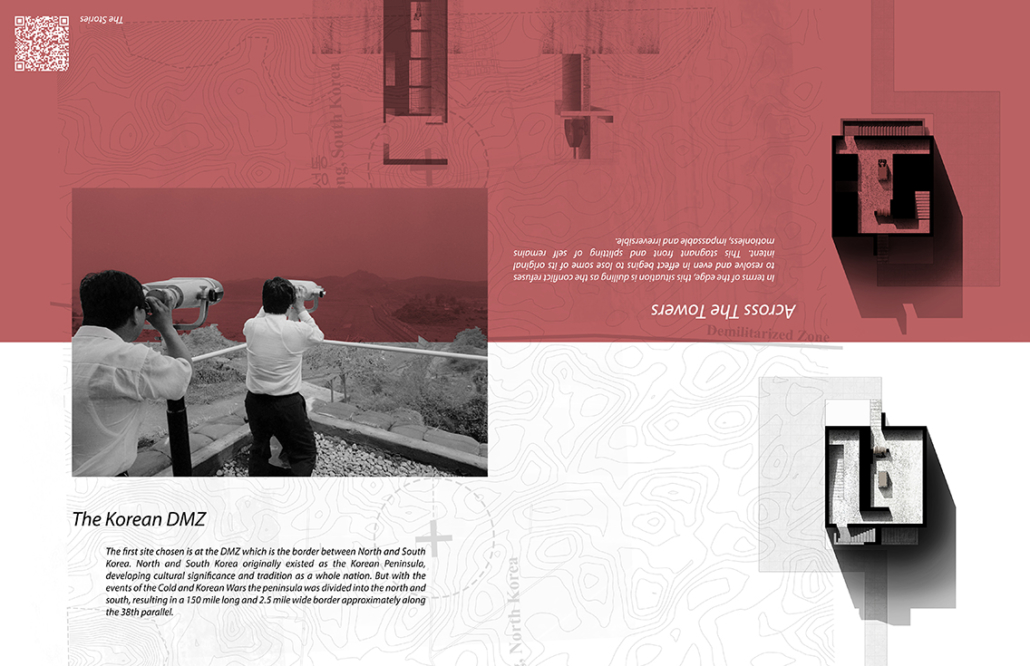

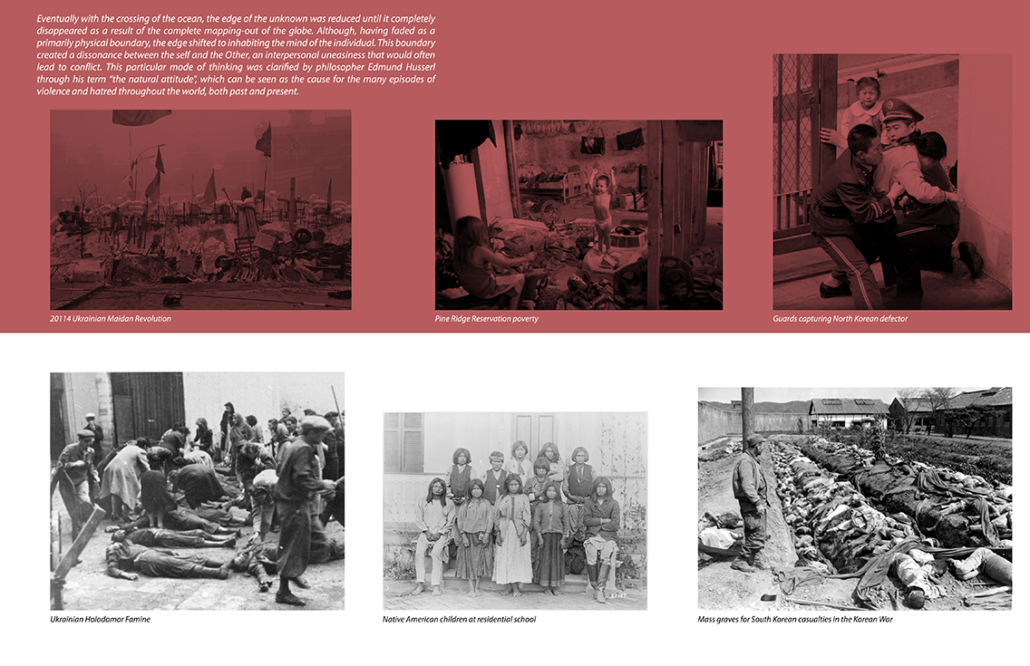
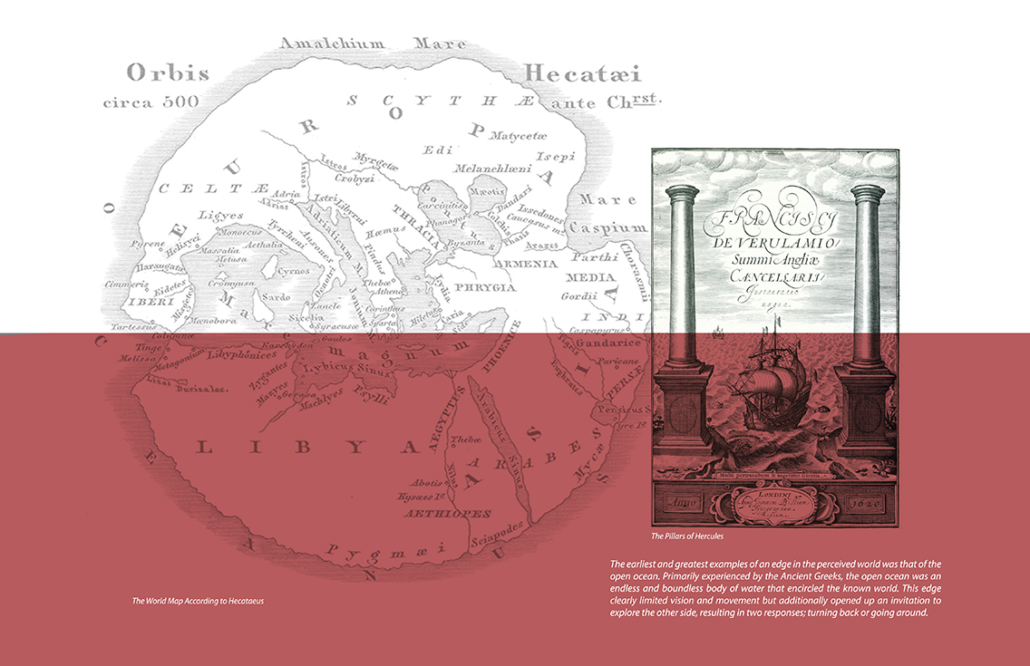
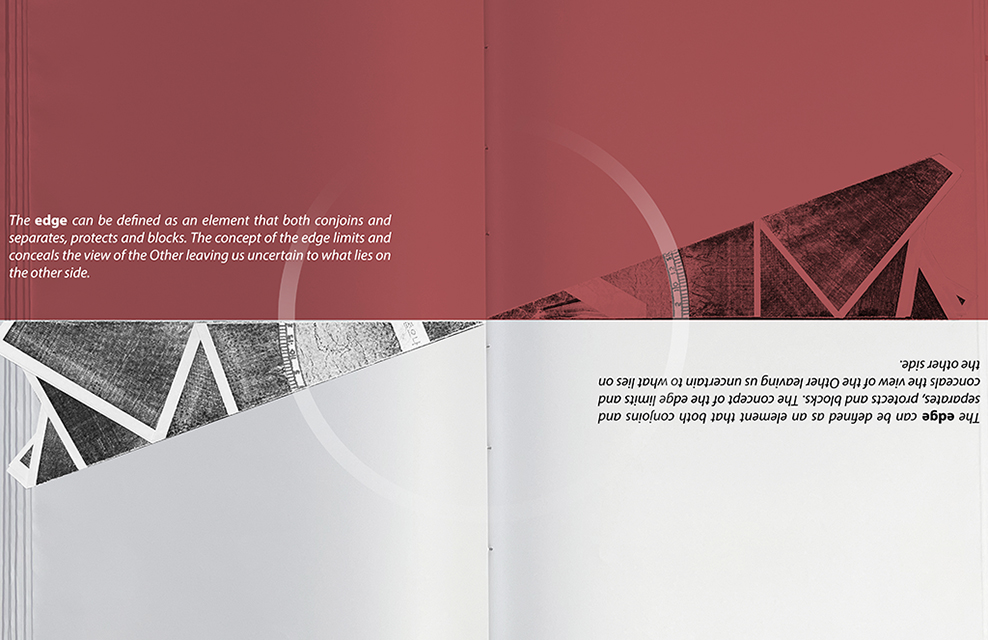
![[IN]visible_site - Ying Xuan Tan](https://www.studyarchitecture.com/wp-content/uploads/INvisible_site-Ying-Xuan-Tan-1030x644.png)
![[IN]visible_1-render - Ying Xuan Tan](https://www.studyarchitecture.com/wp-content/uploads/INvisible_1-render-Ying-Xuan-Tan-1030x579.png)
![[IN]visible_2-render - Ying Xuan Tan](https://www.studyarchitecture.com/wp-content/uploads/INvisible_2-render-Ying-Xuan-Tan-1030x579.png)
![[IN]visible_longsection - Ying Xuan Tan](https://www.studyarchitecture.com/wp-content/uploads/INvisible_longsection-Ying-Xuan-Tan-1030x297.png)
![[IN]visible_plan1 - Ying Xuan Tan](https://www.studyarchitecture.com/wp-content/uploads/INvisible_plan1-Ying-Xuan-Tan-1030x1030.png)
![[IN]visible_plan2 - Ying Xuan Tan](https://www.studyarchitecture.com/wp-content/uploads/INvisible_plan2-Ying-Xuan-Tan-1030x1030.png)
![[IN]visible_short section - Ying Xuan Tan](https://www.studyarchitecture.com/wp-content/uploads/INvisible_short-section-Ying-Xuan-Tan-1030x386.png)

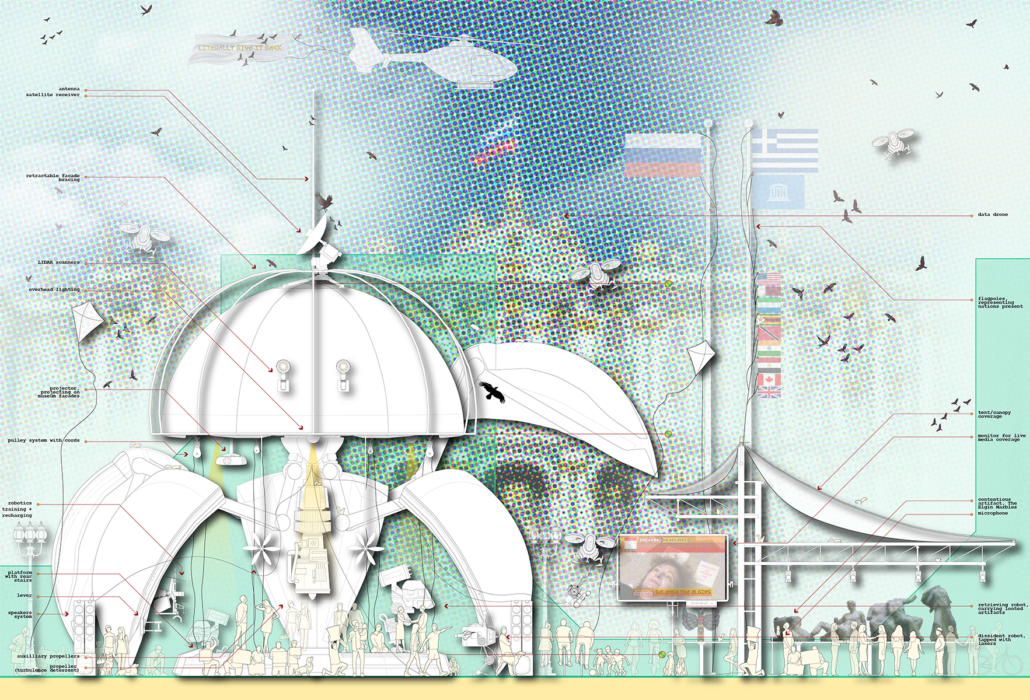
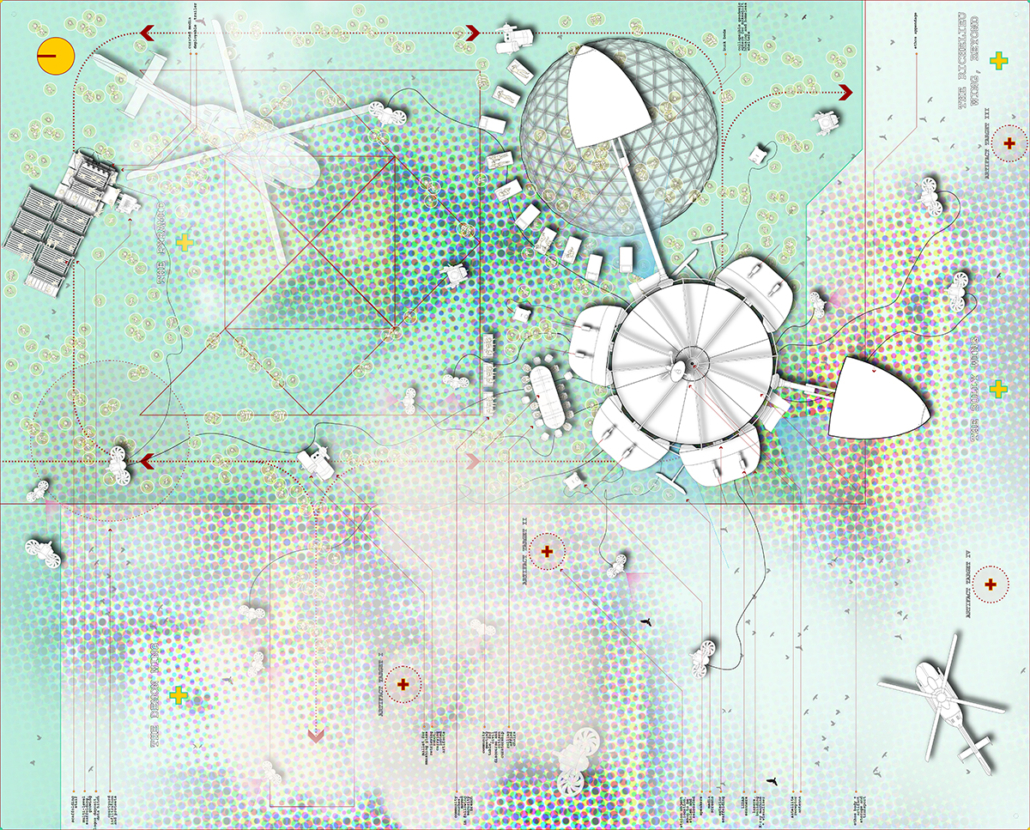










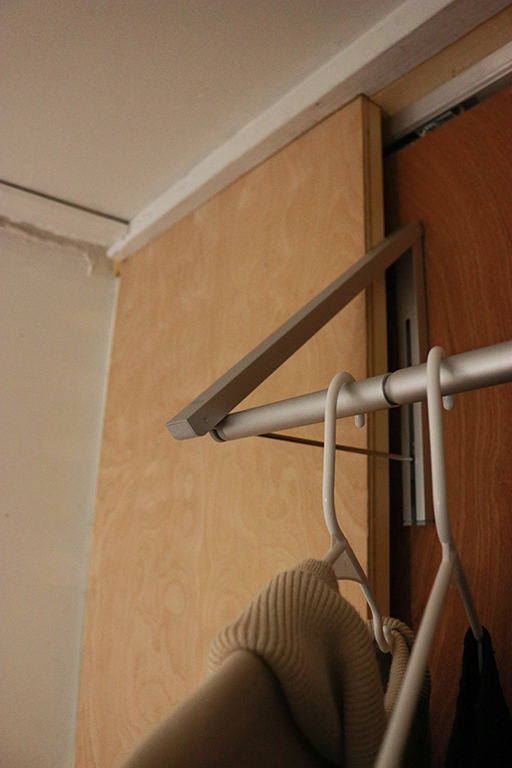



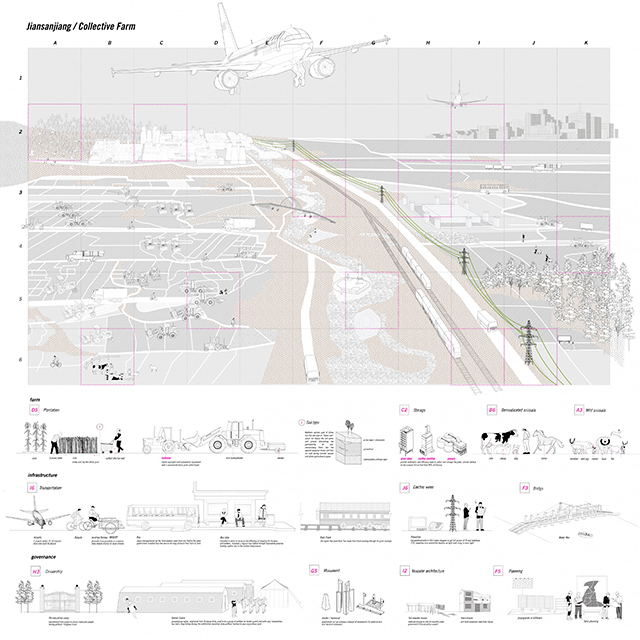




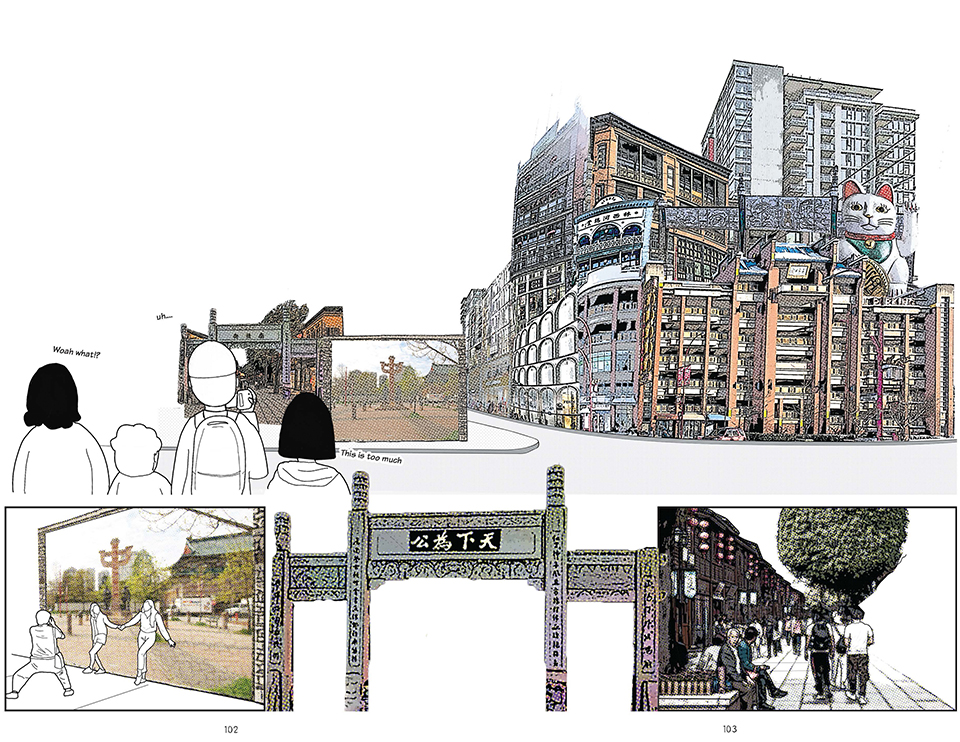







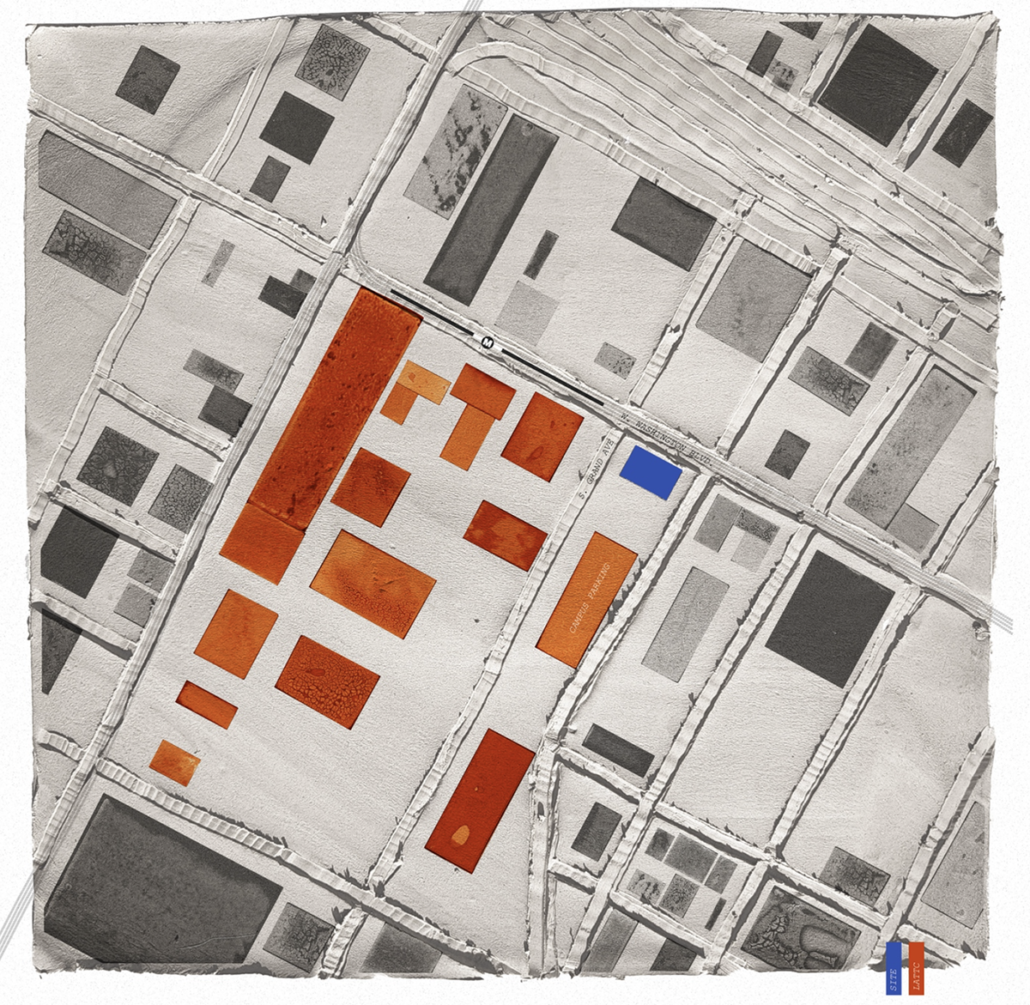
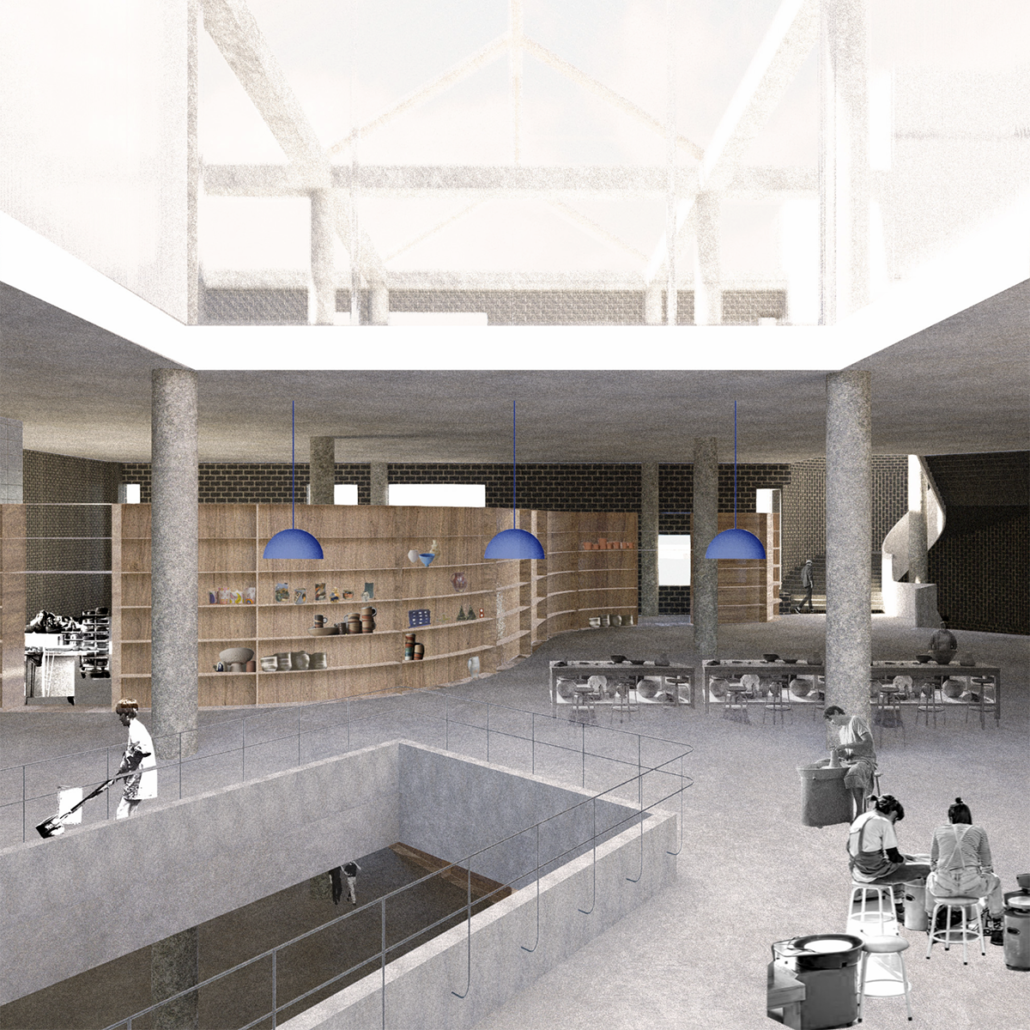







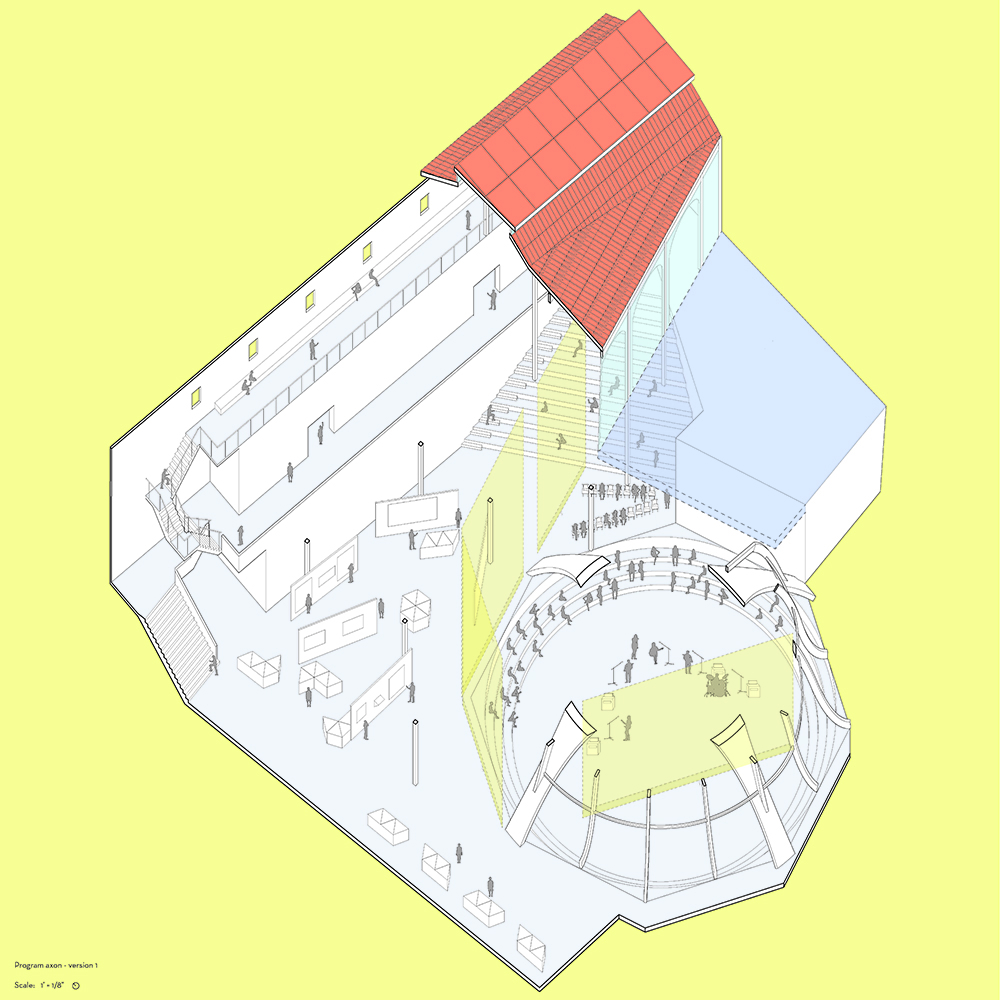

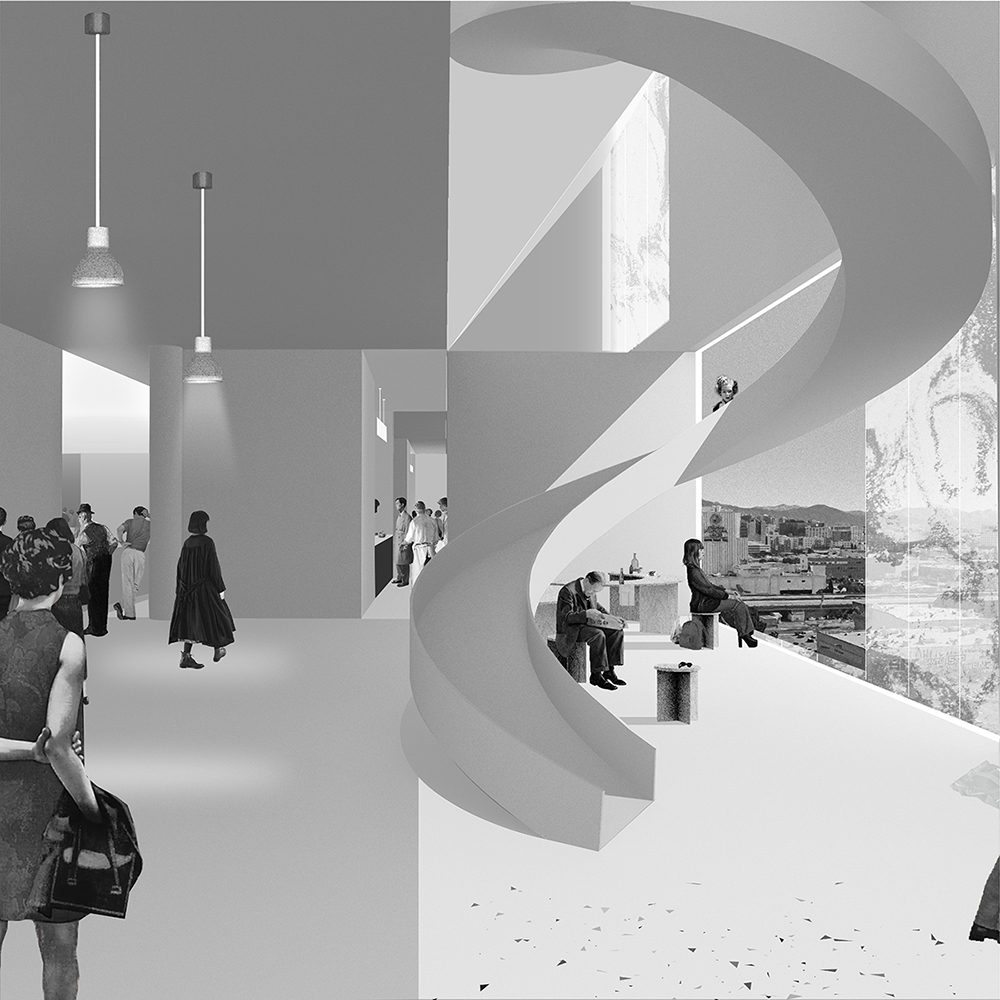



![wall section revised [Converted]](https://www.studyarchitecture.com/wp-content/uploads/Josue_05-Robert-Alexander.jpg)


